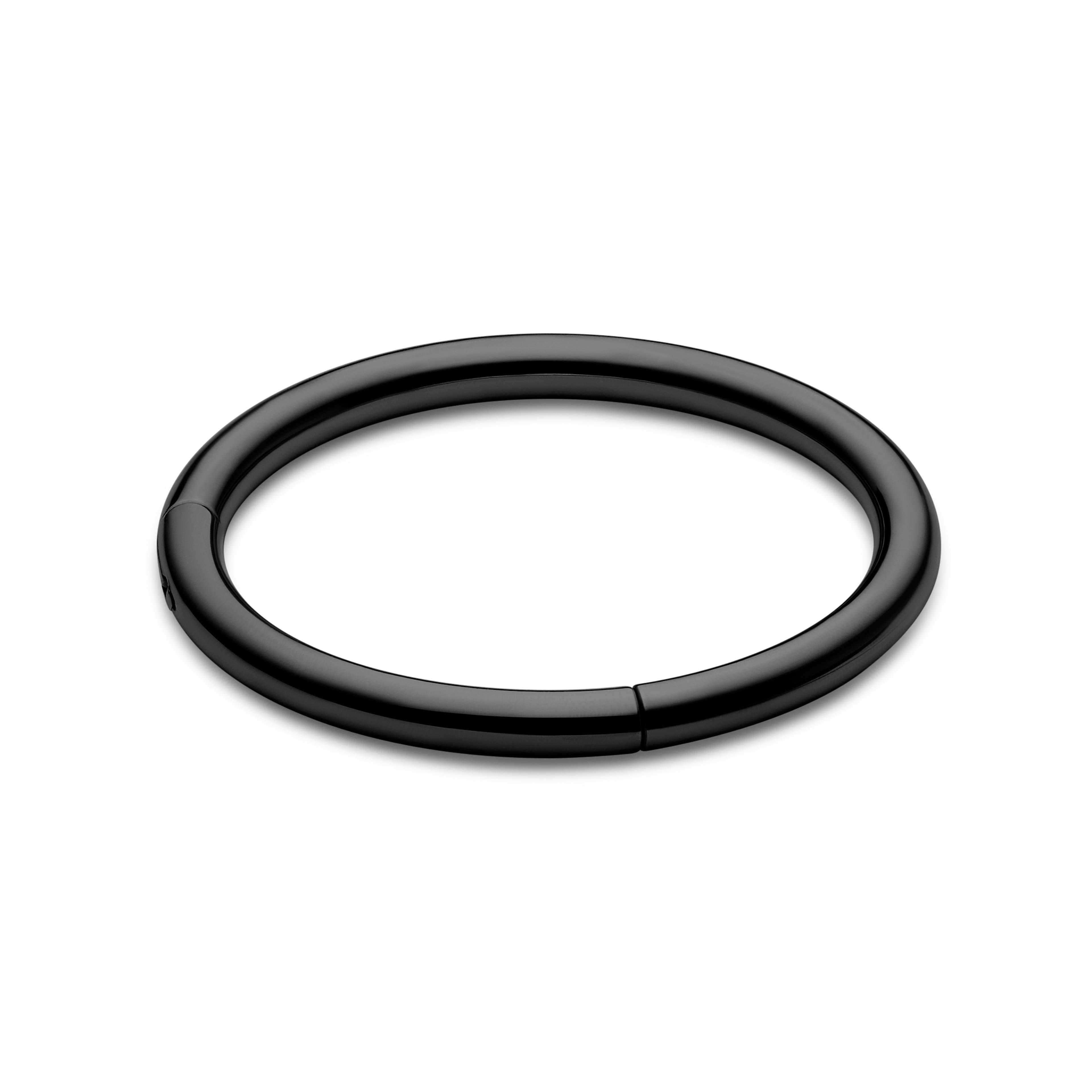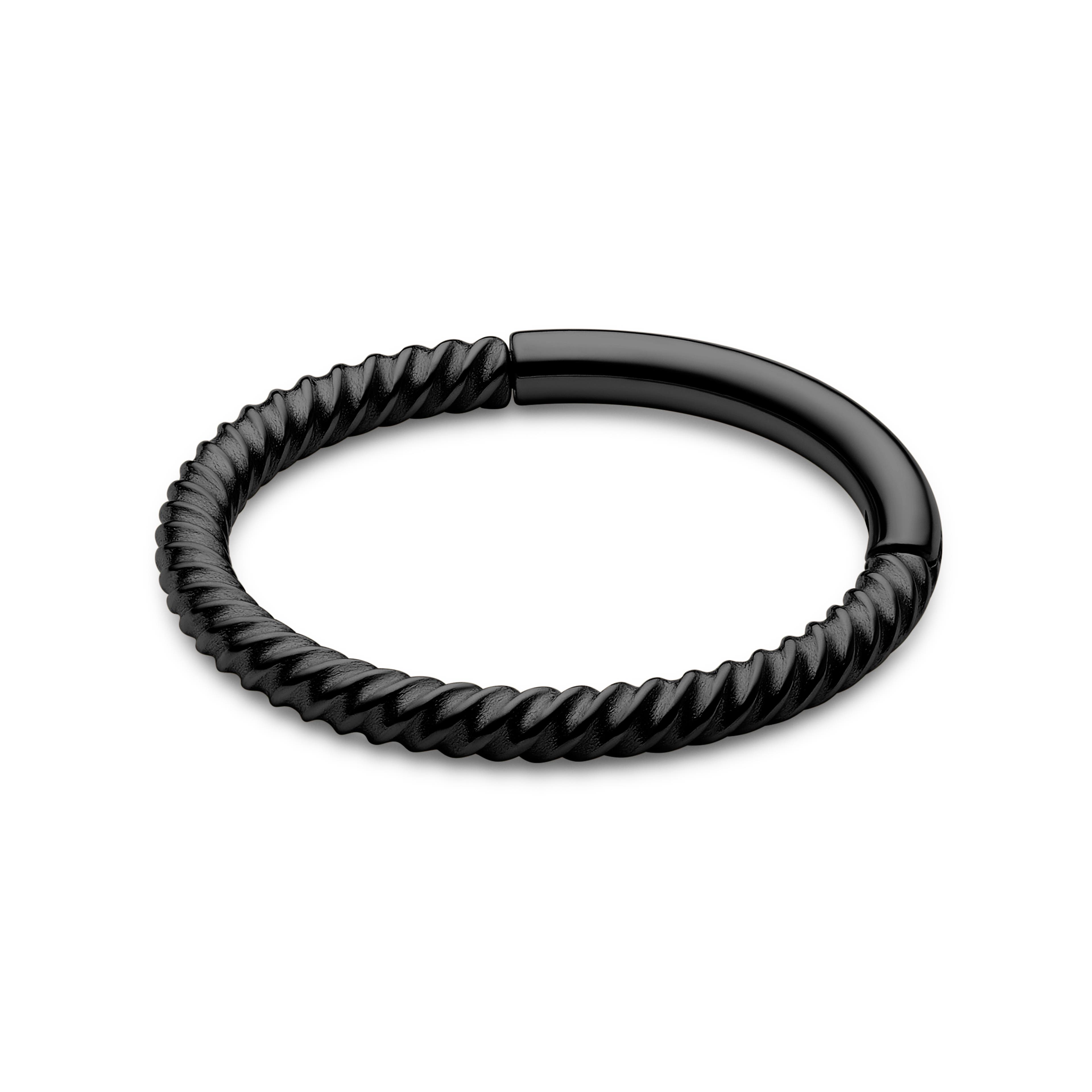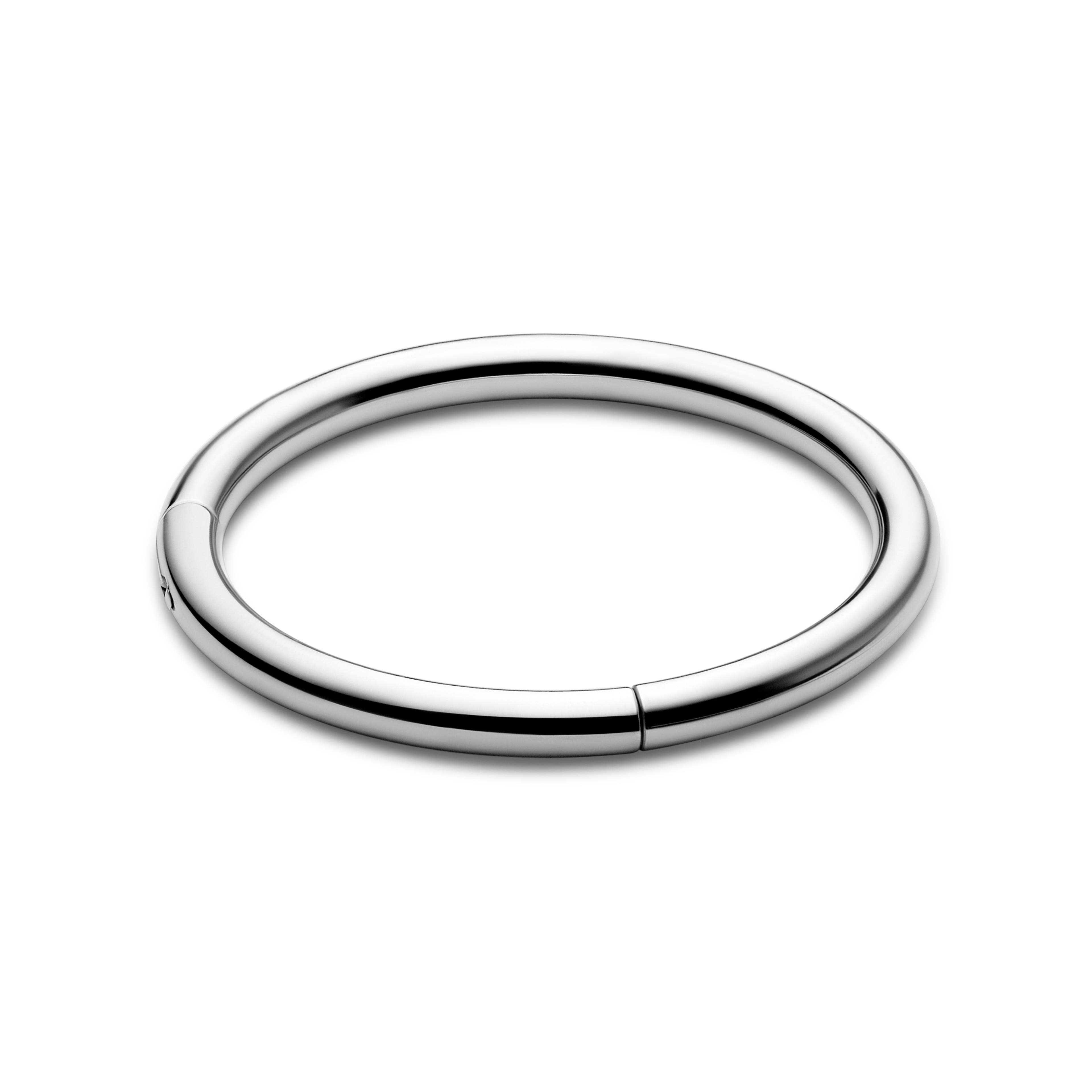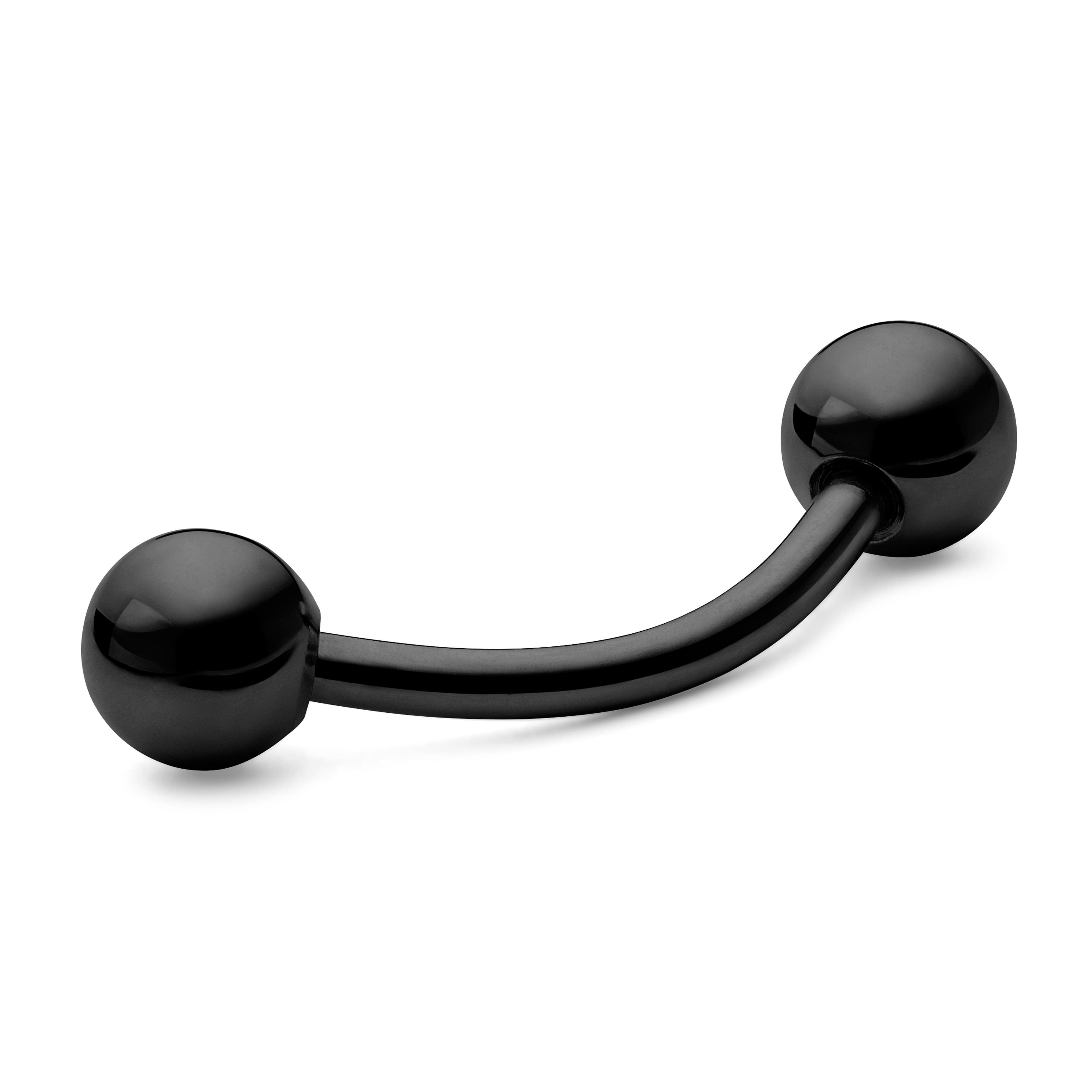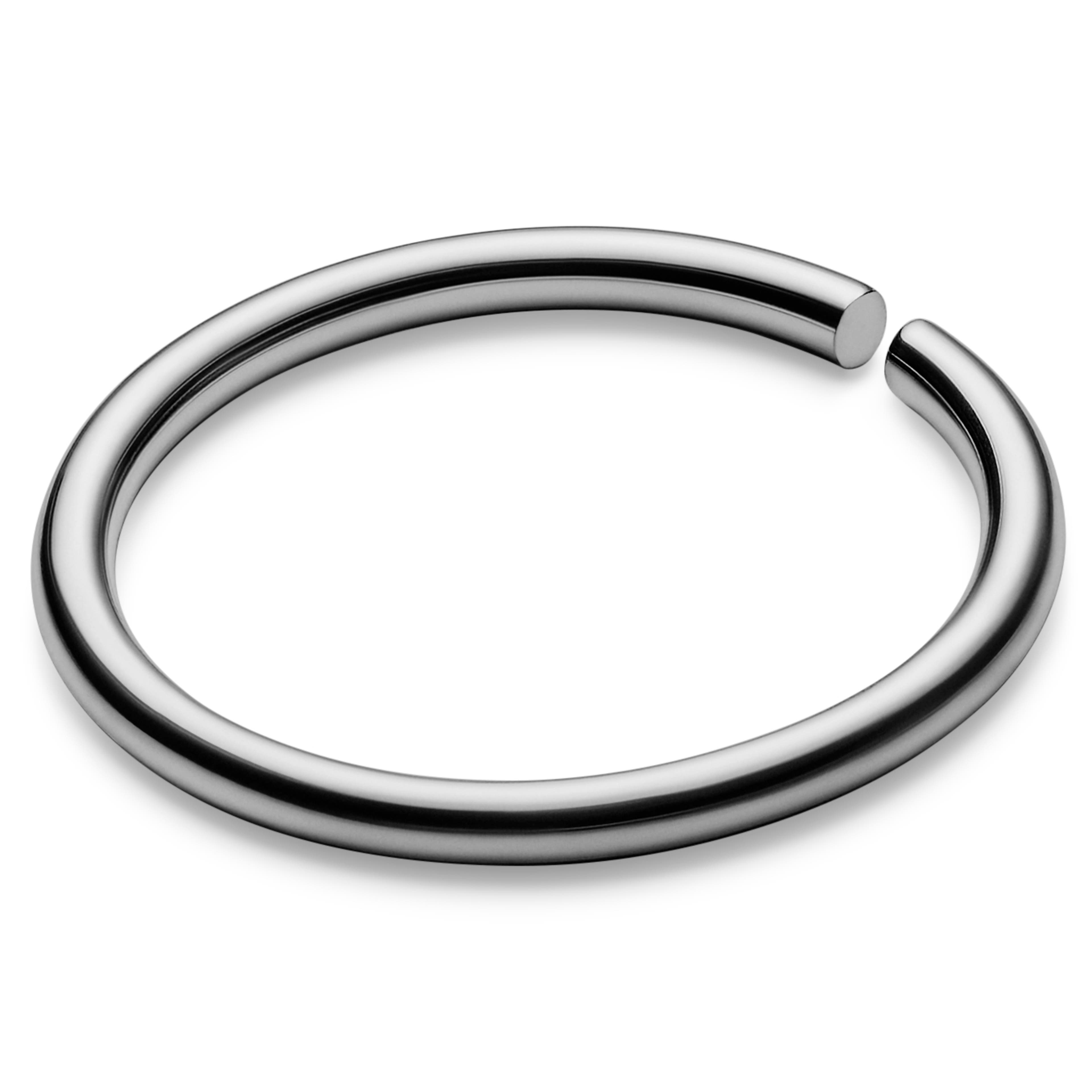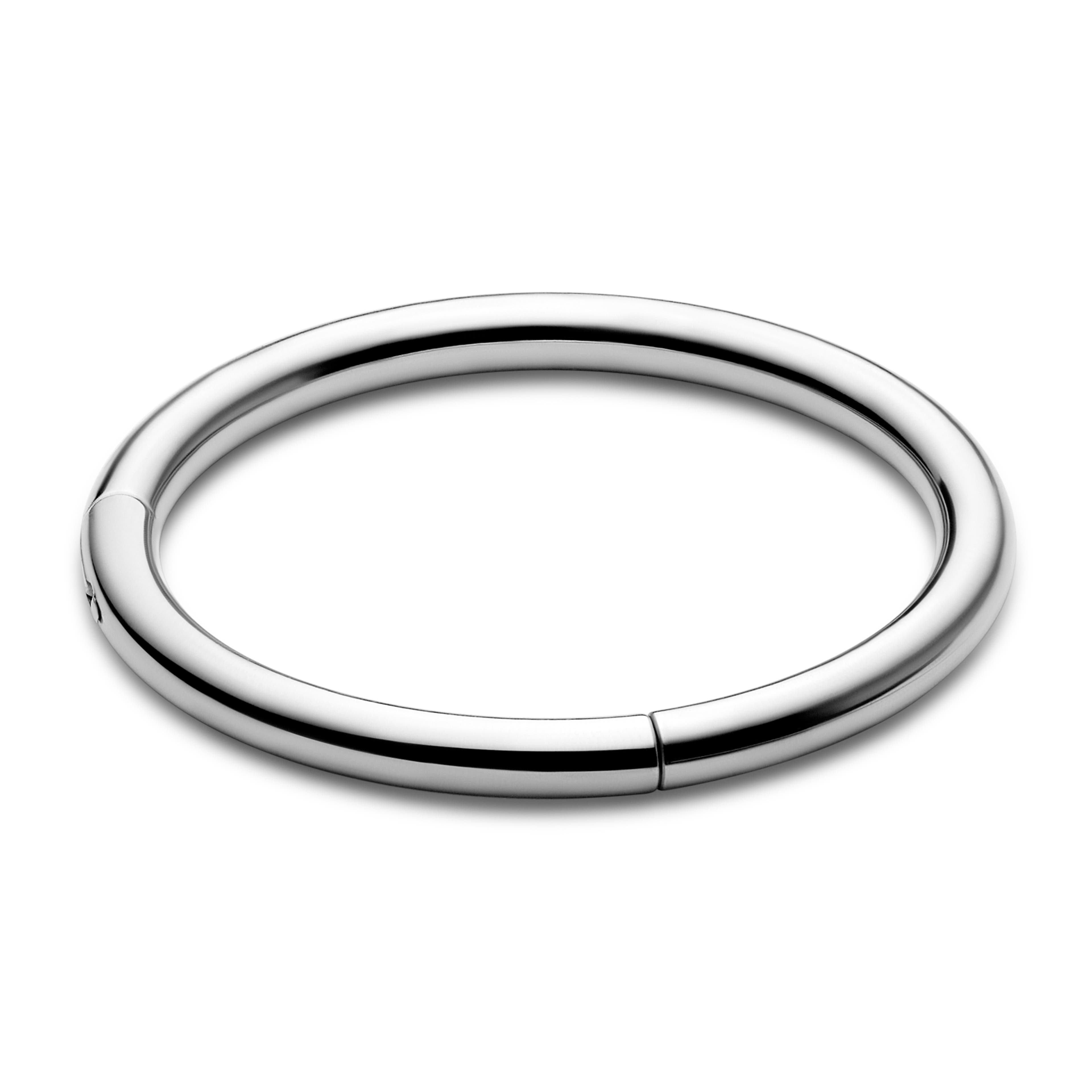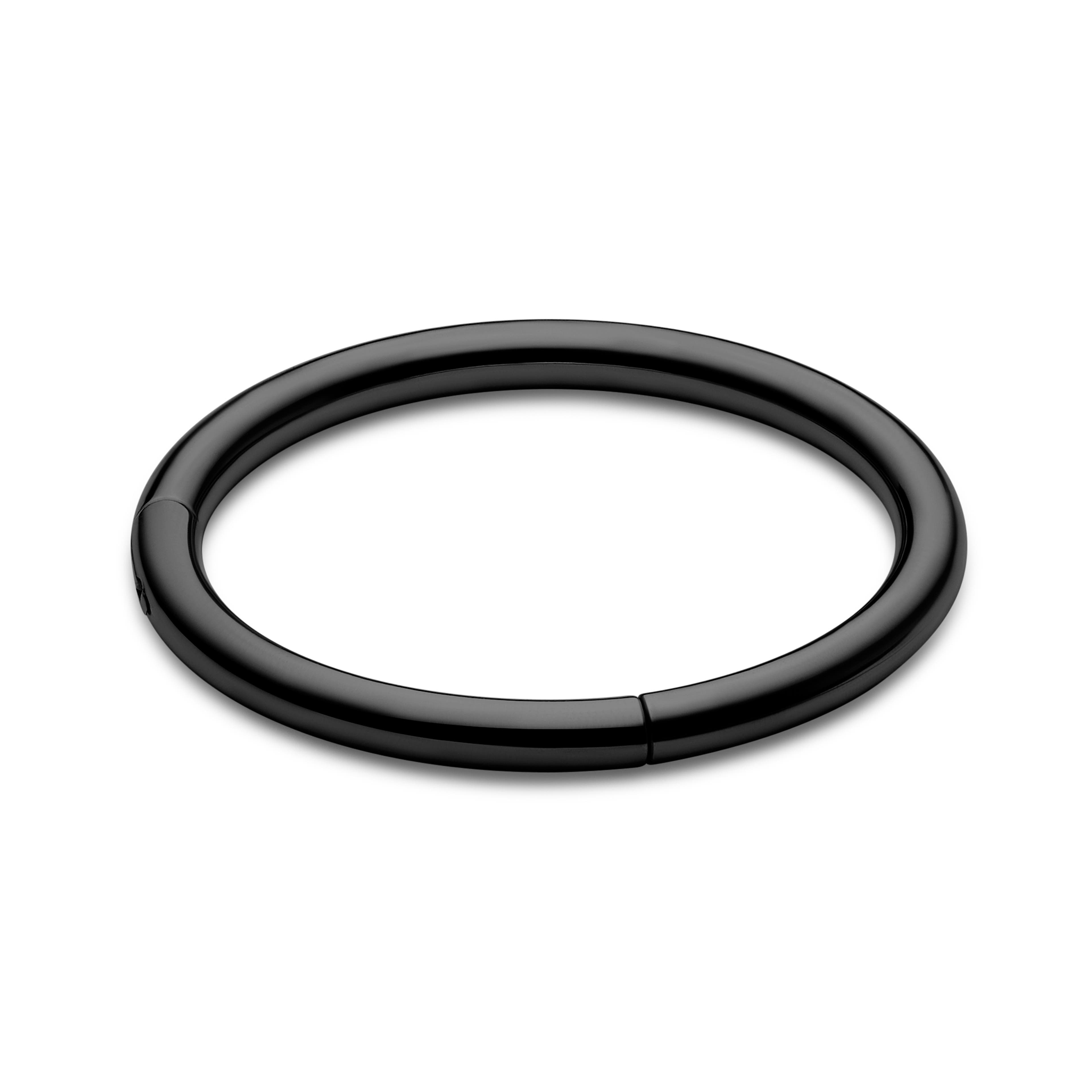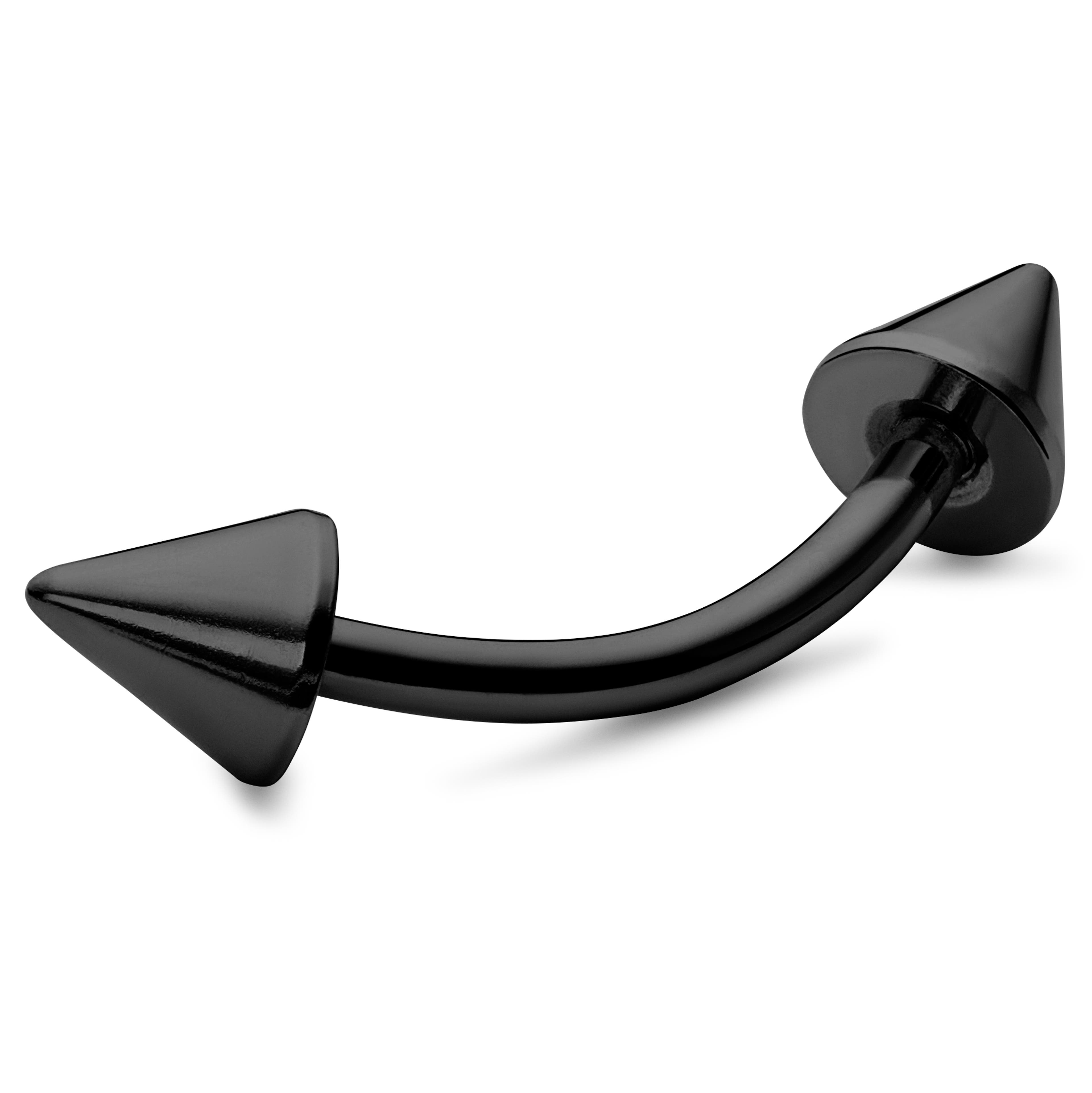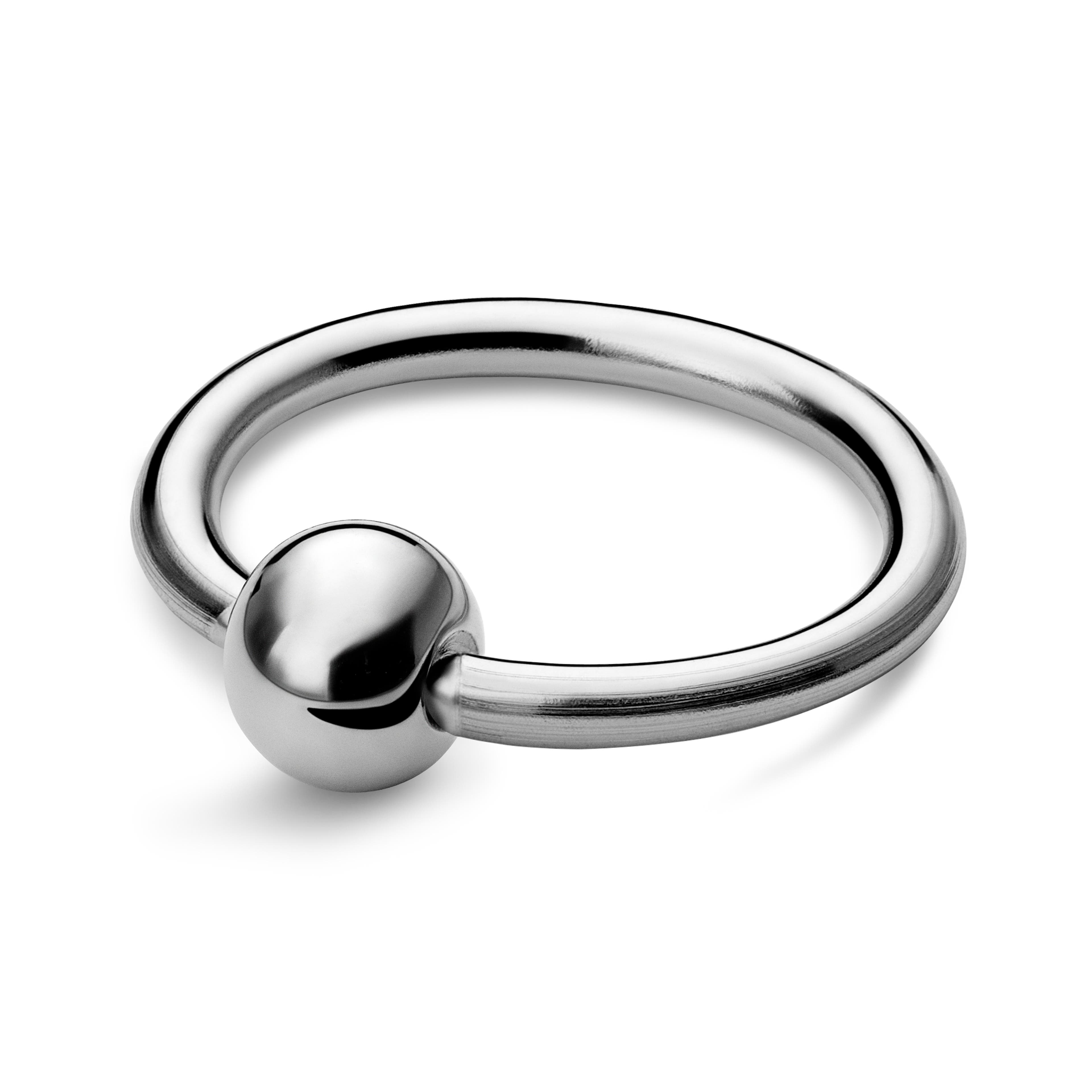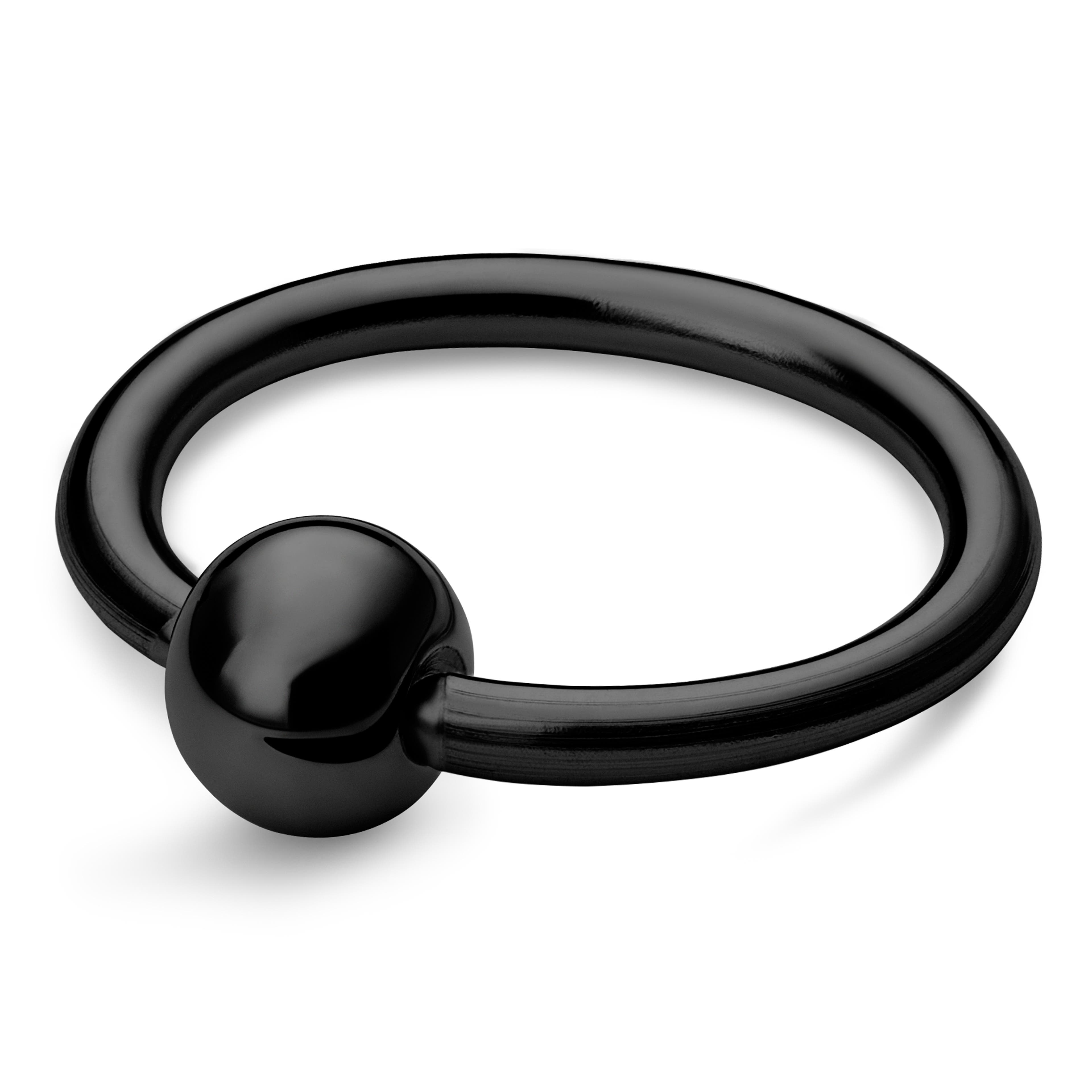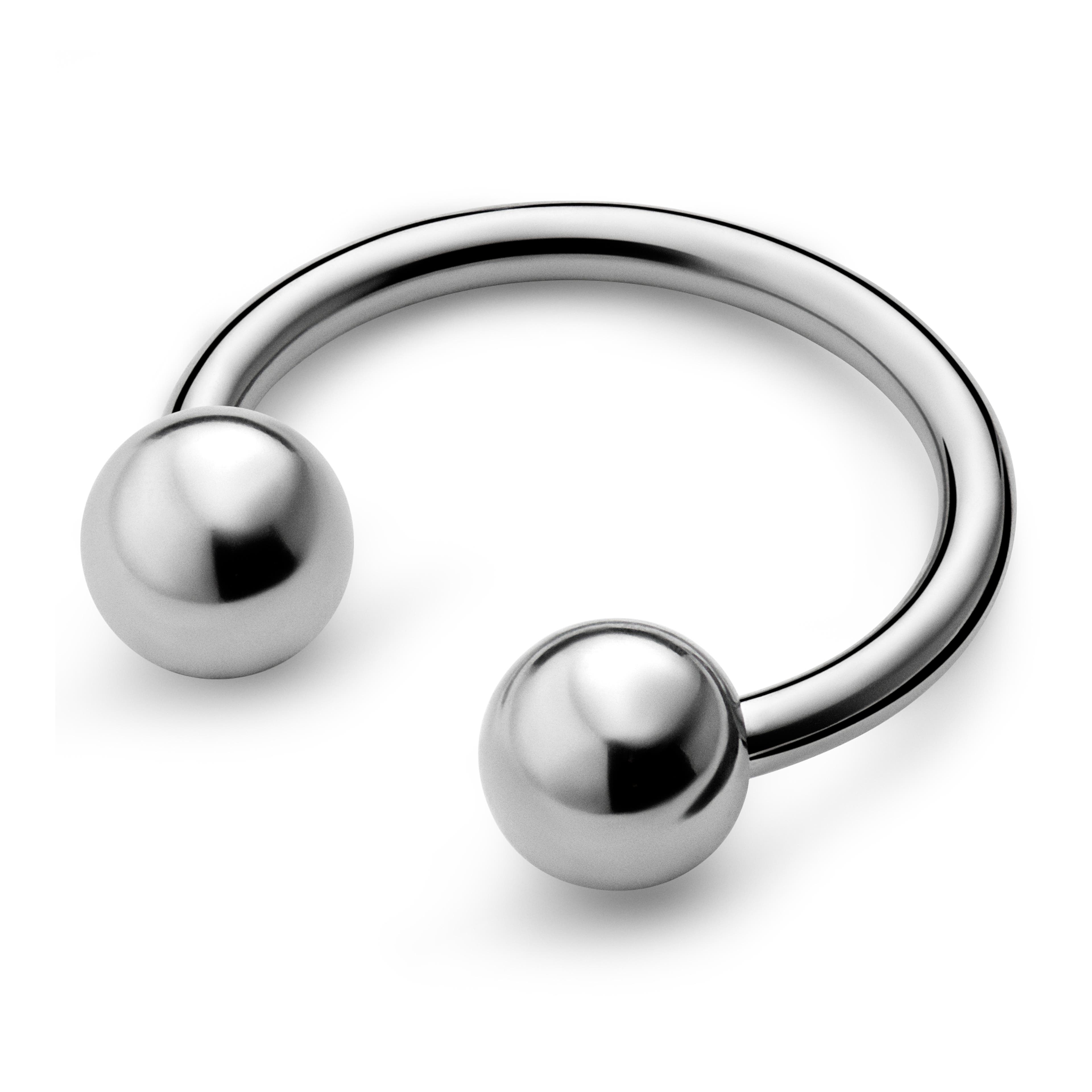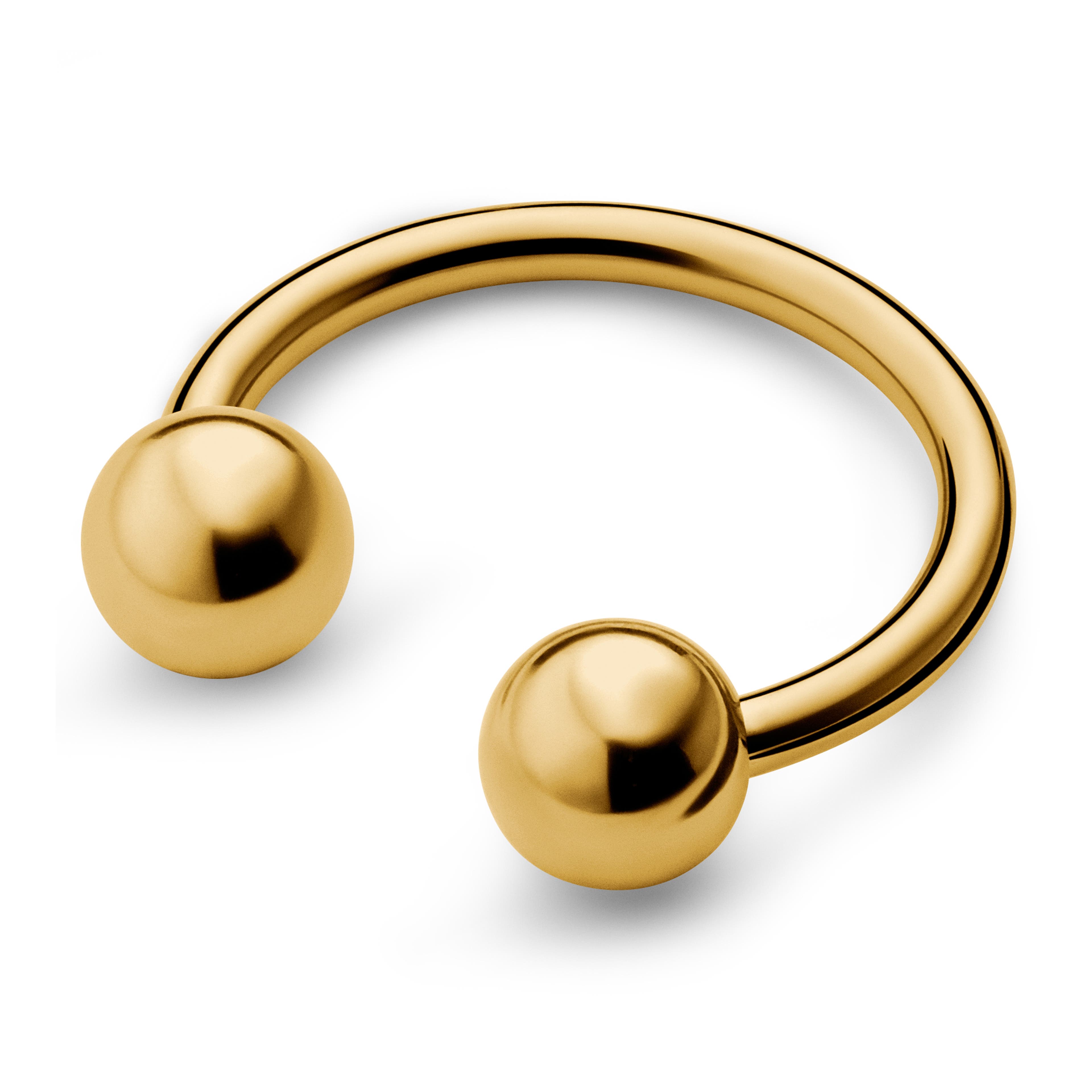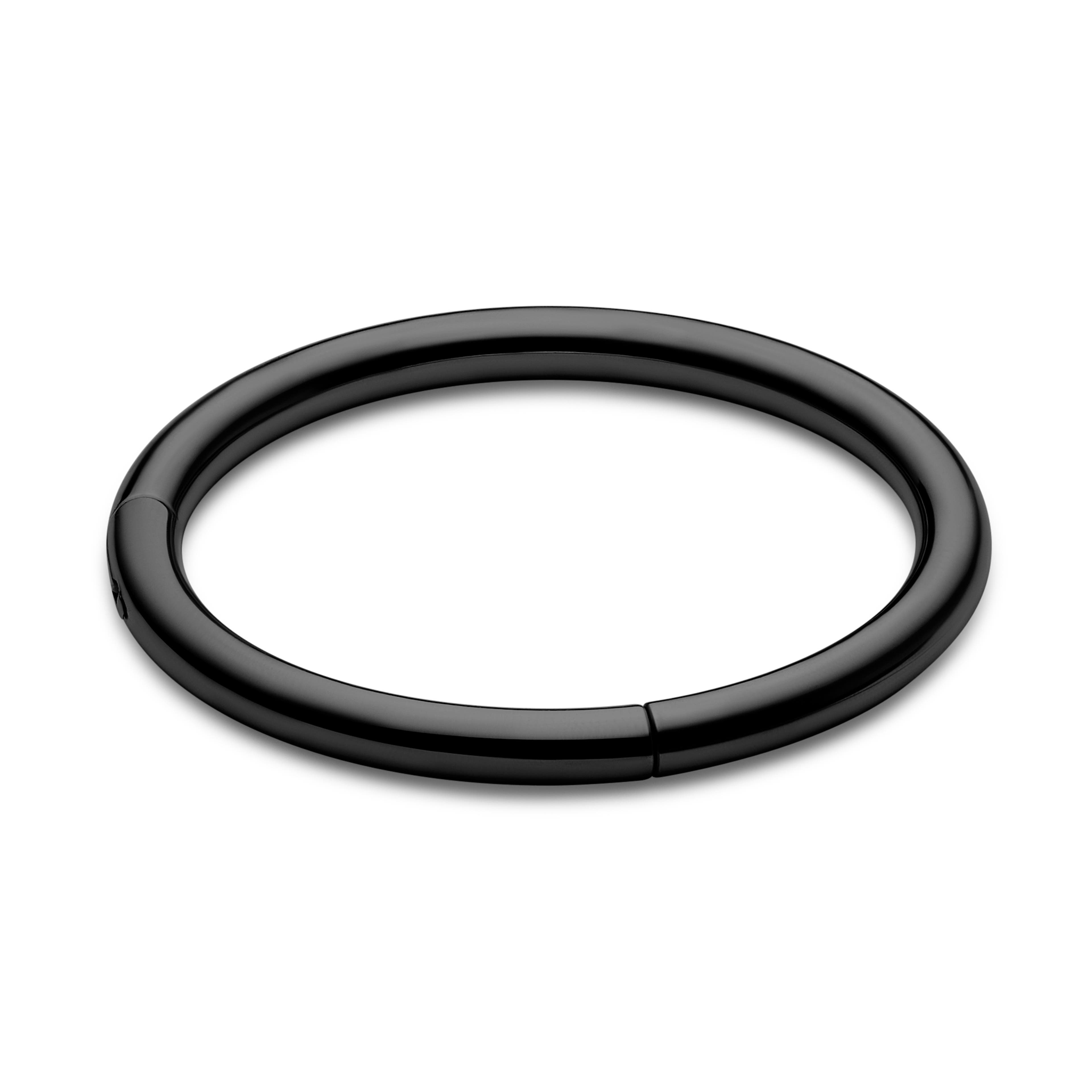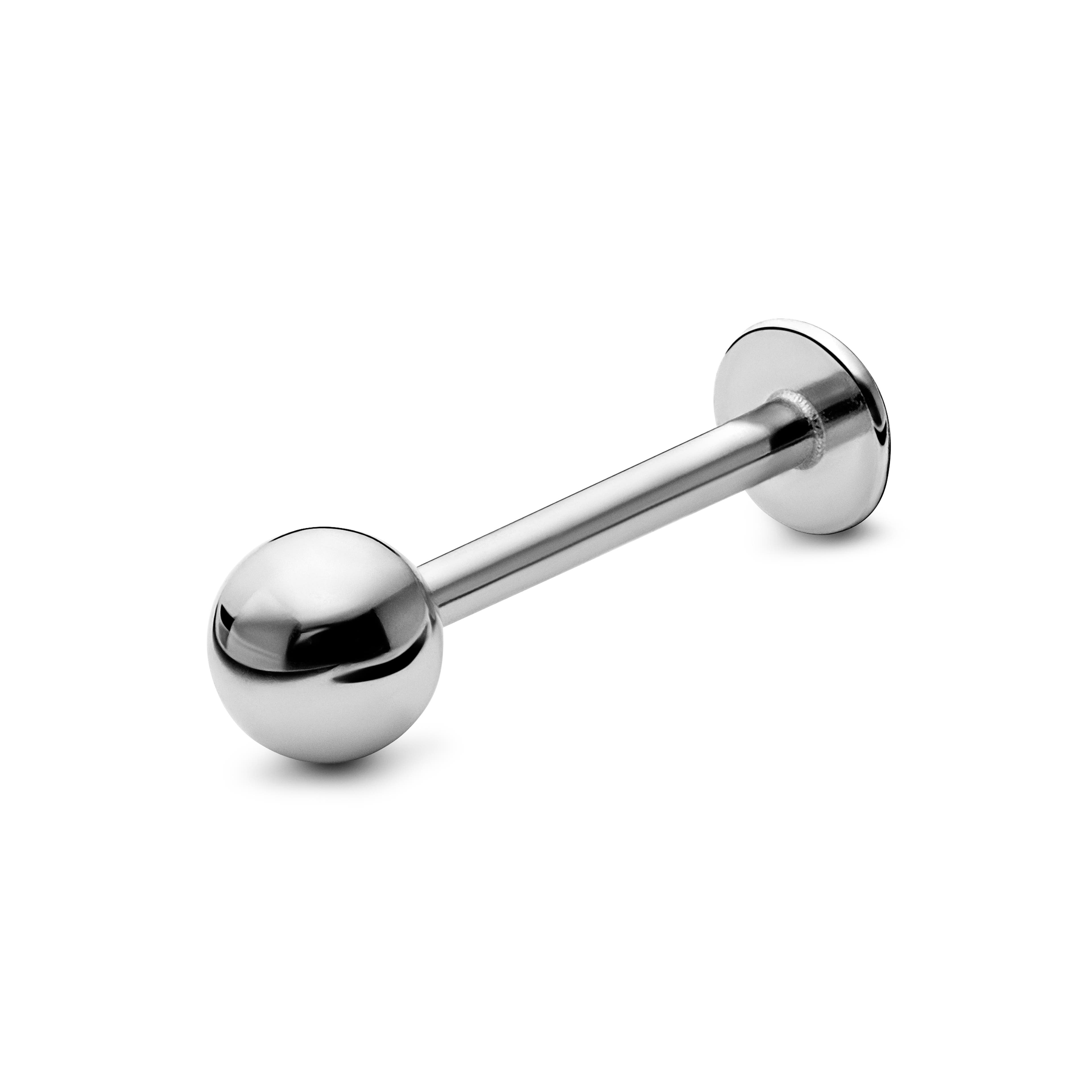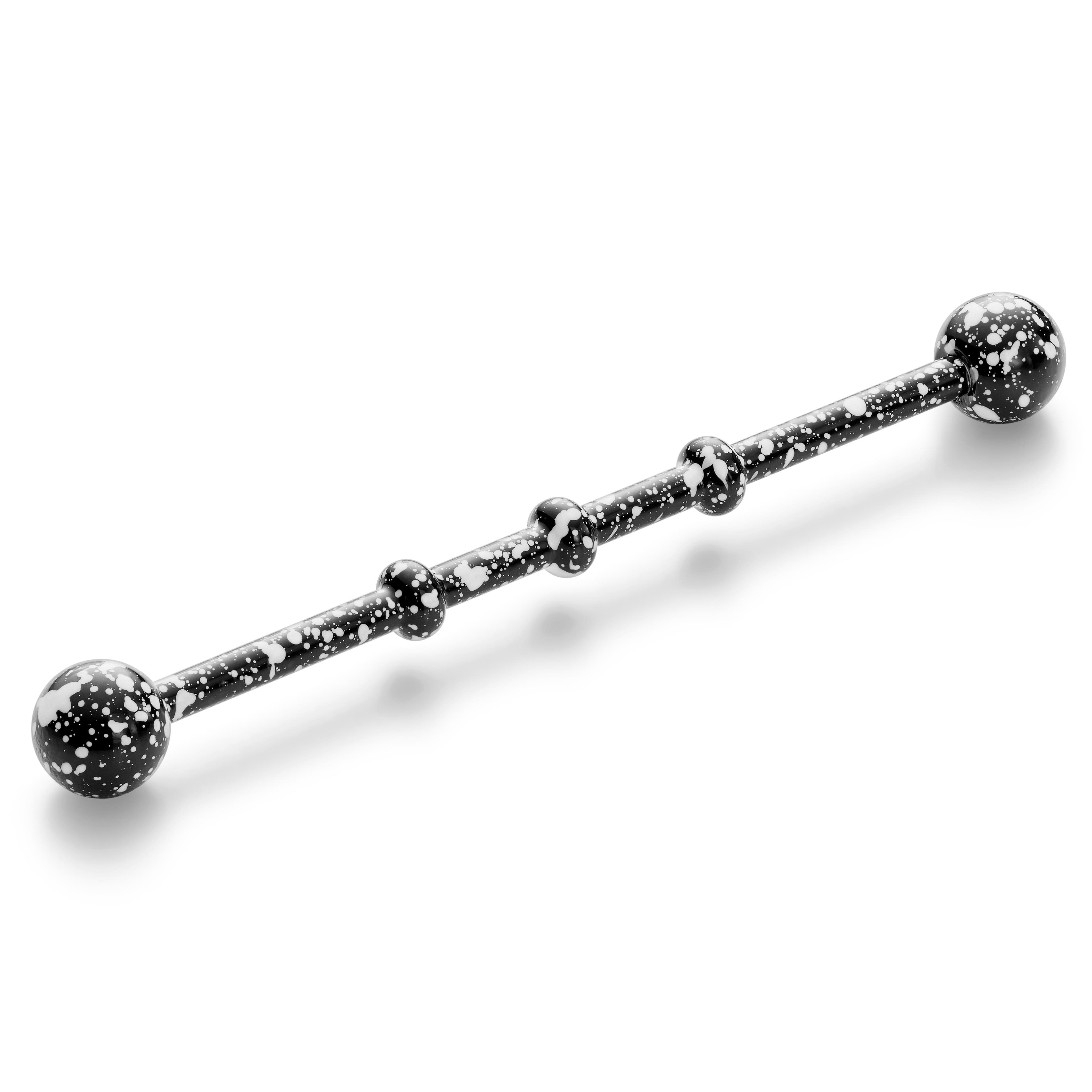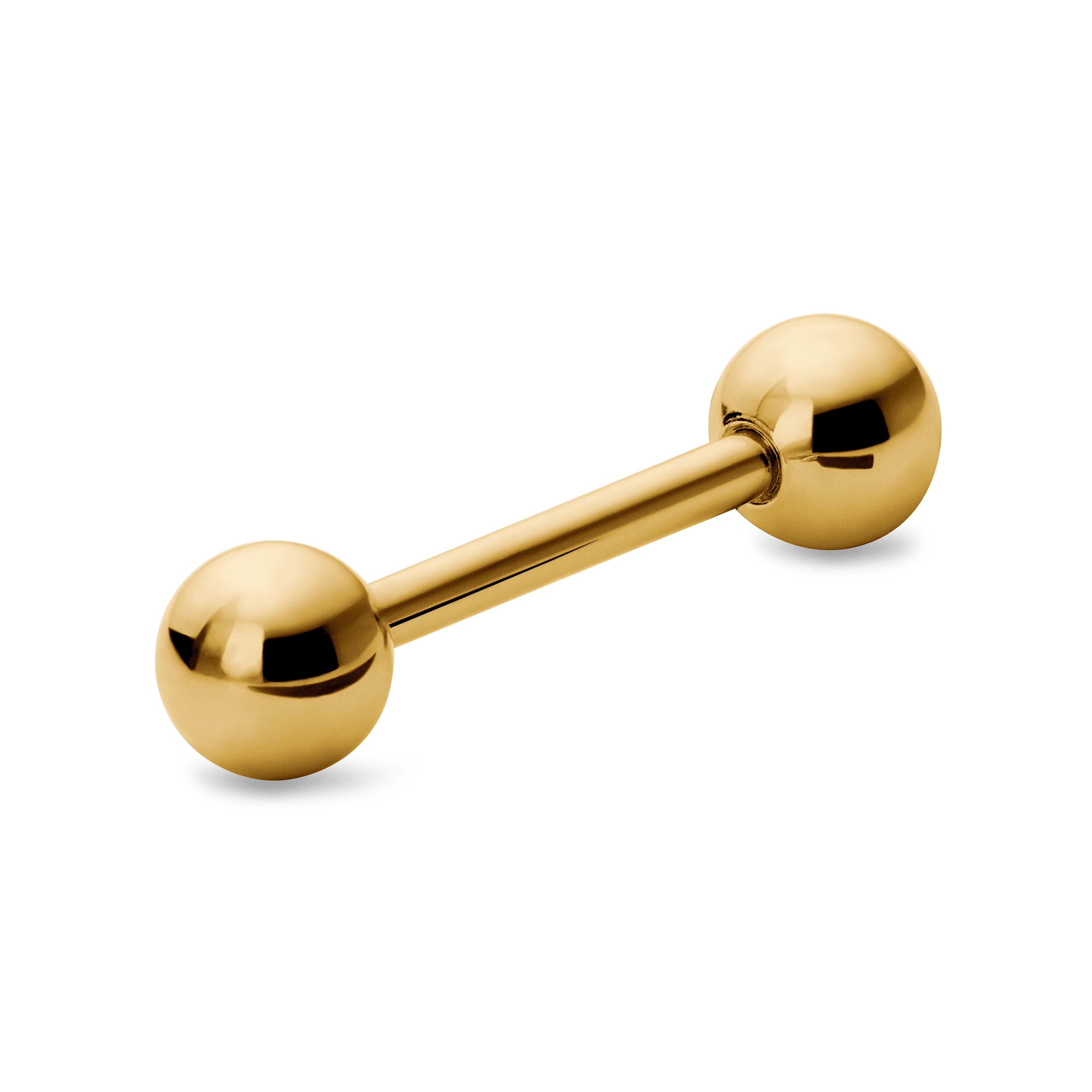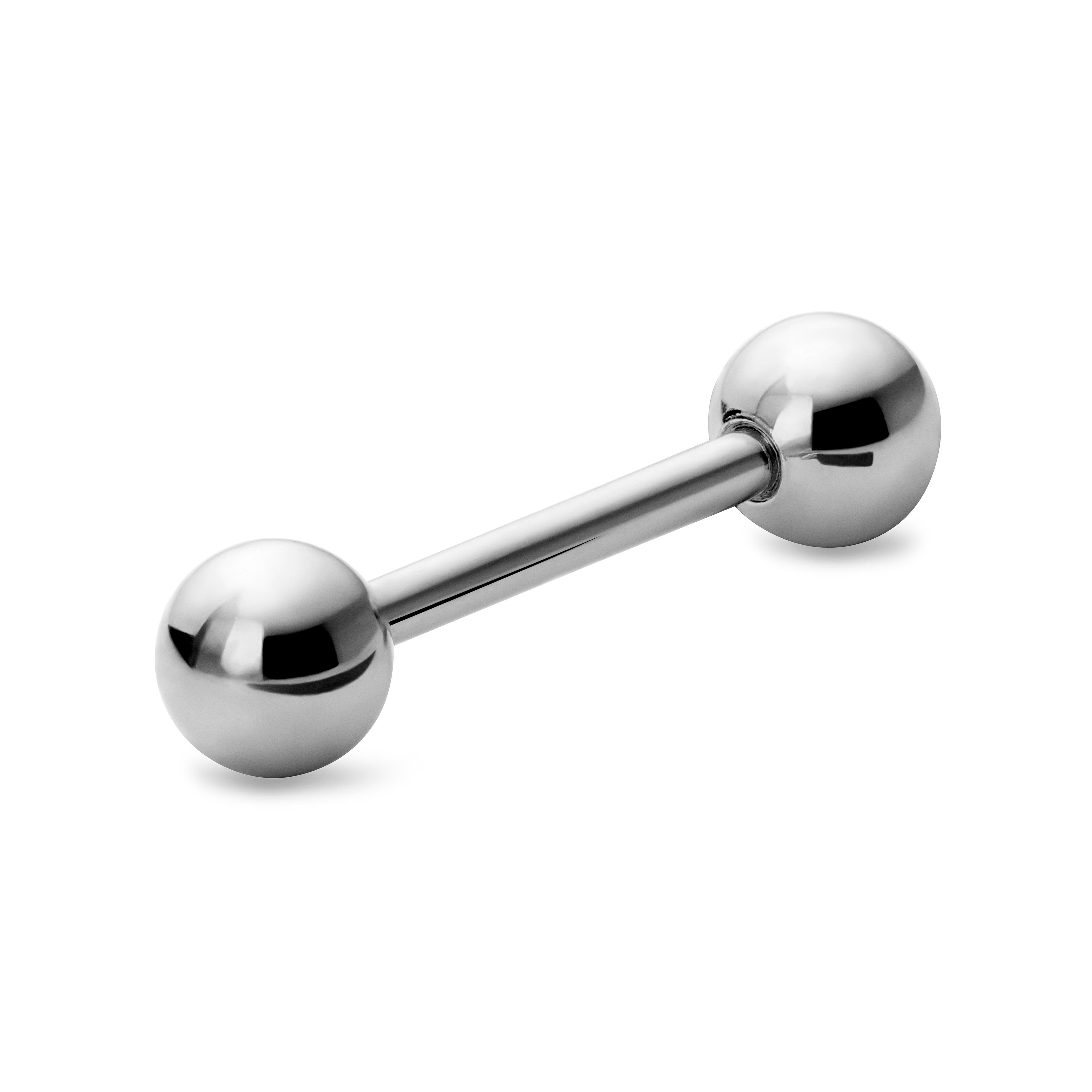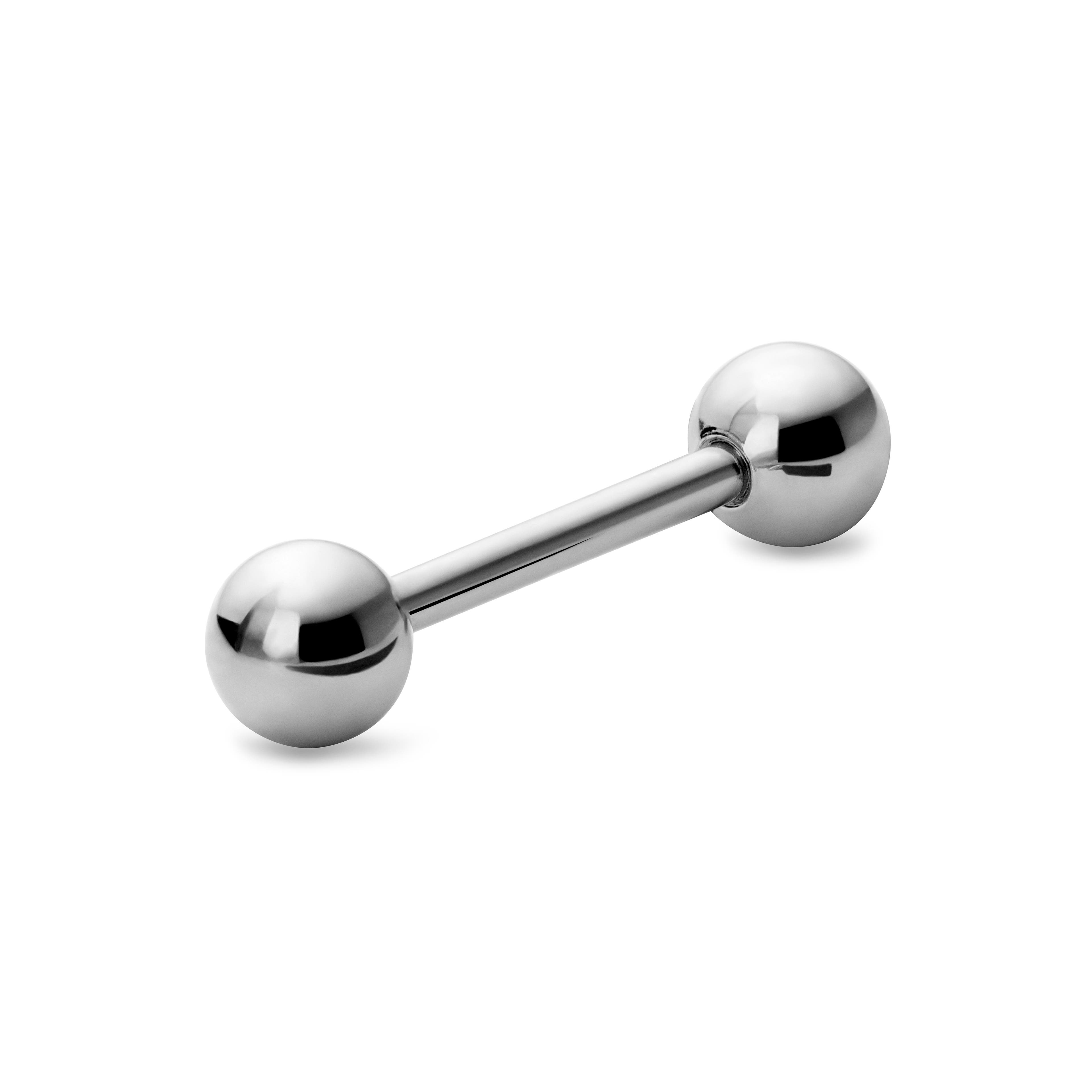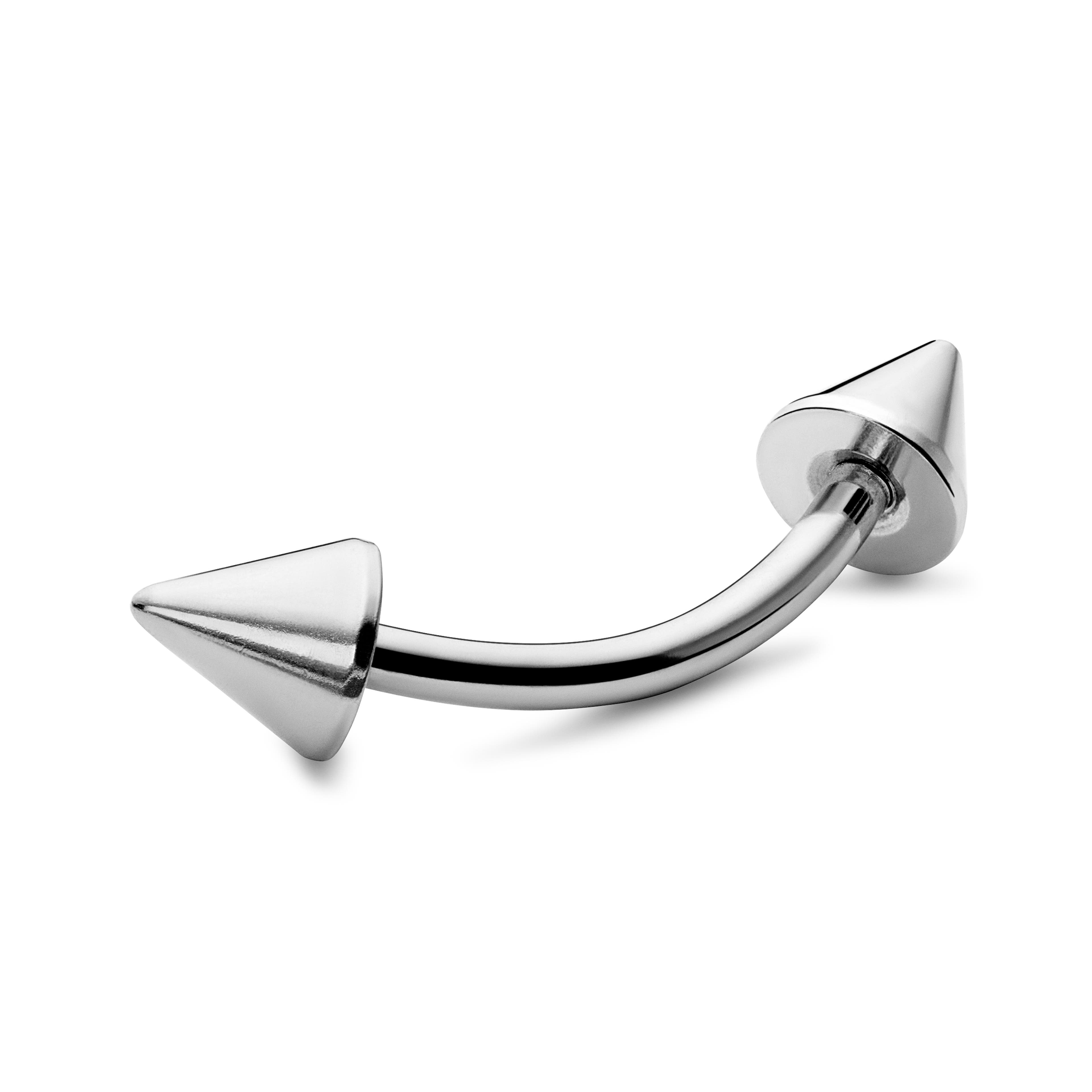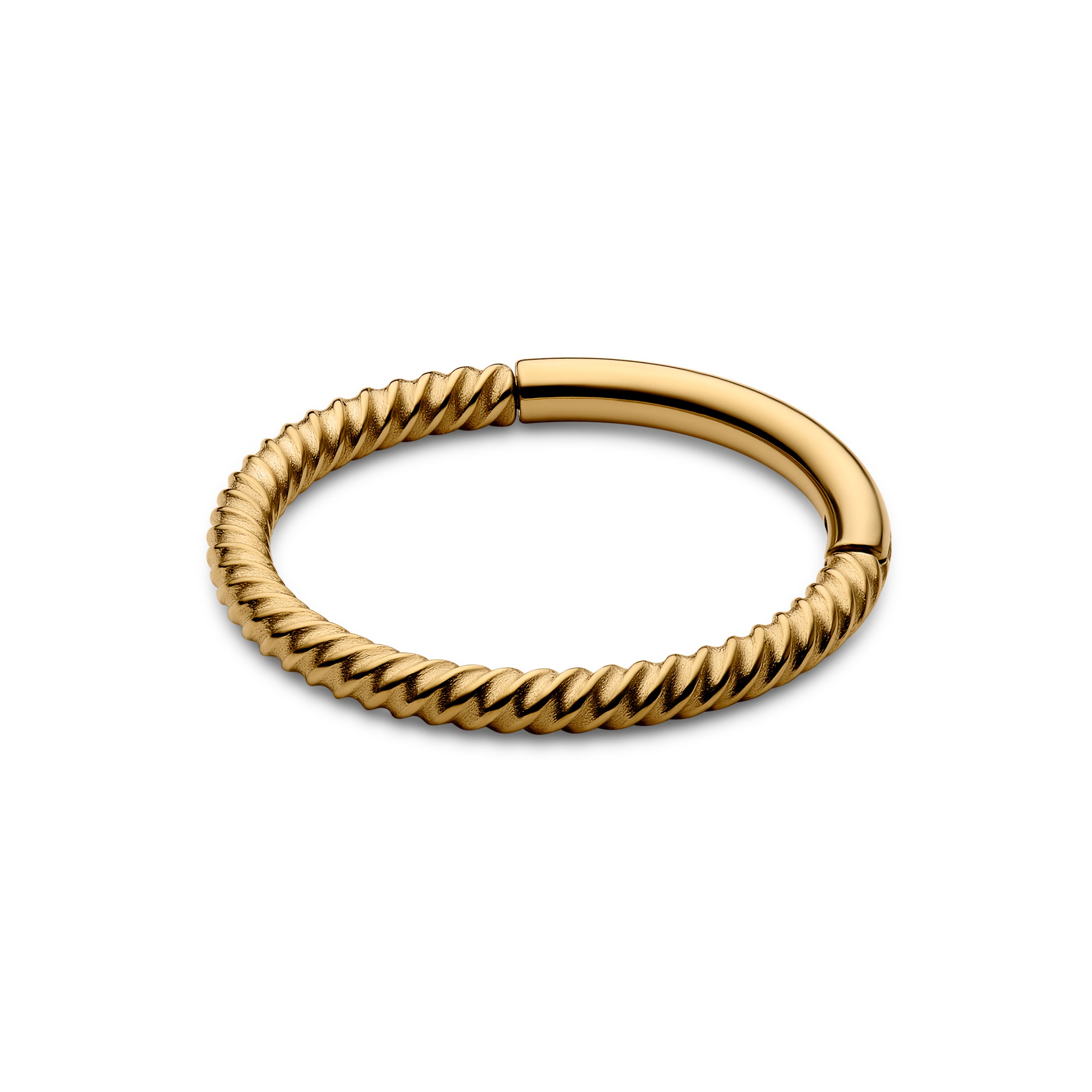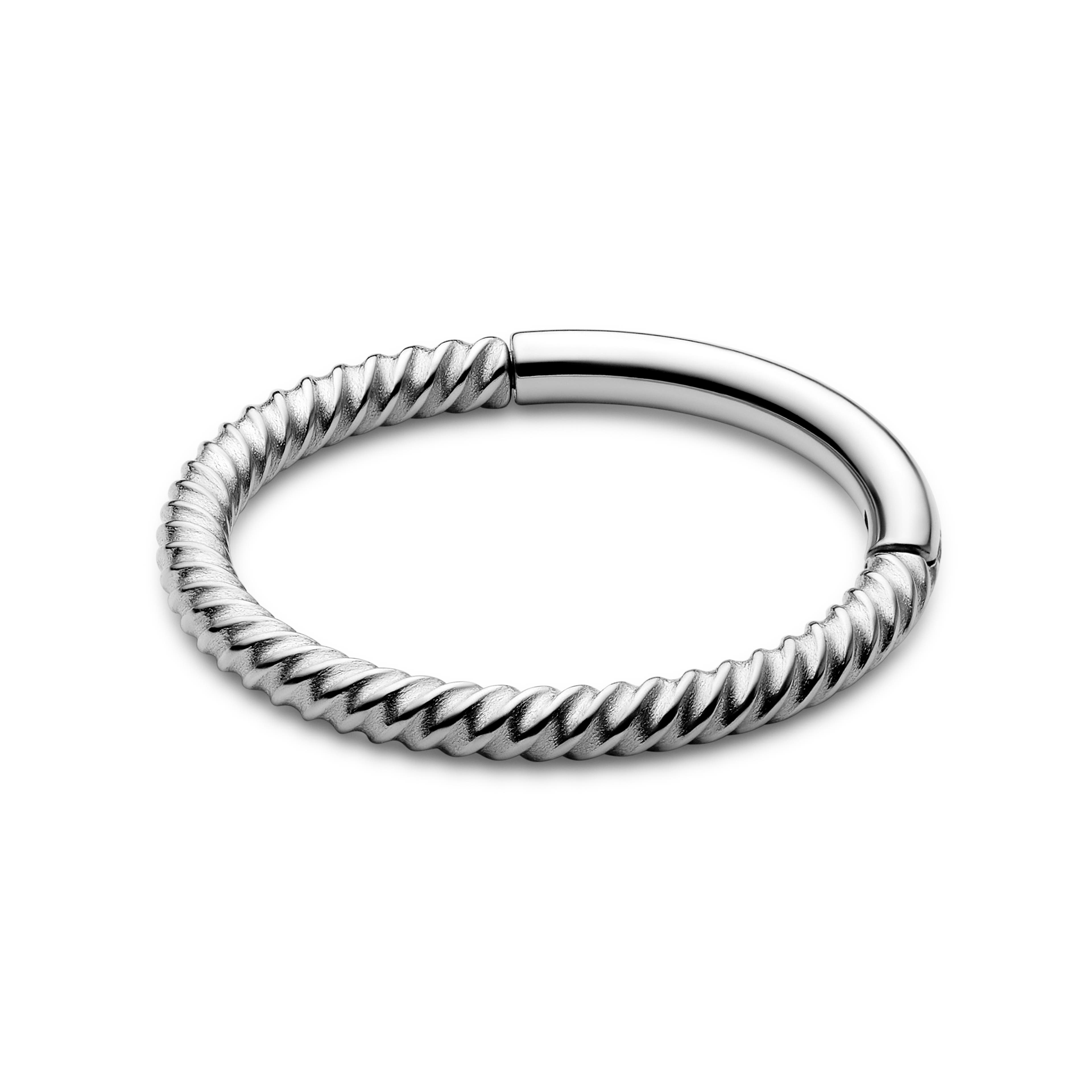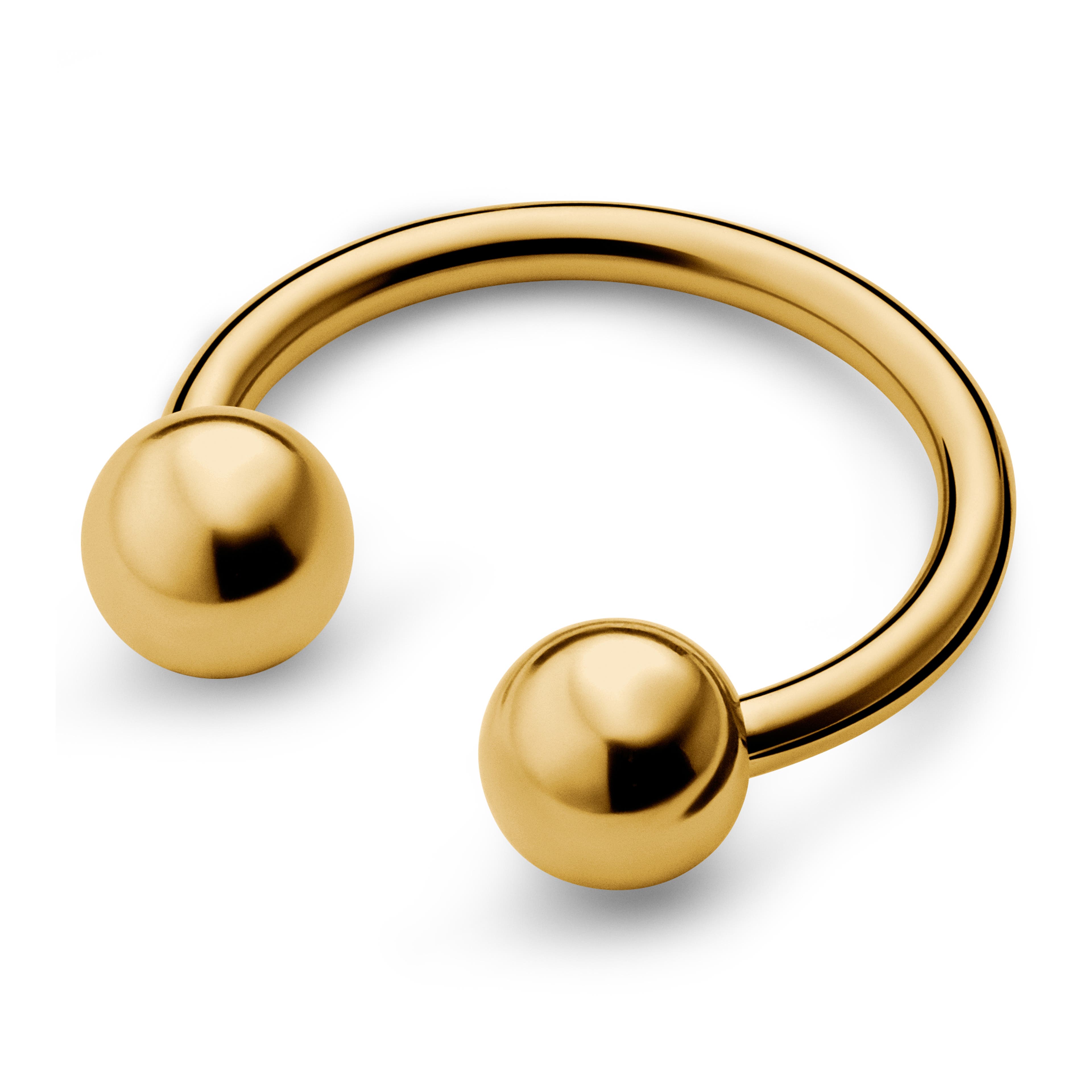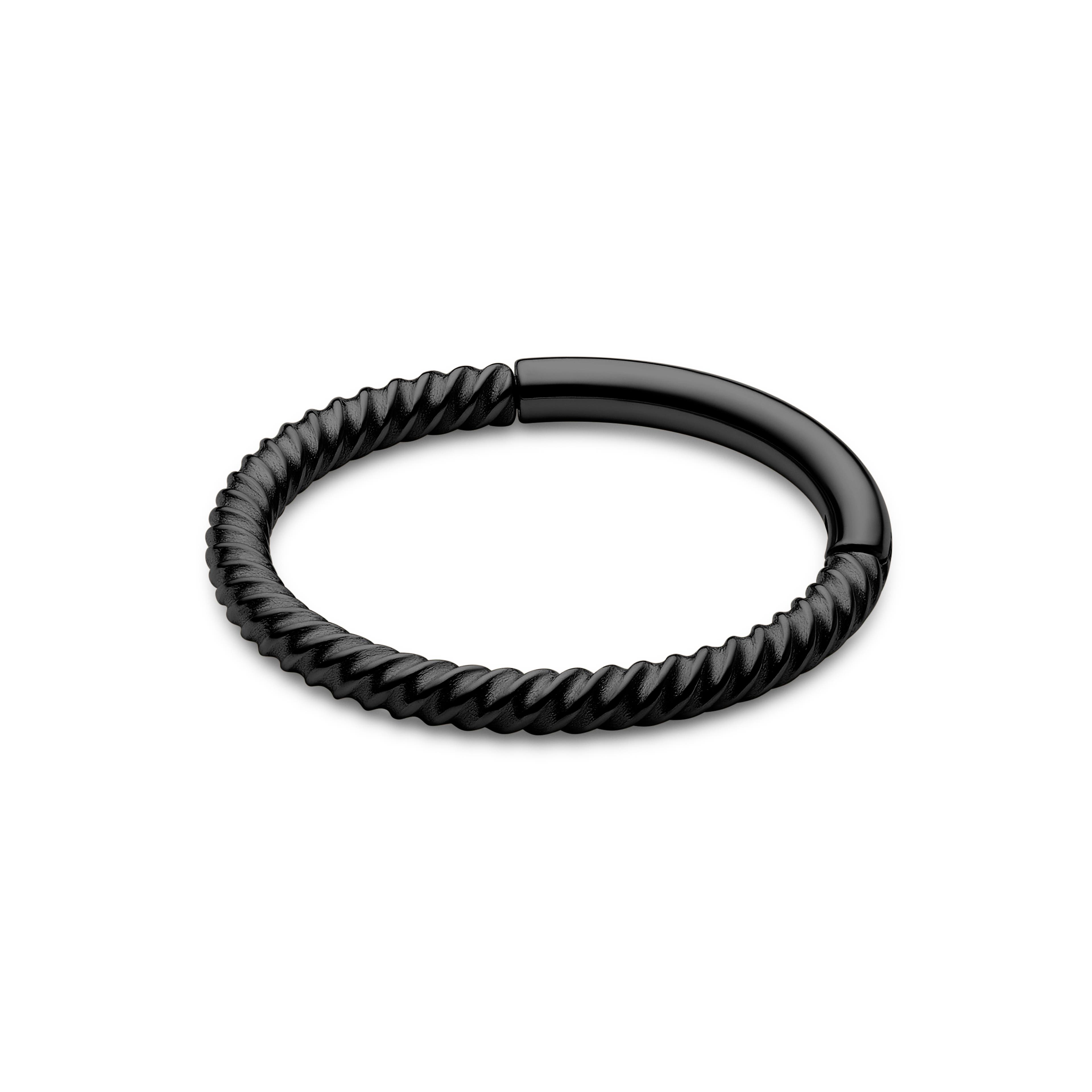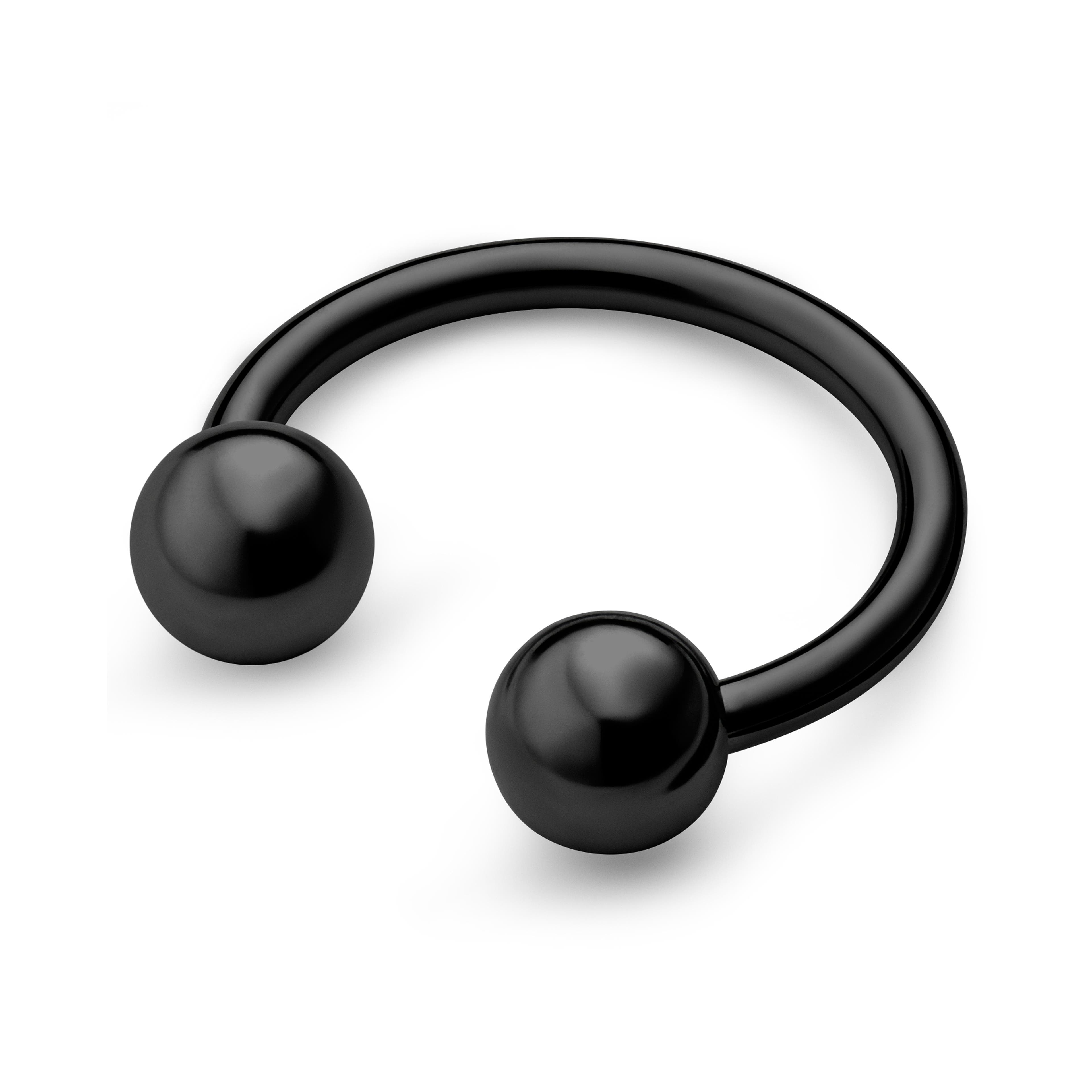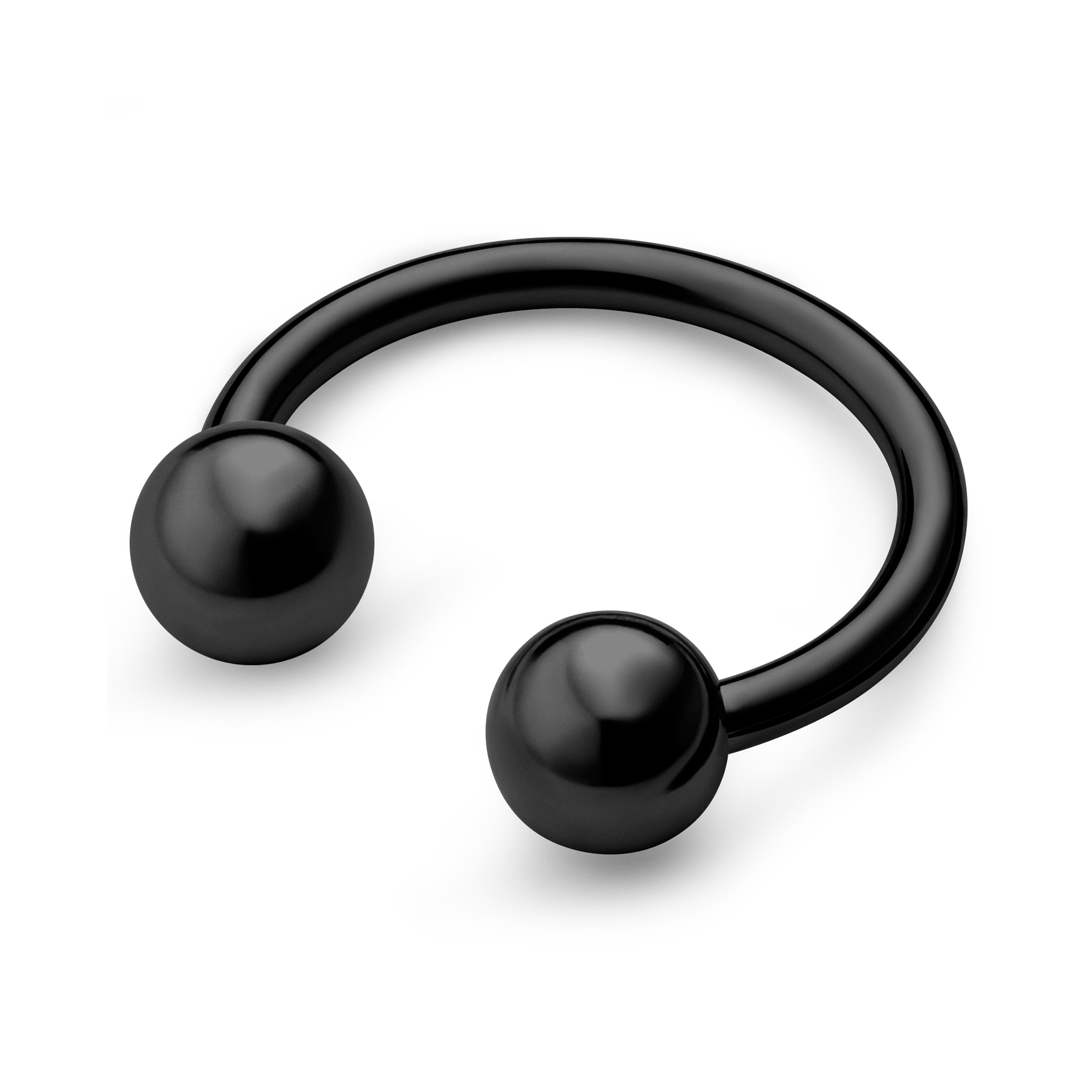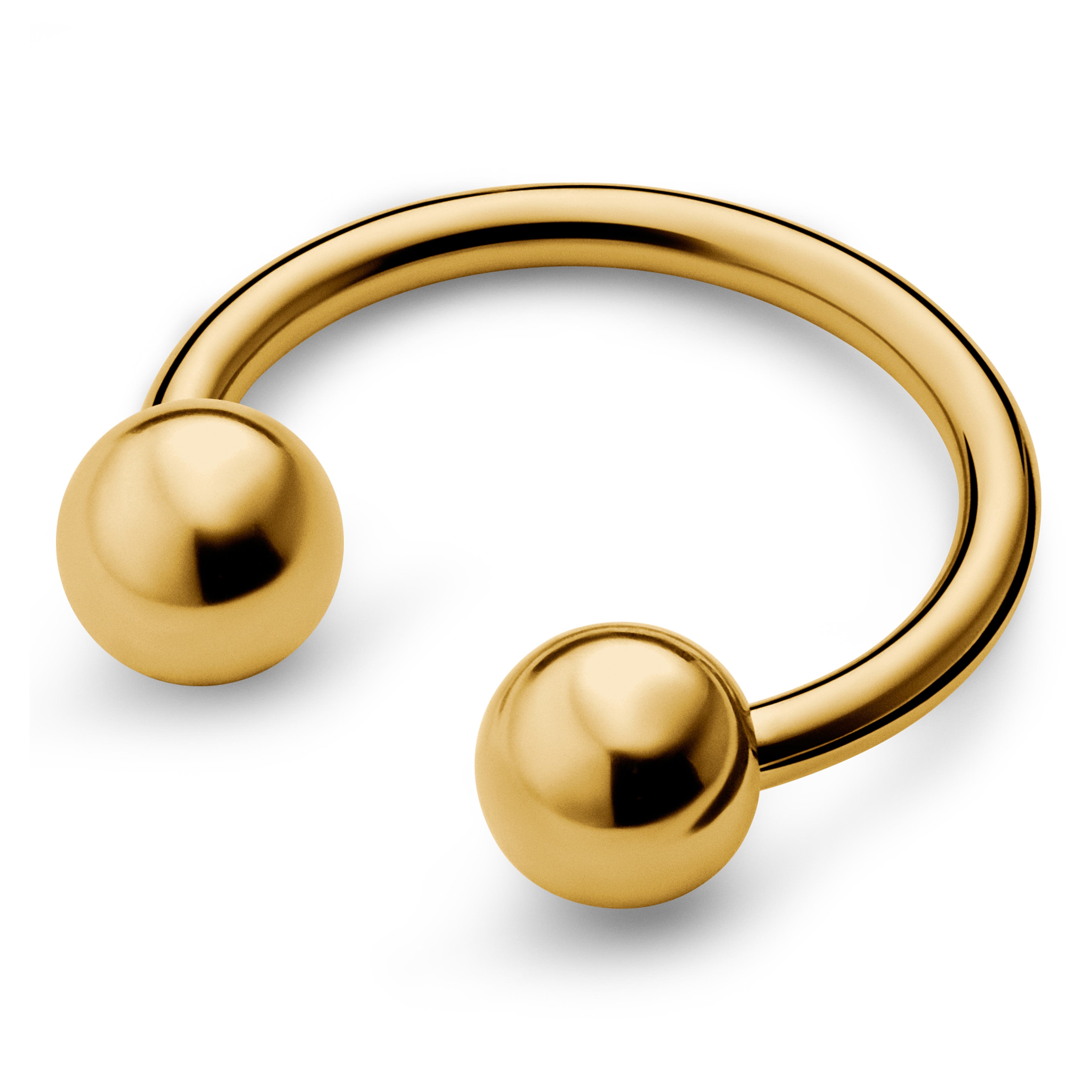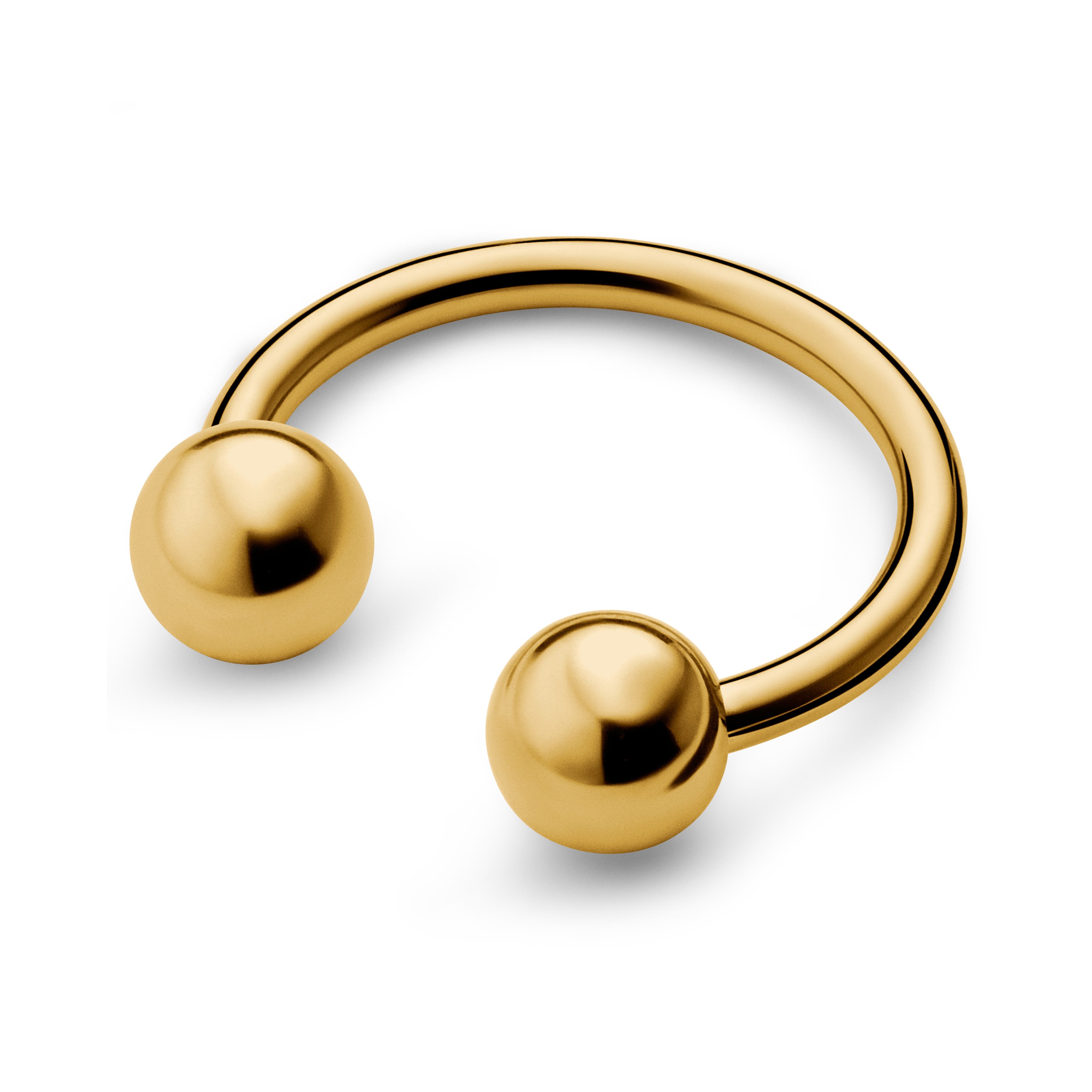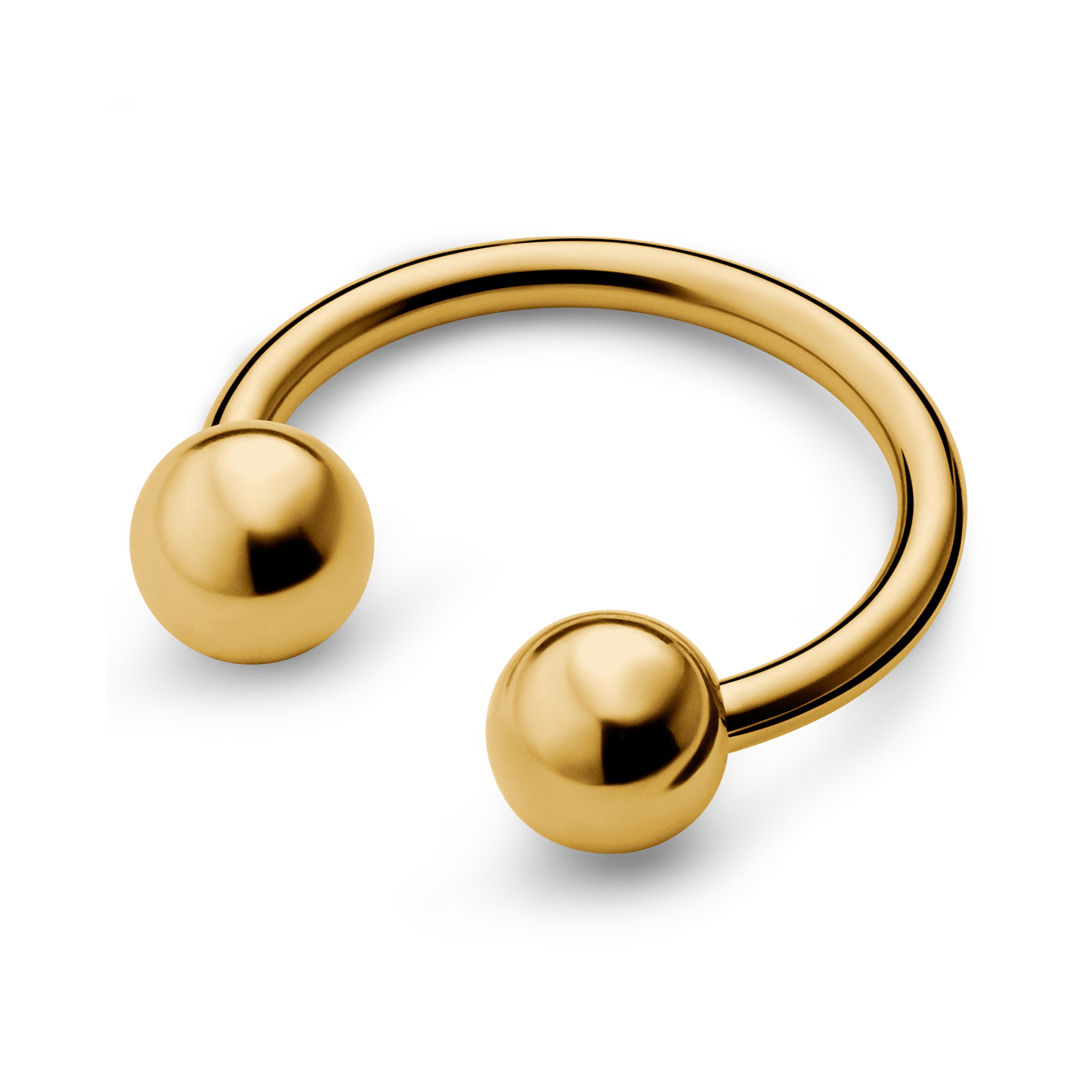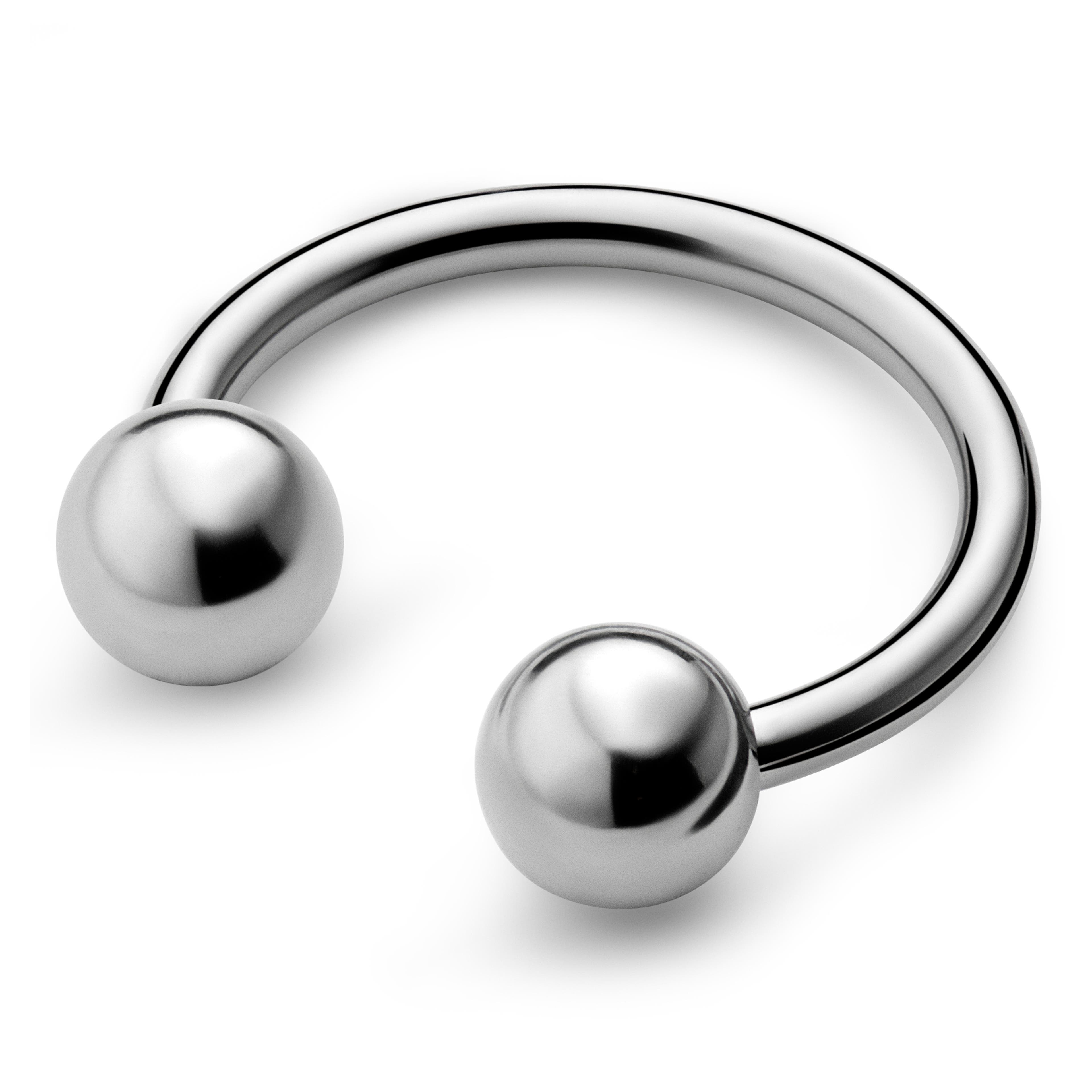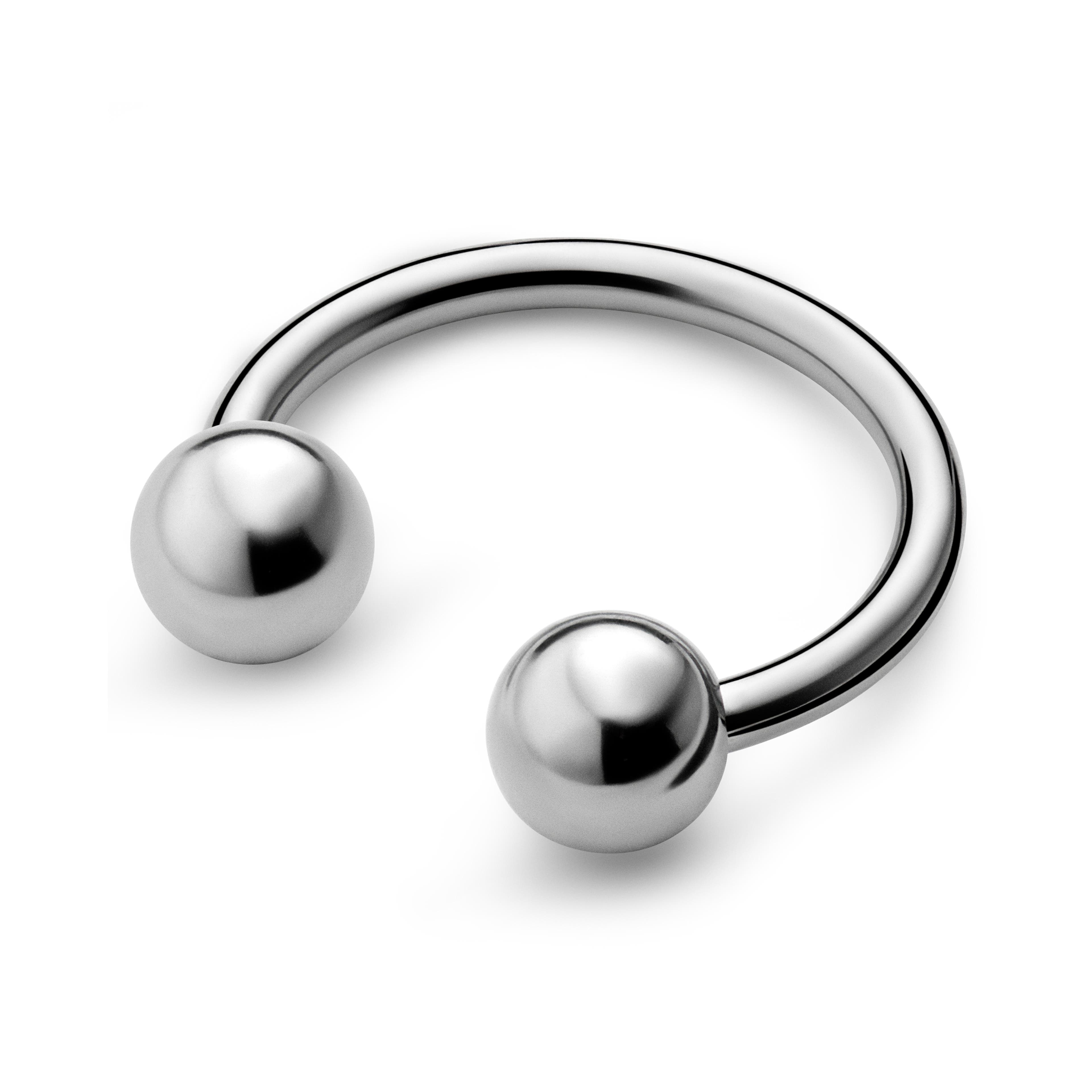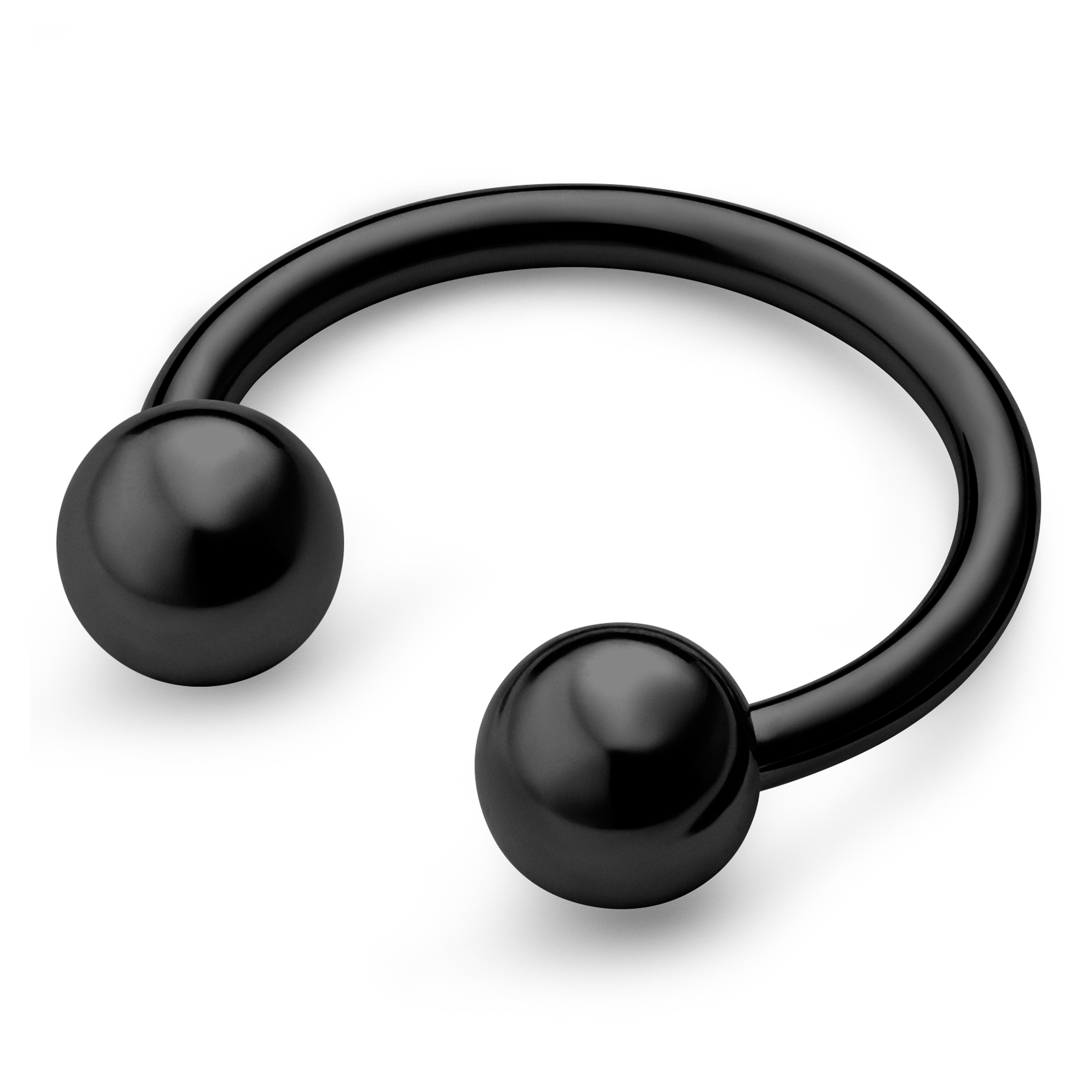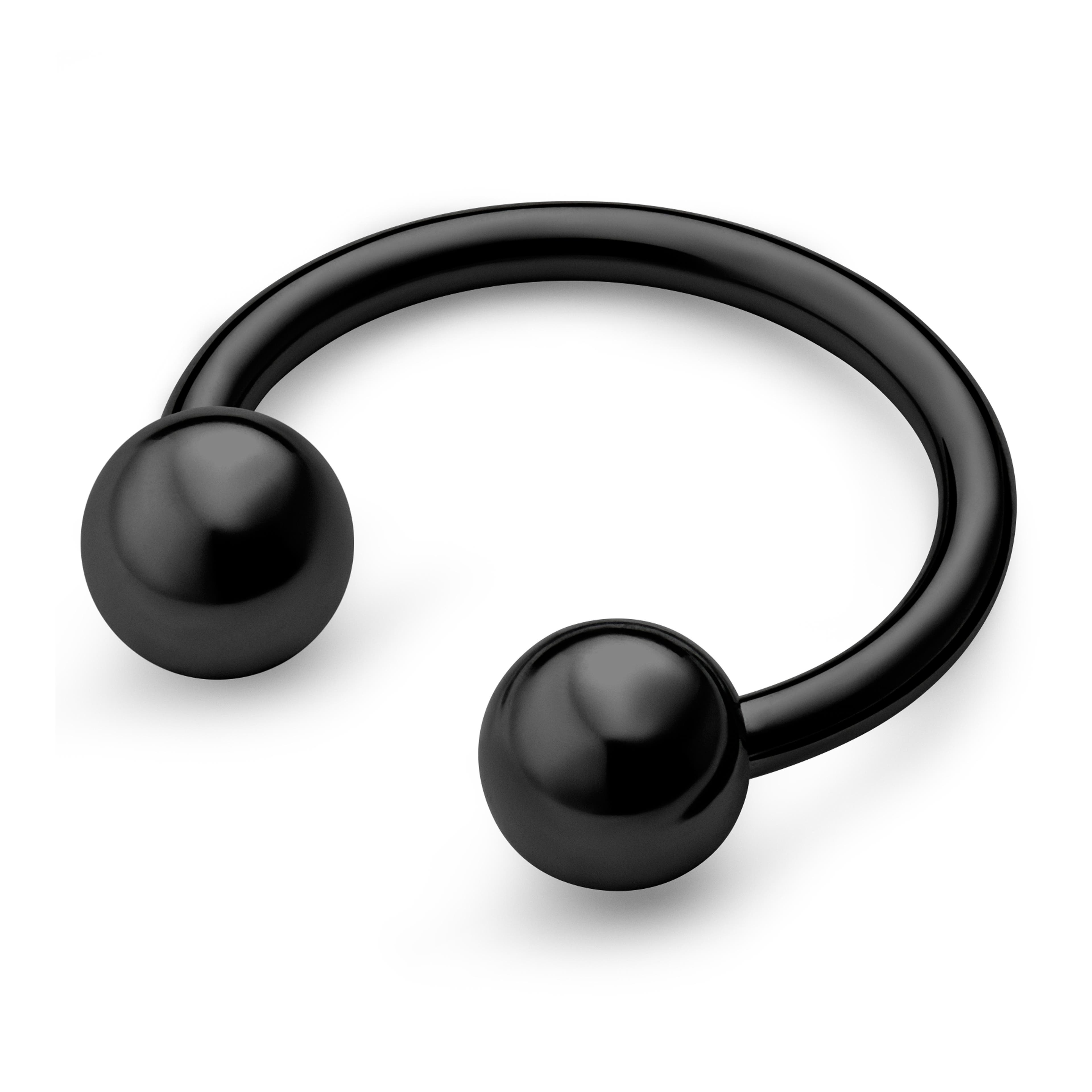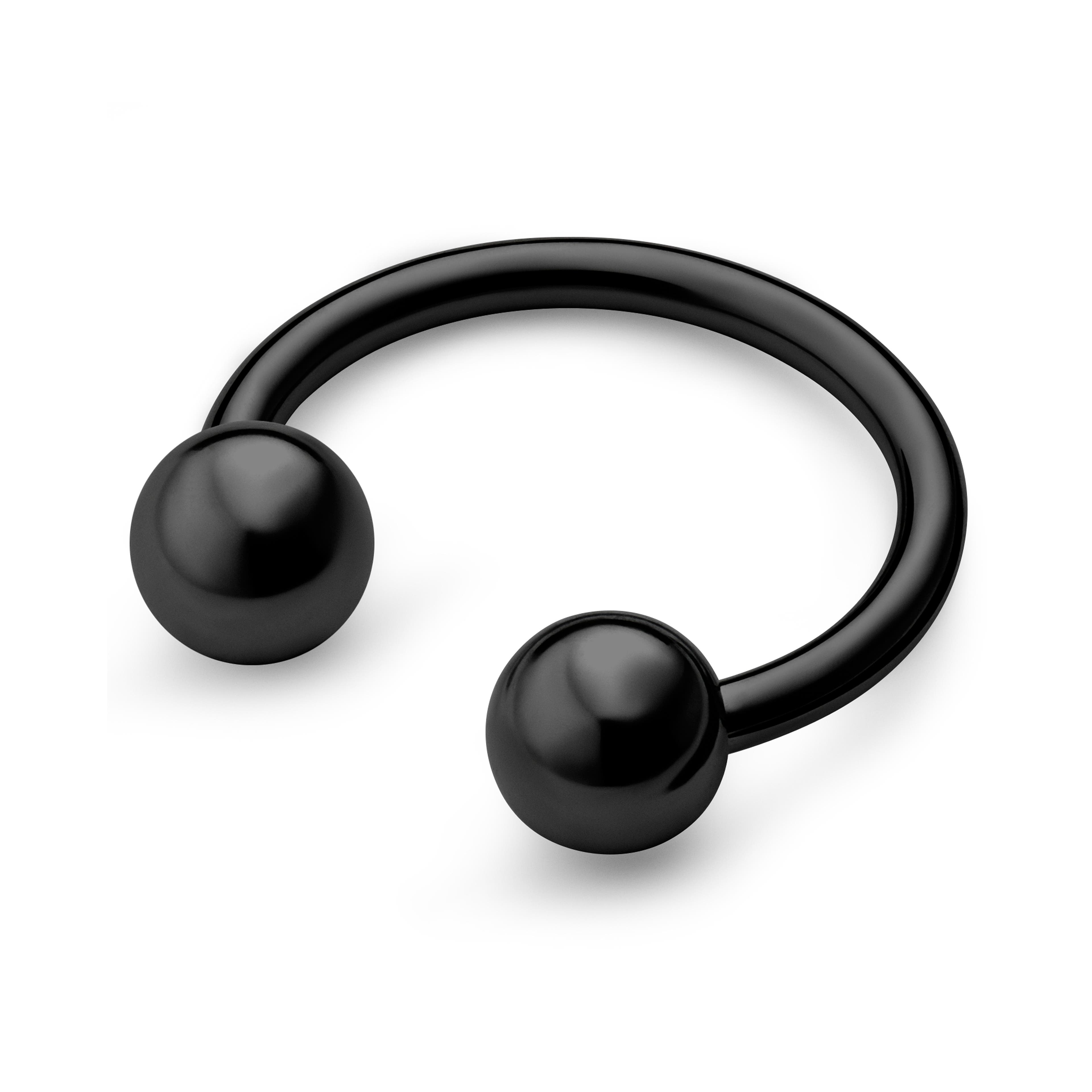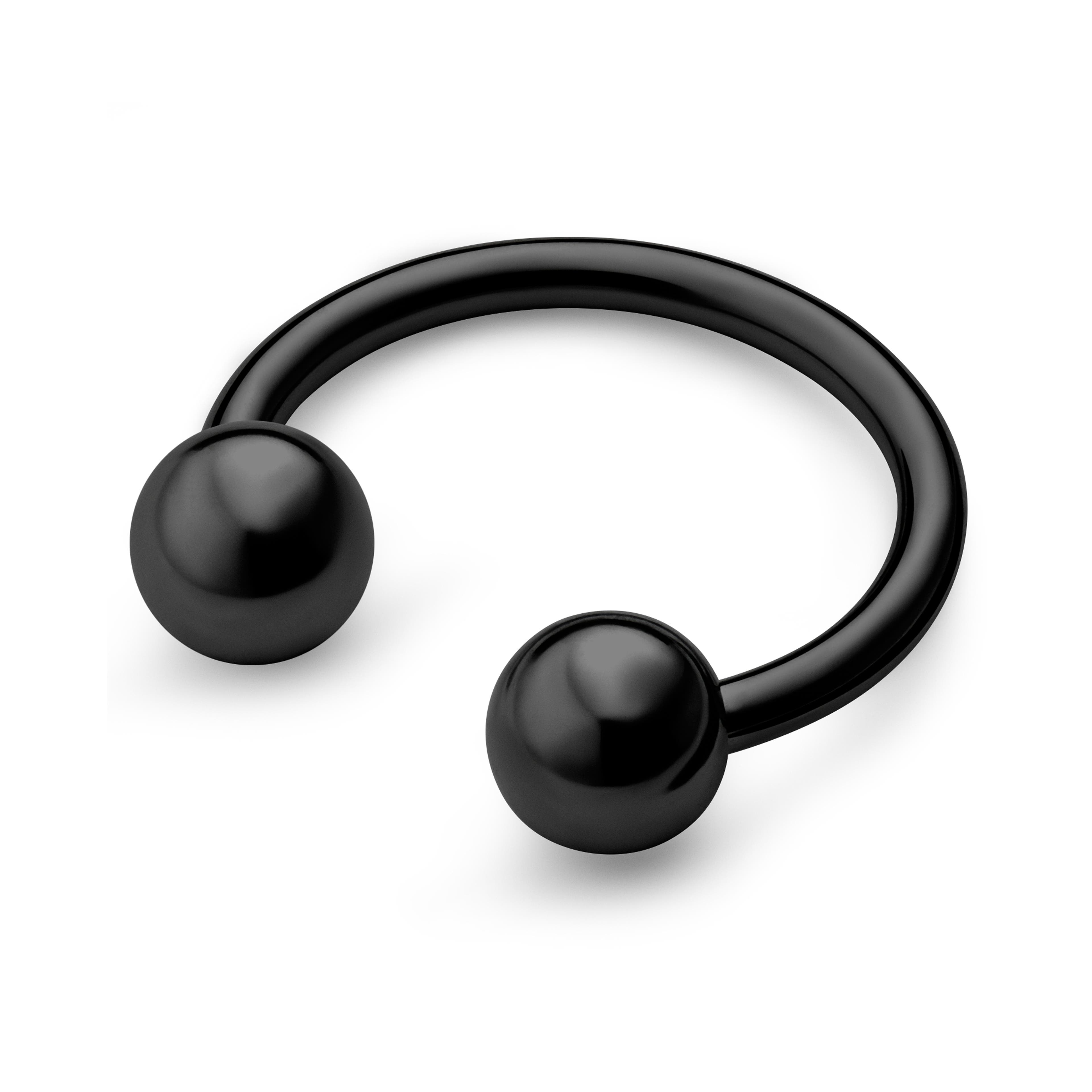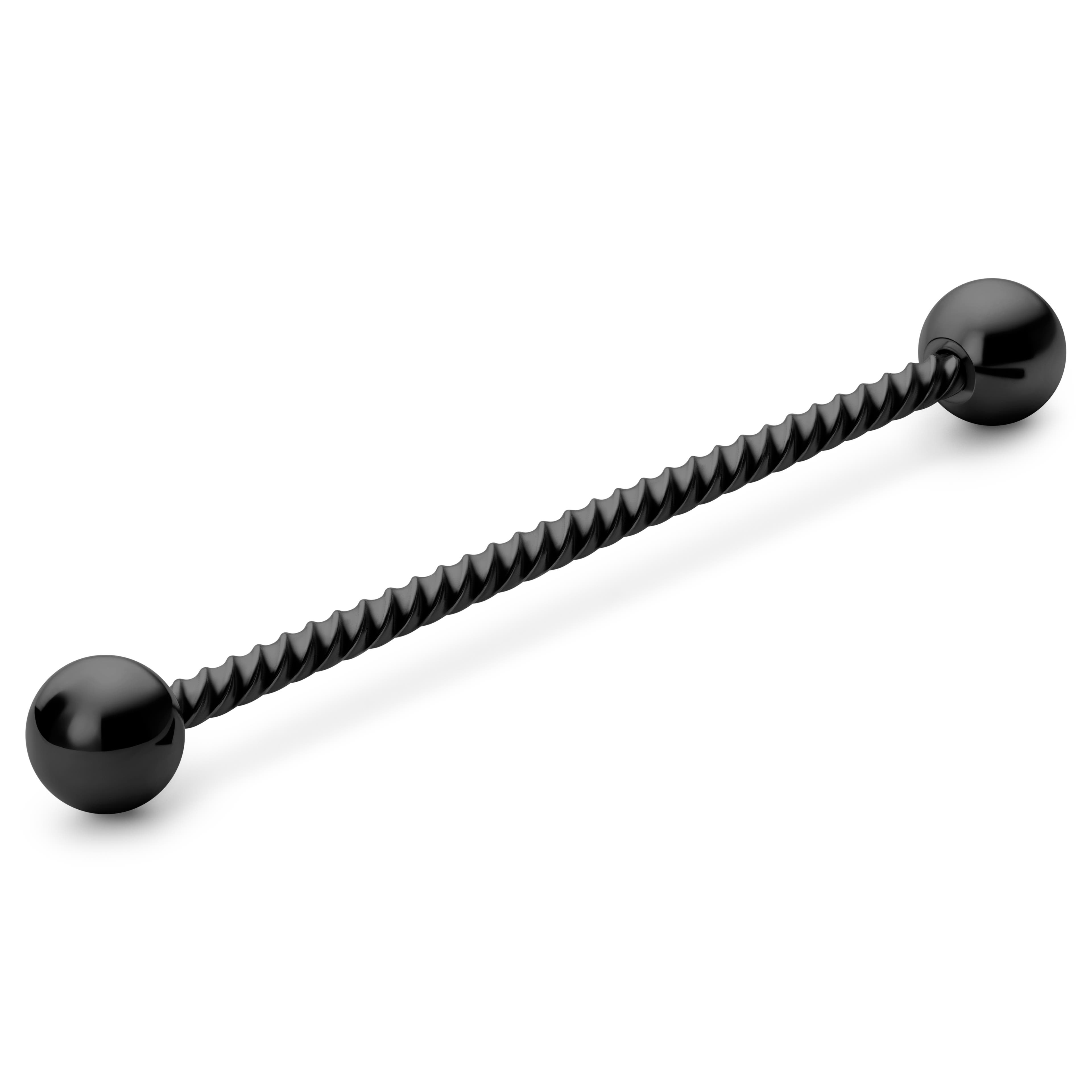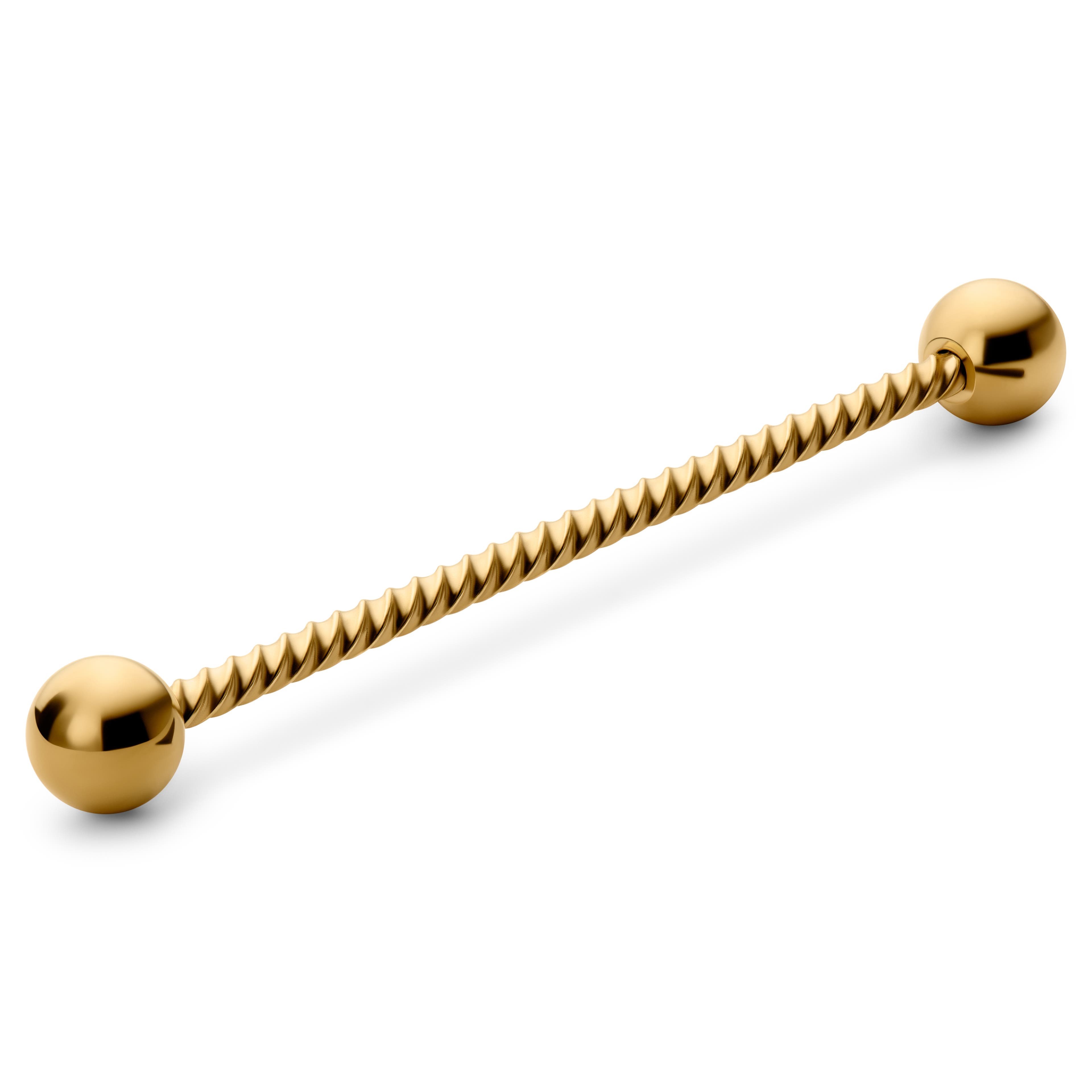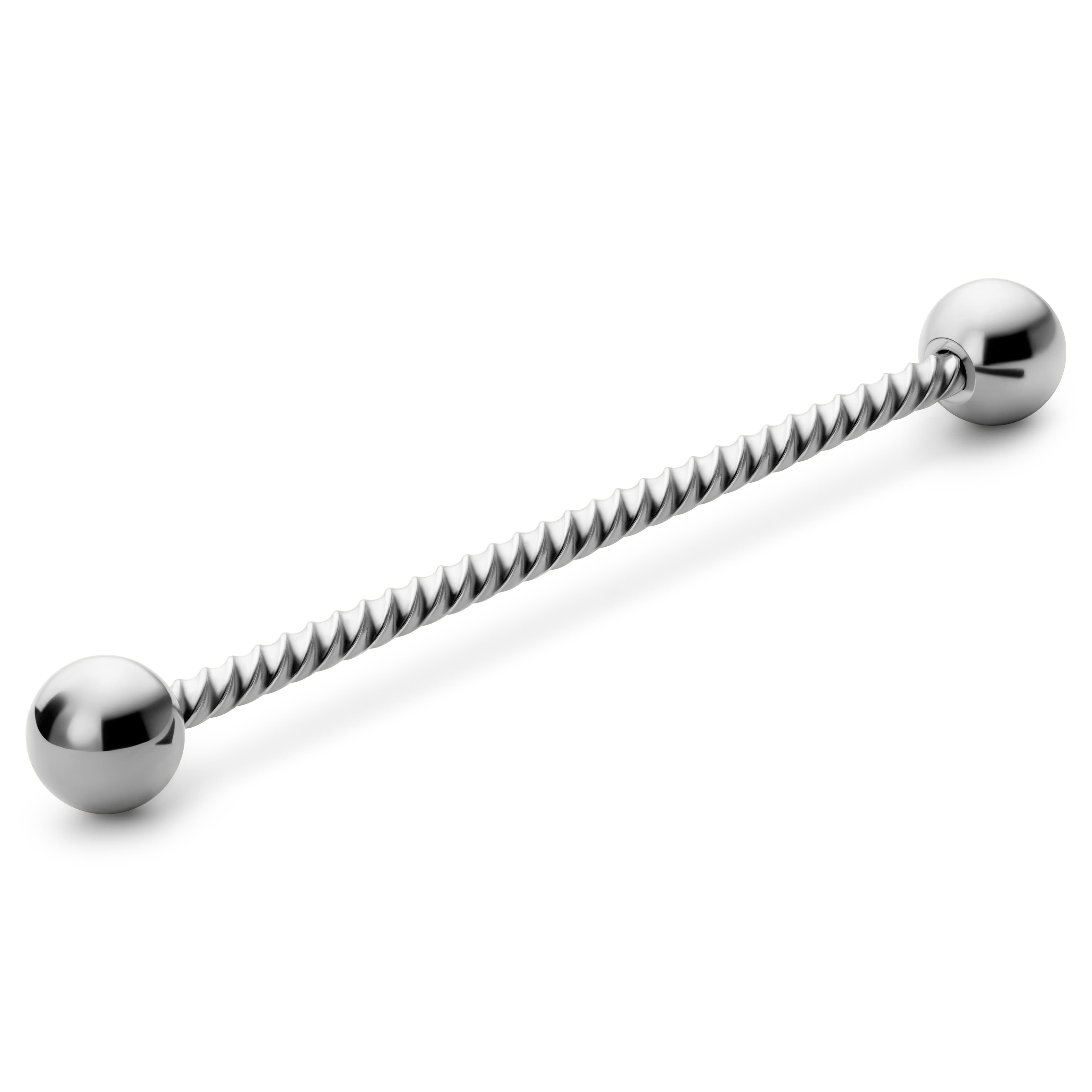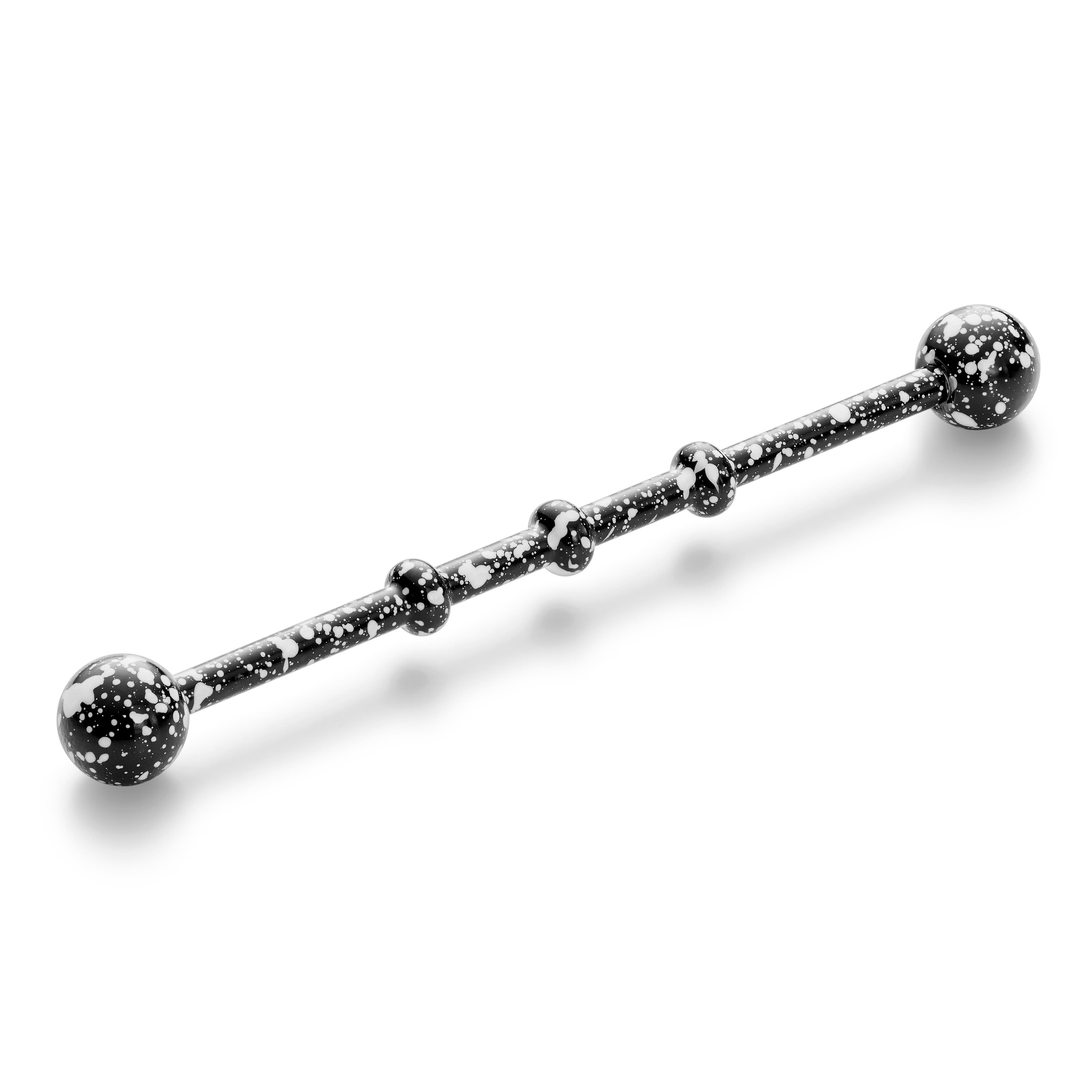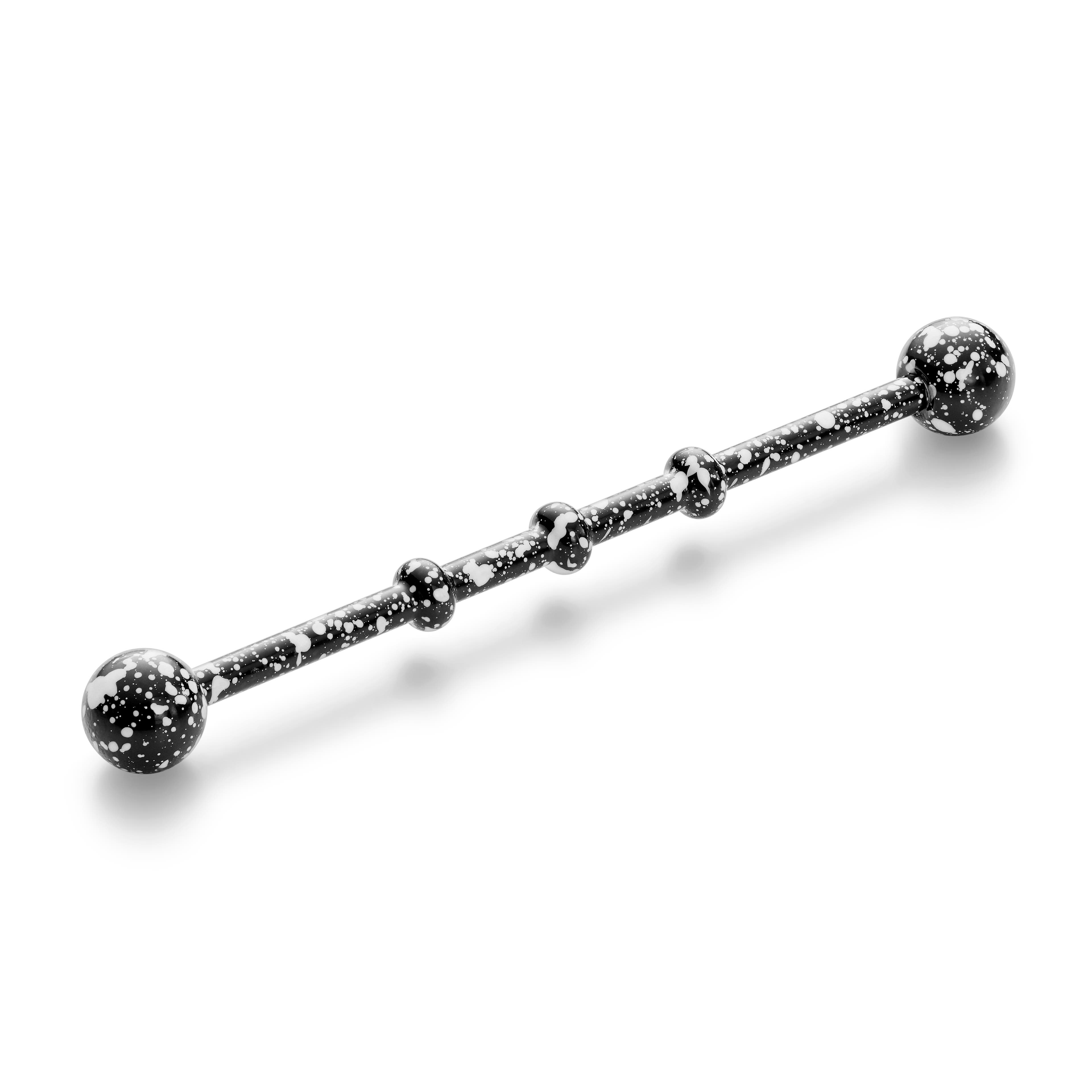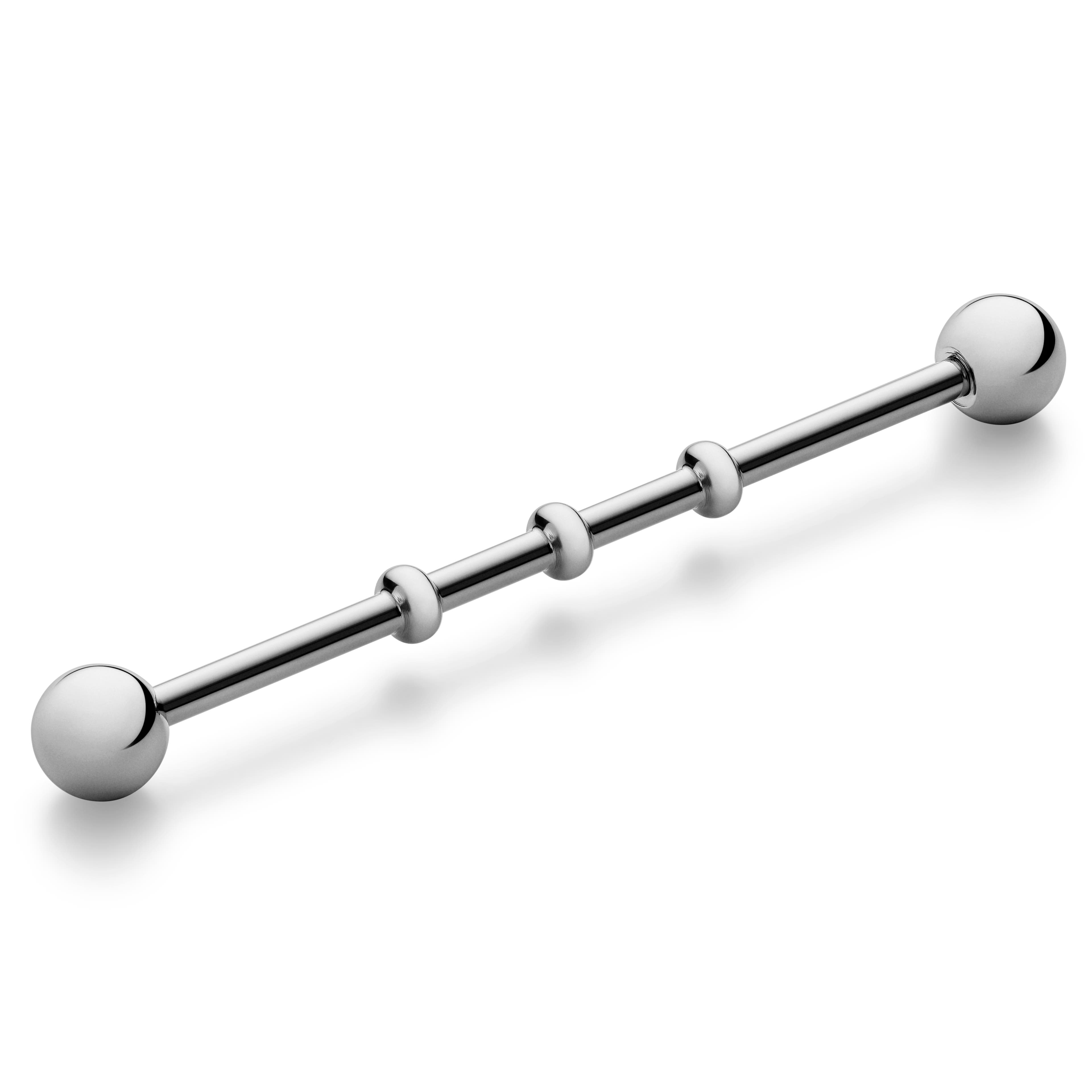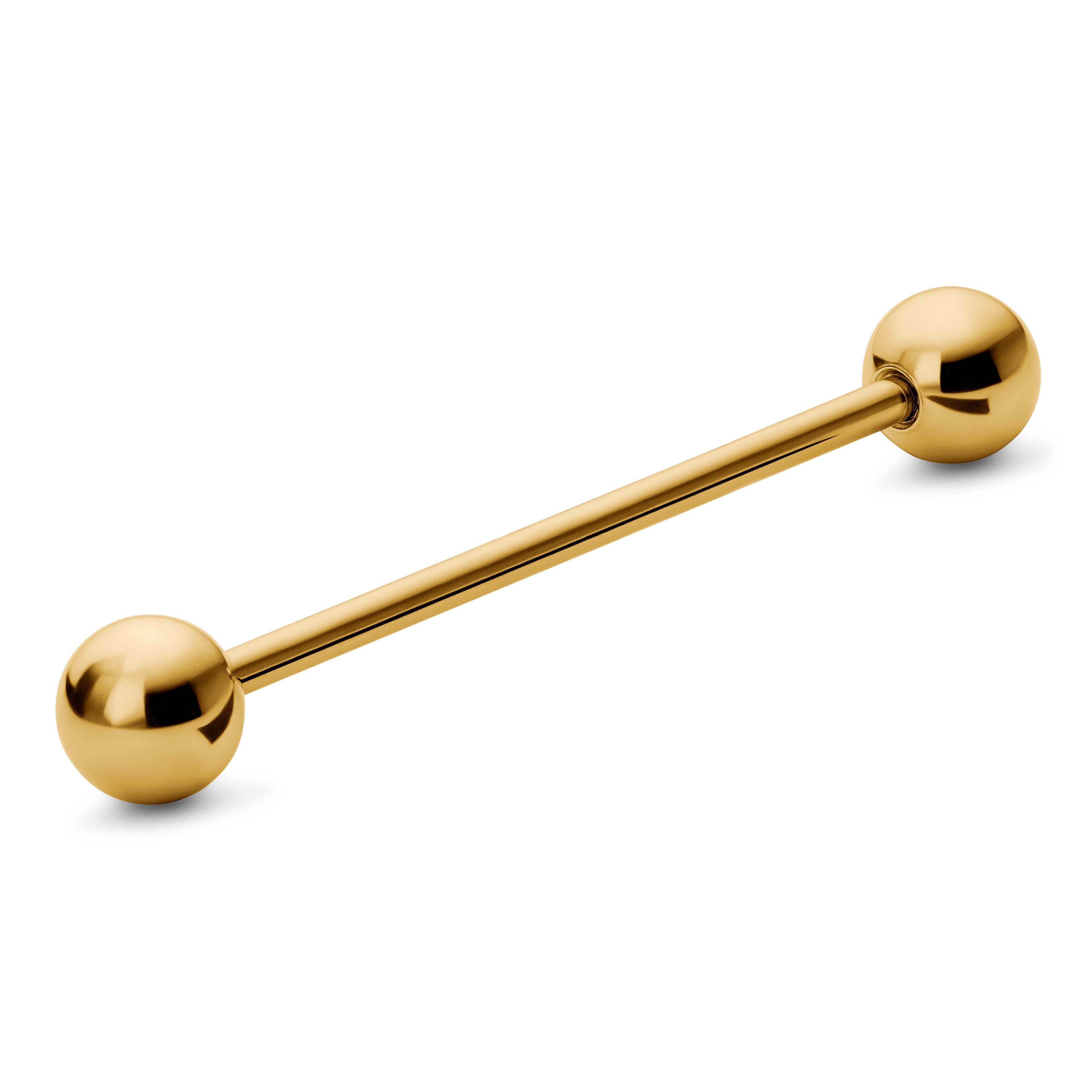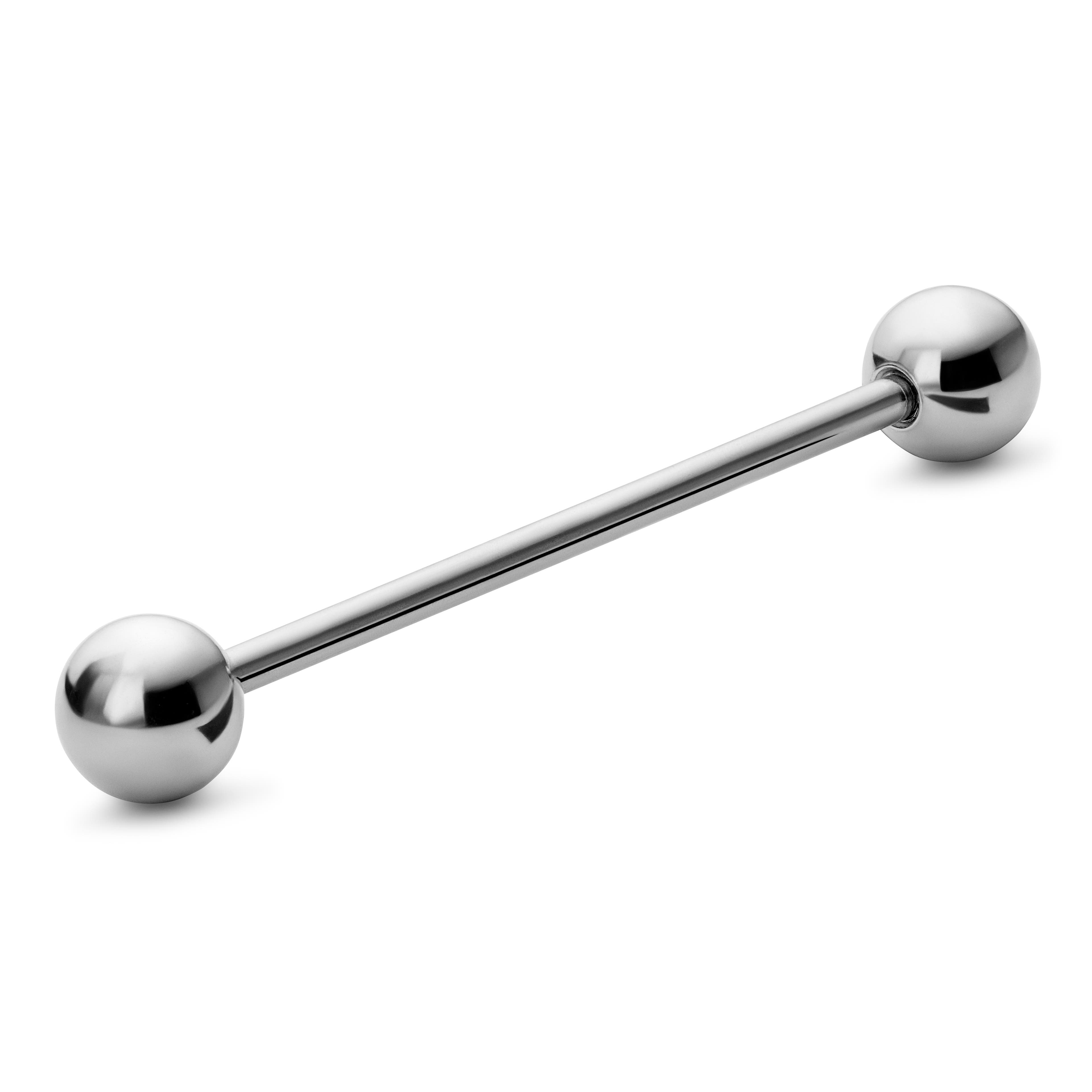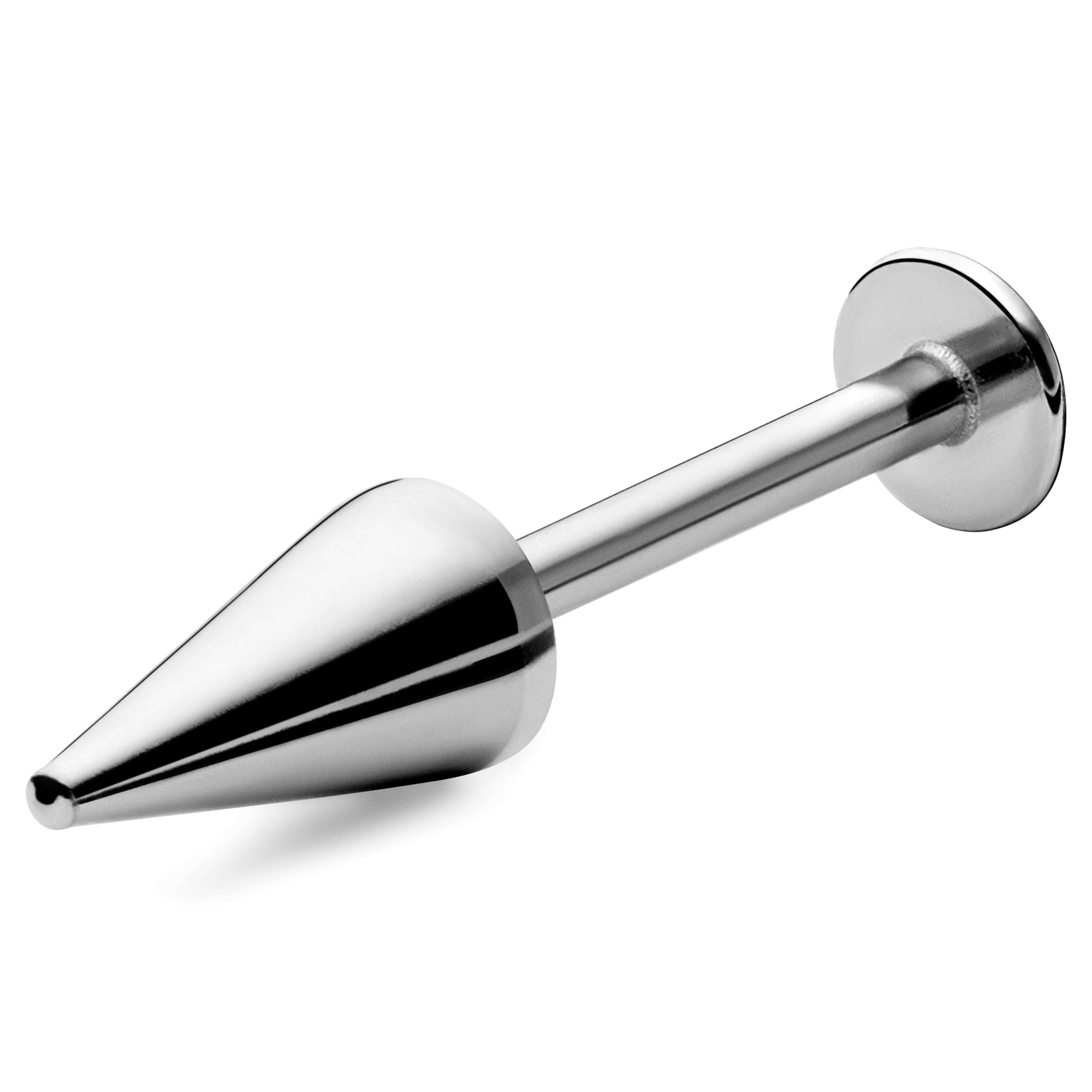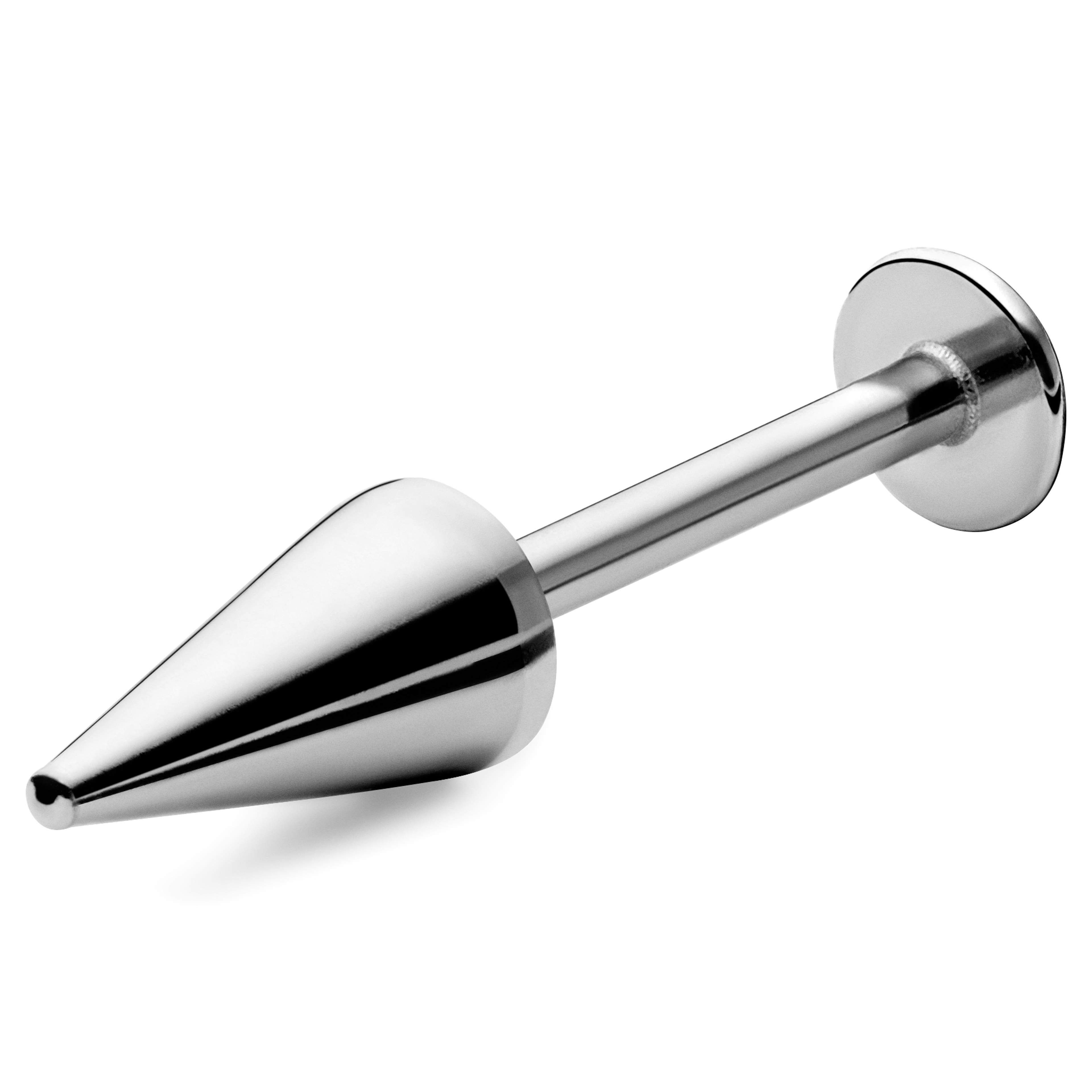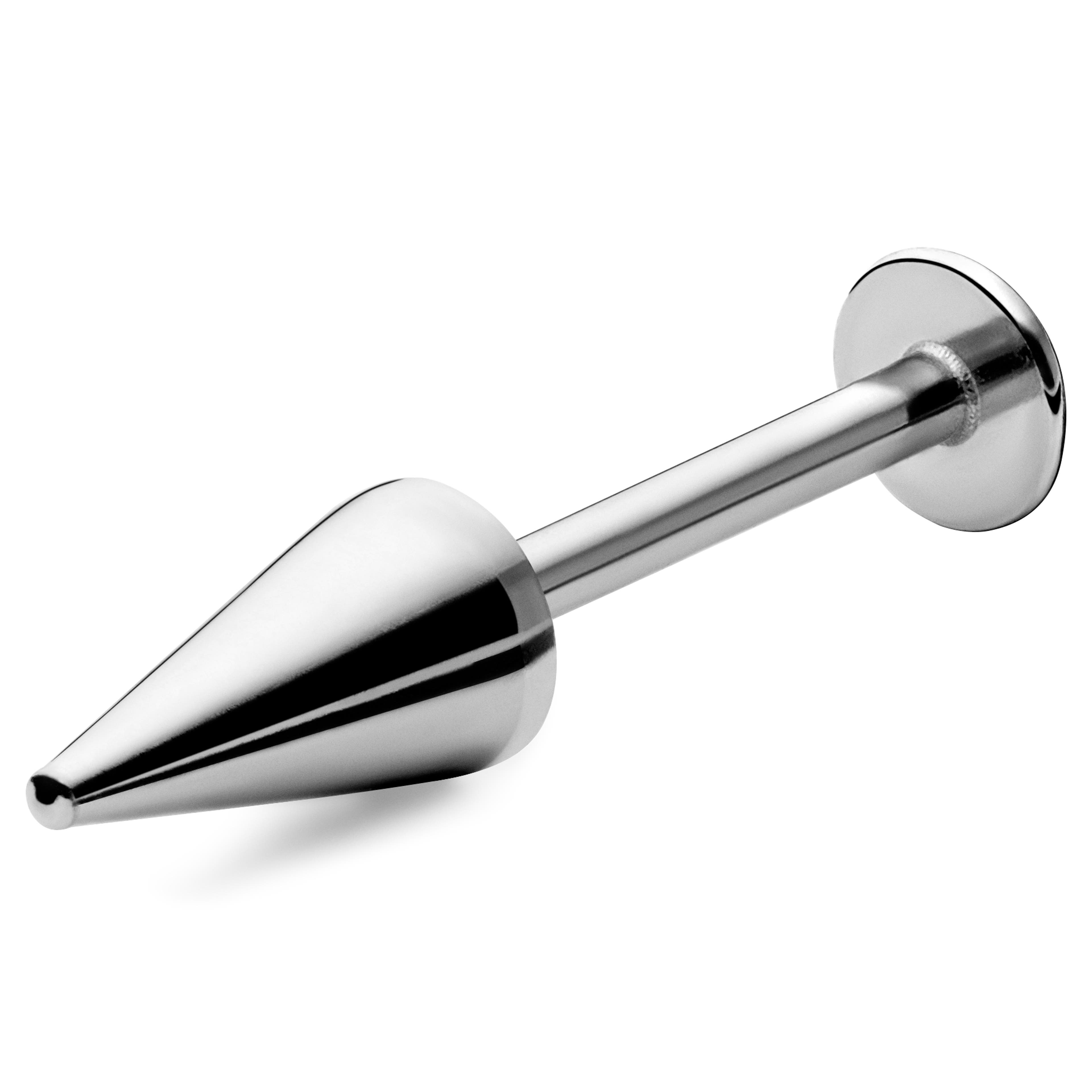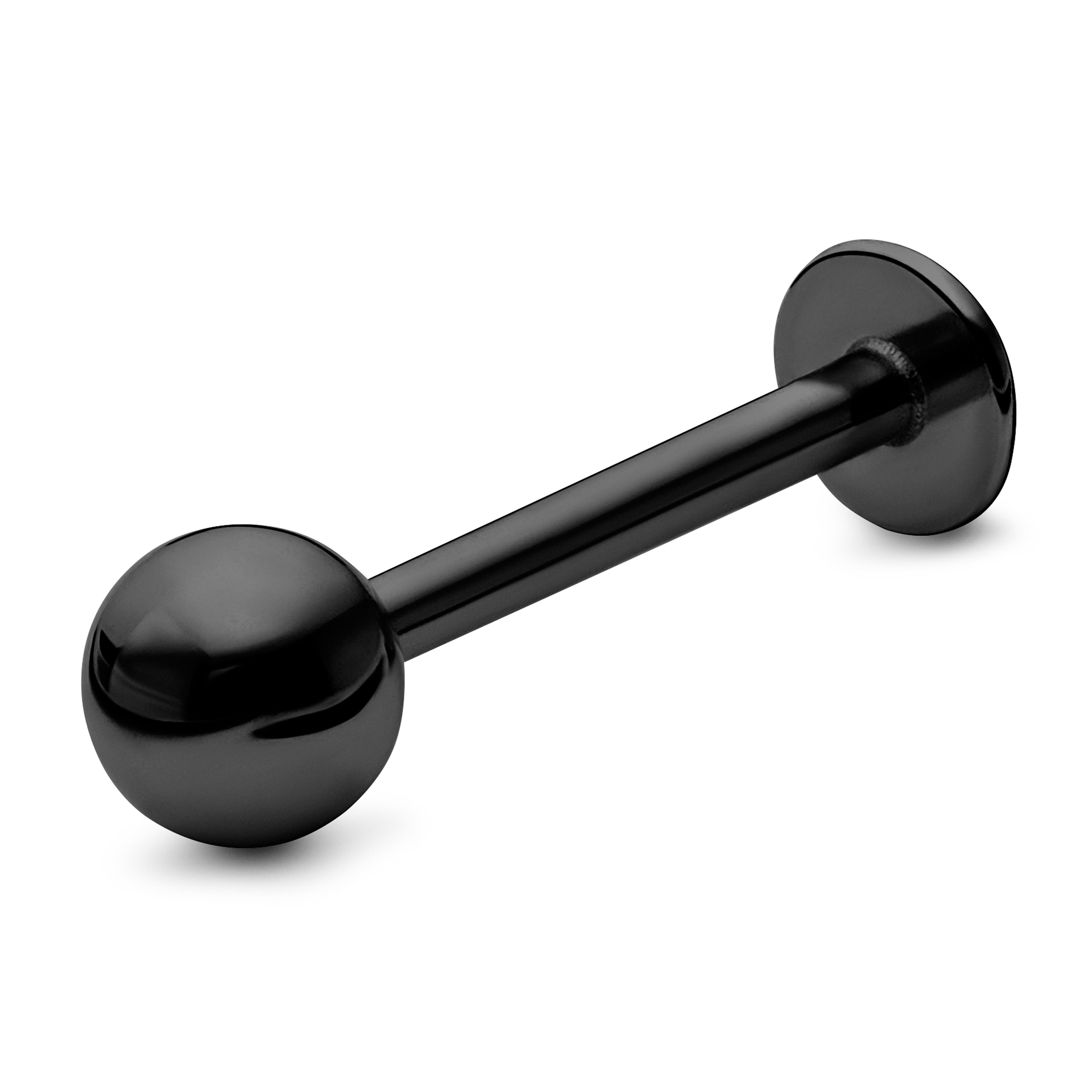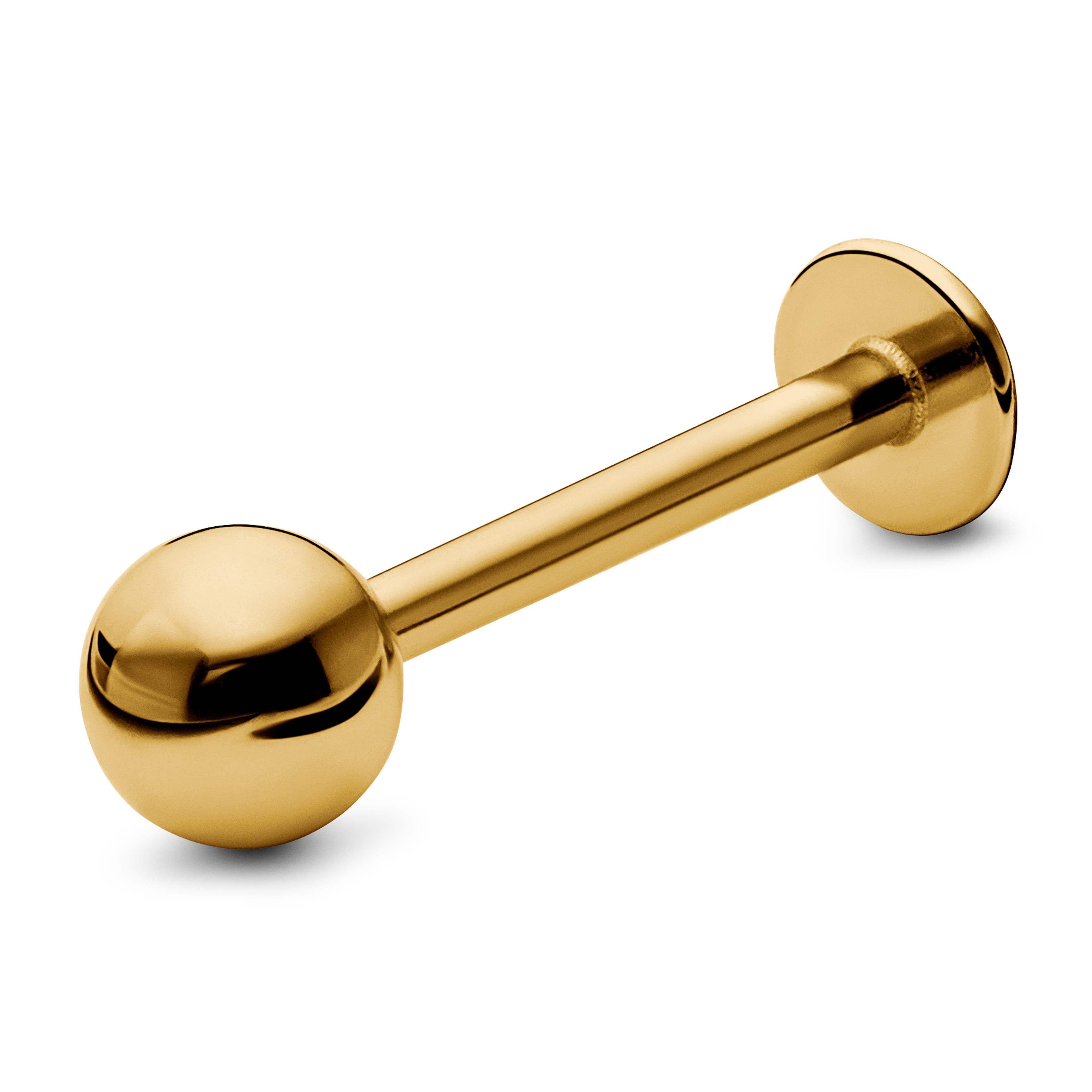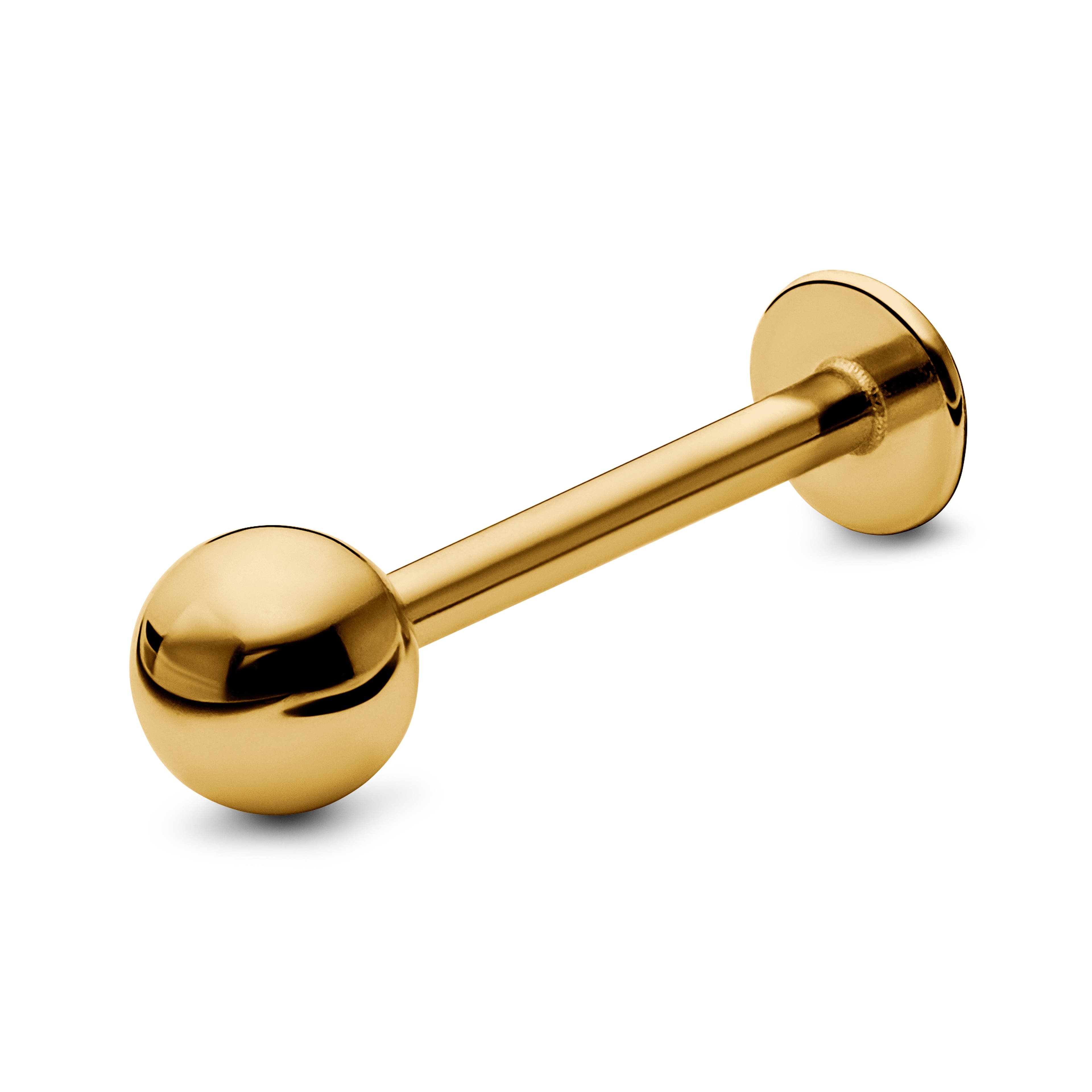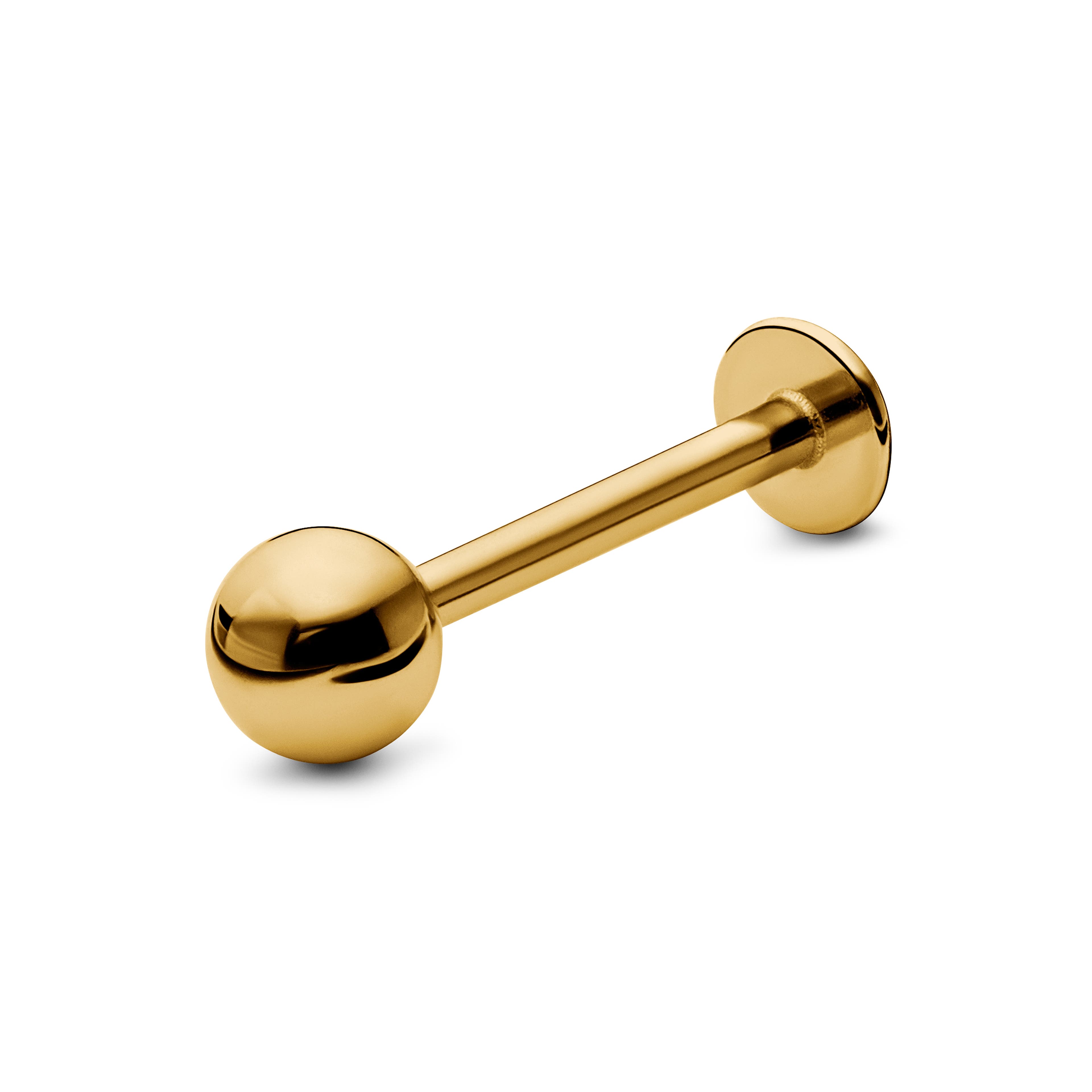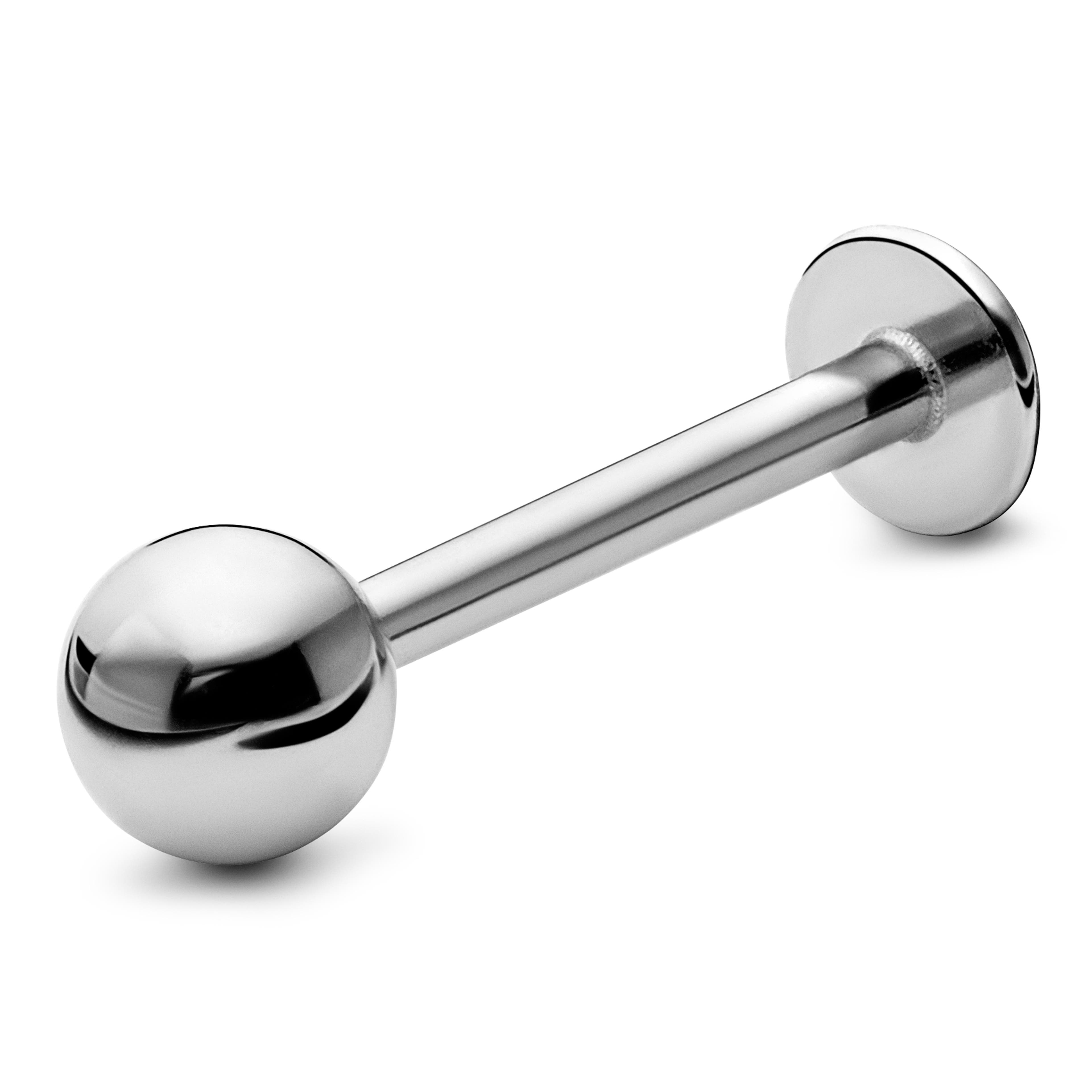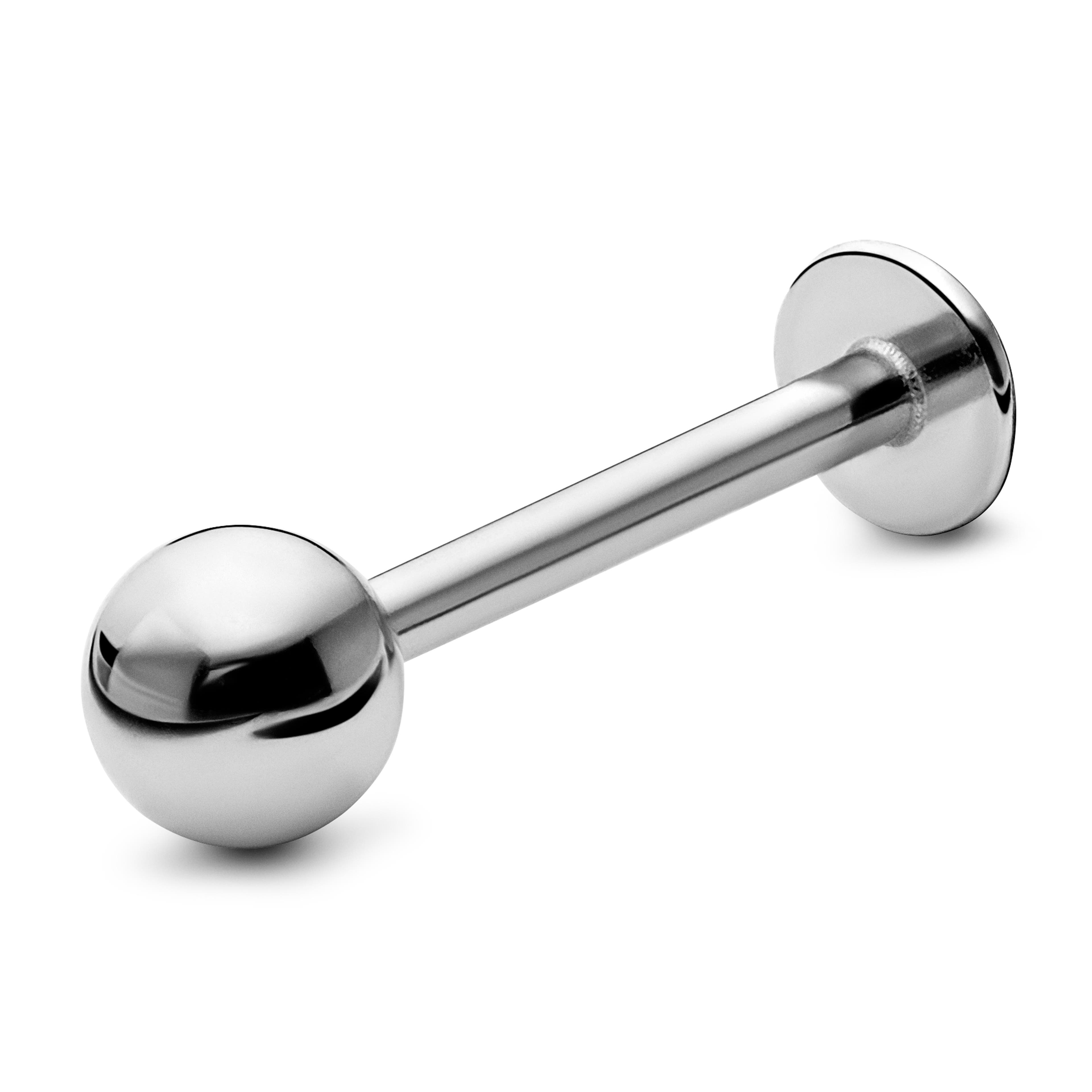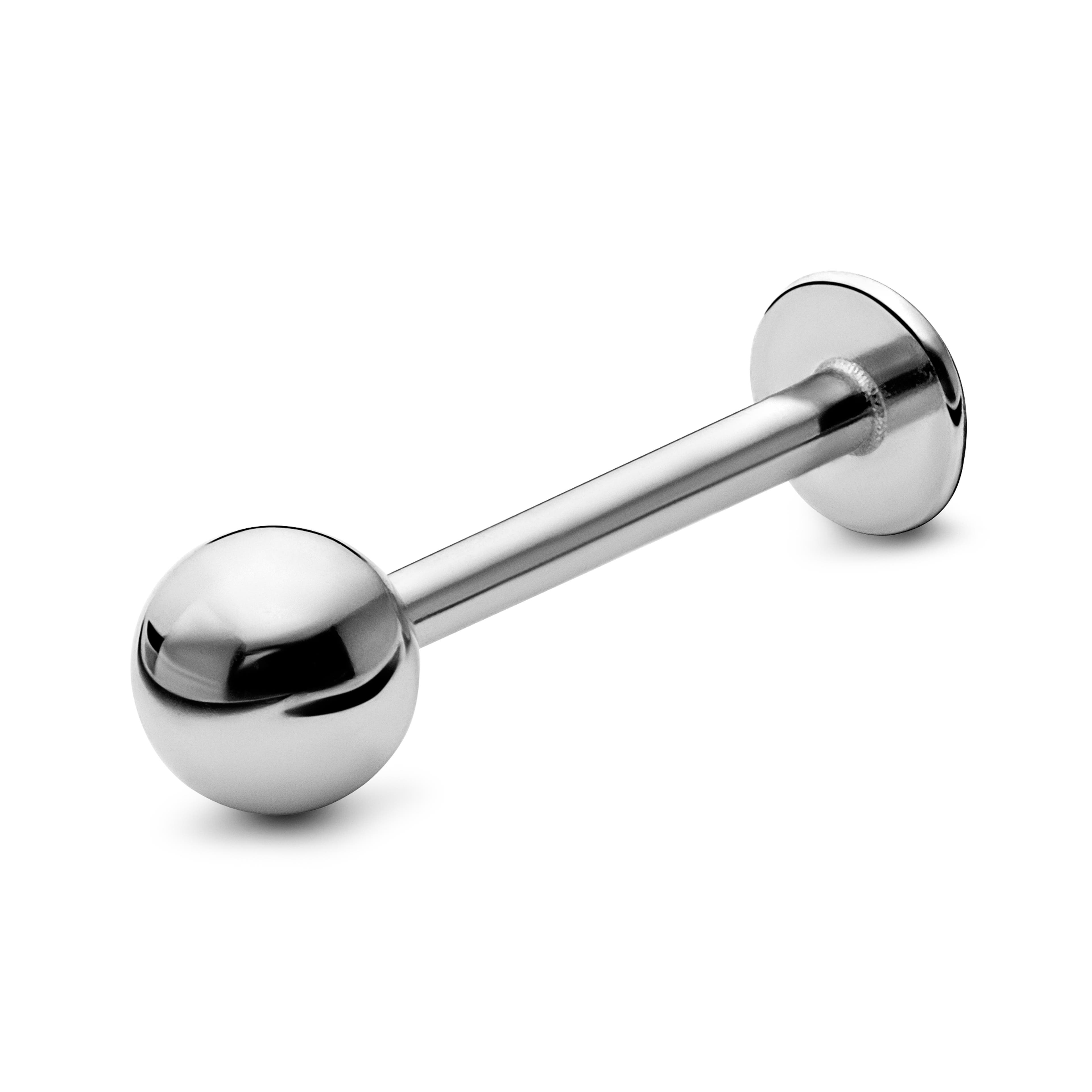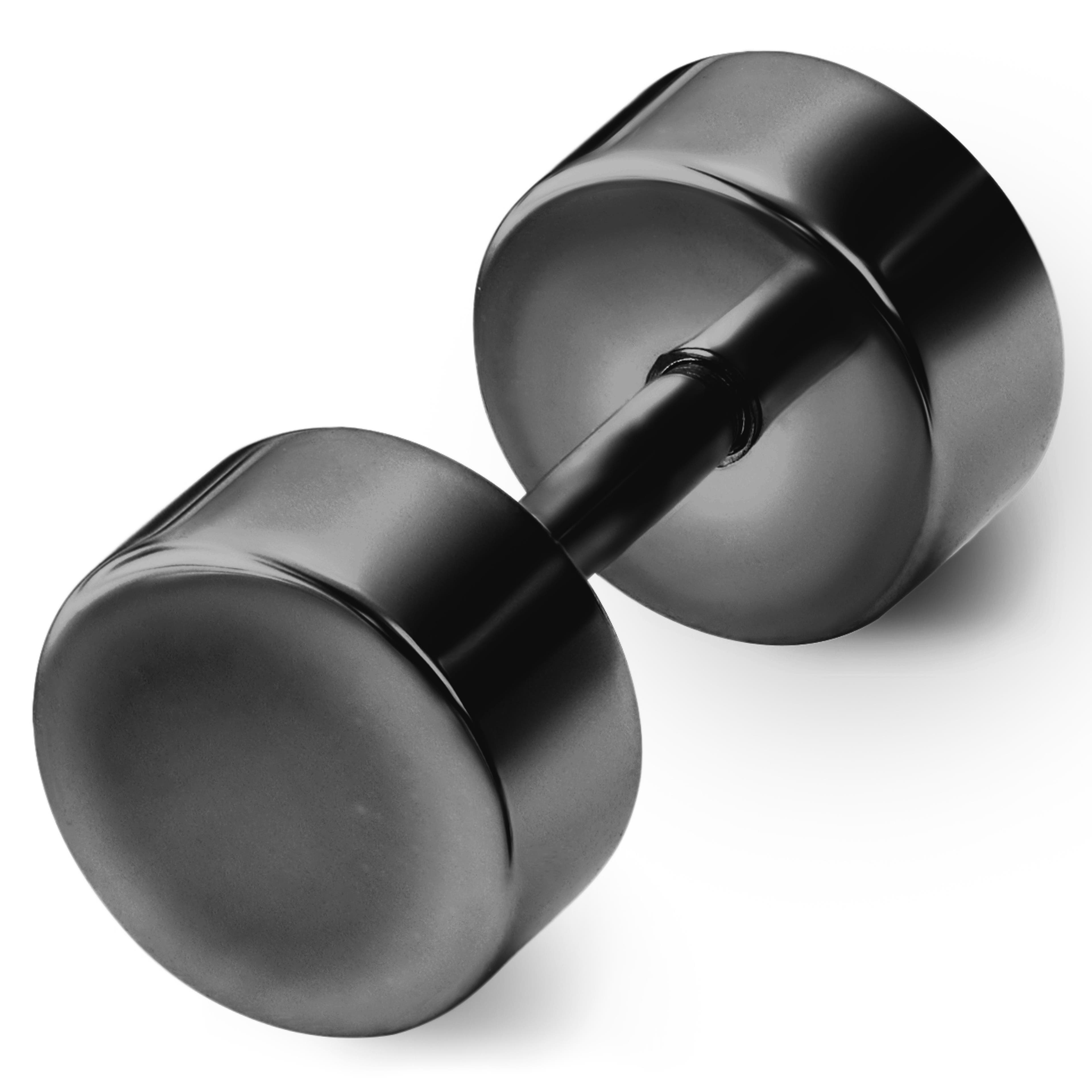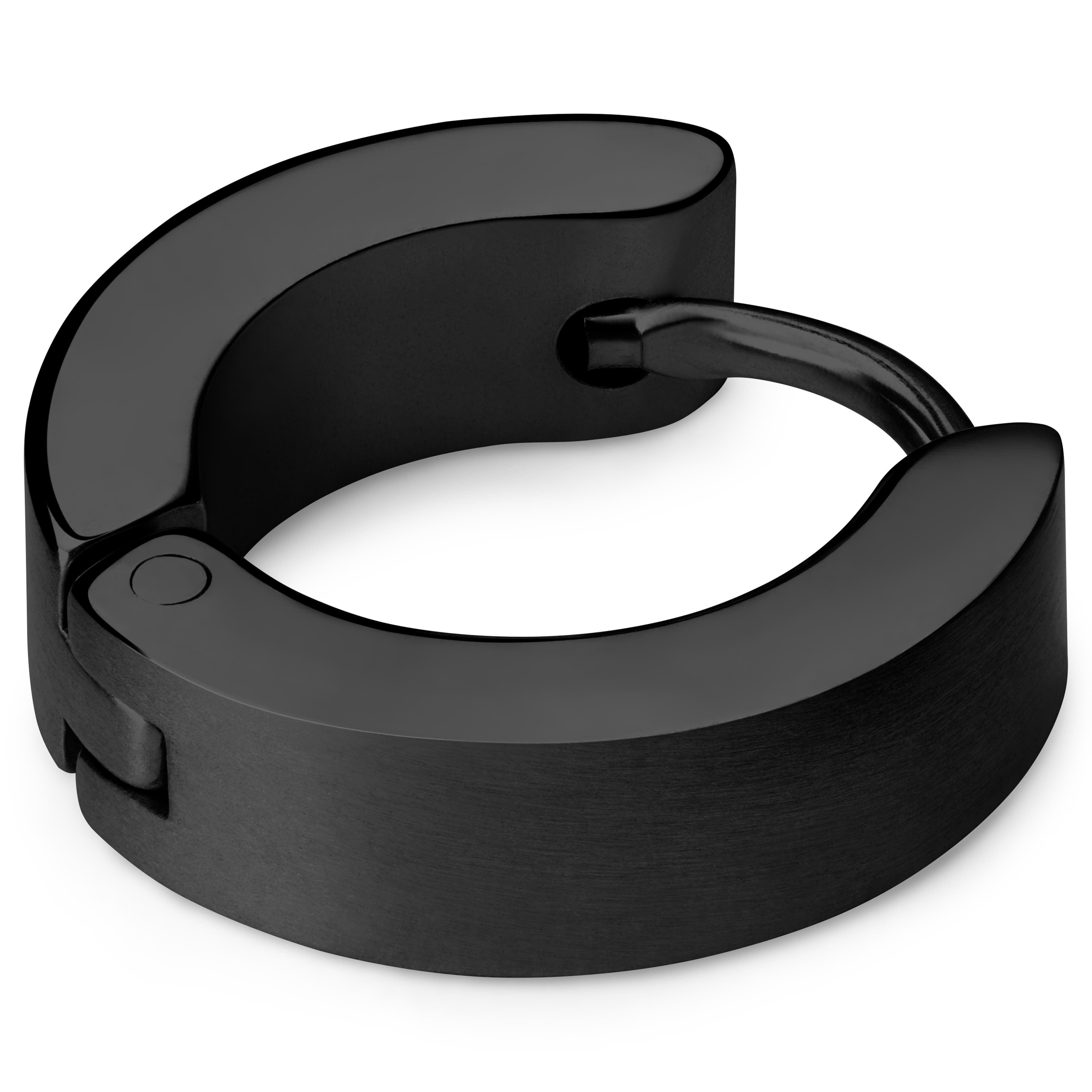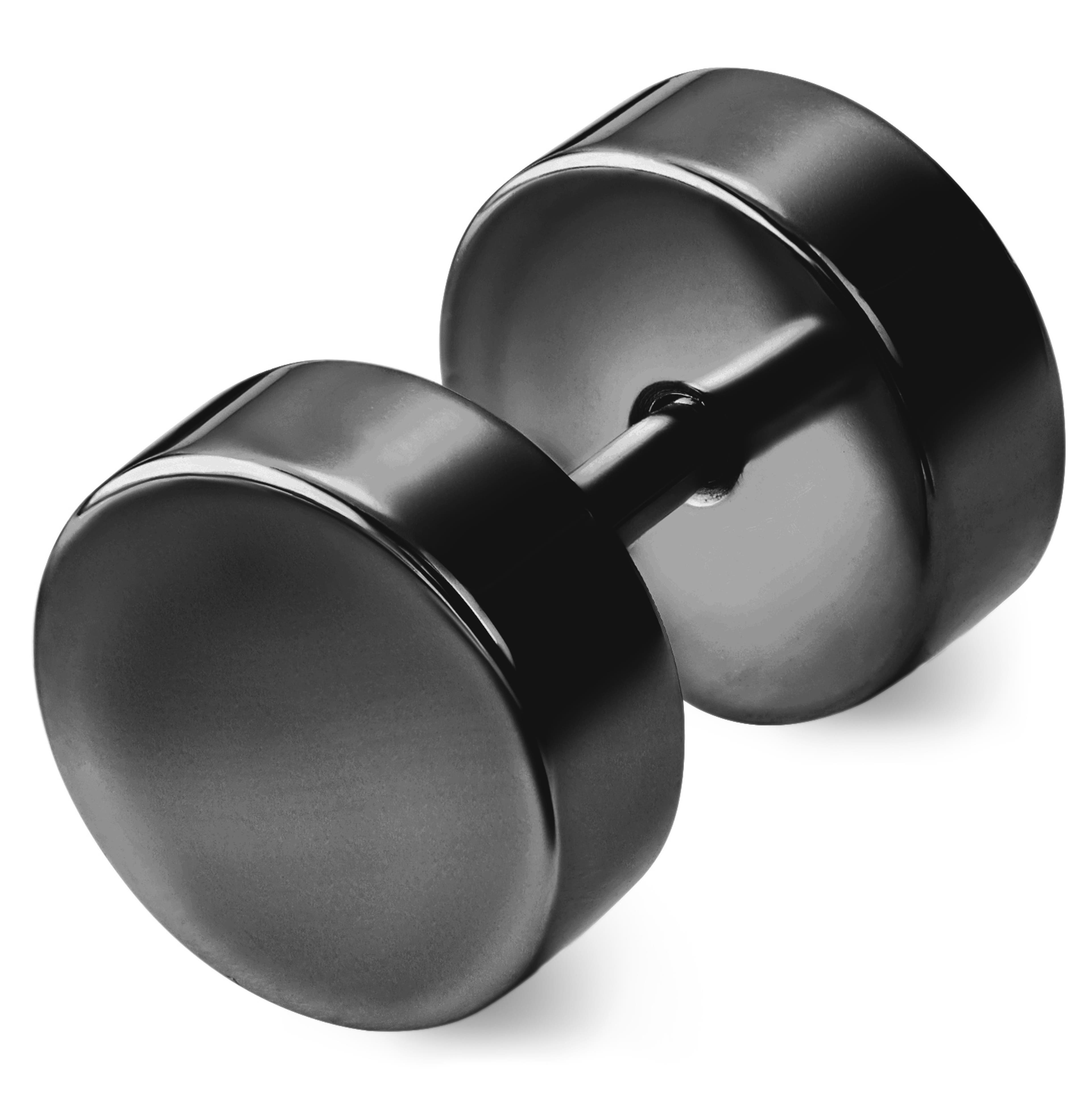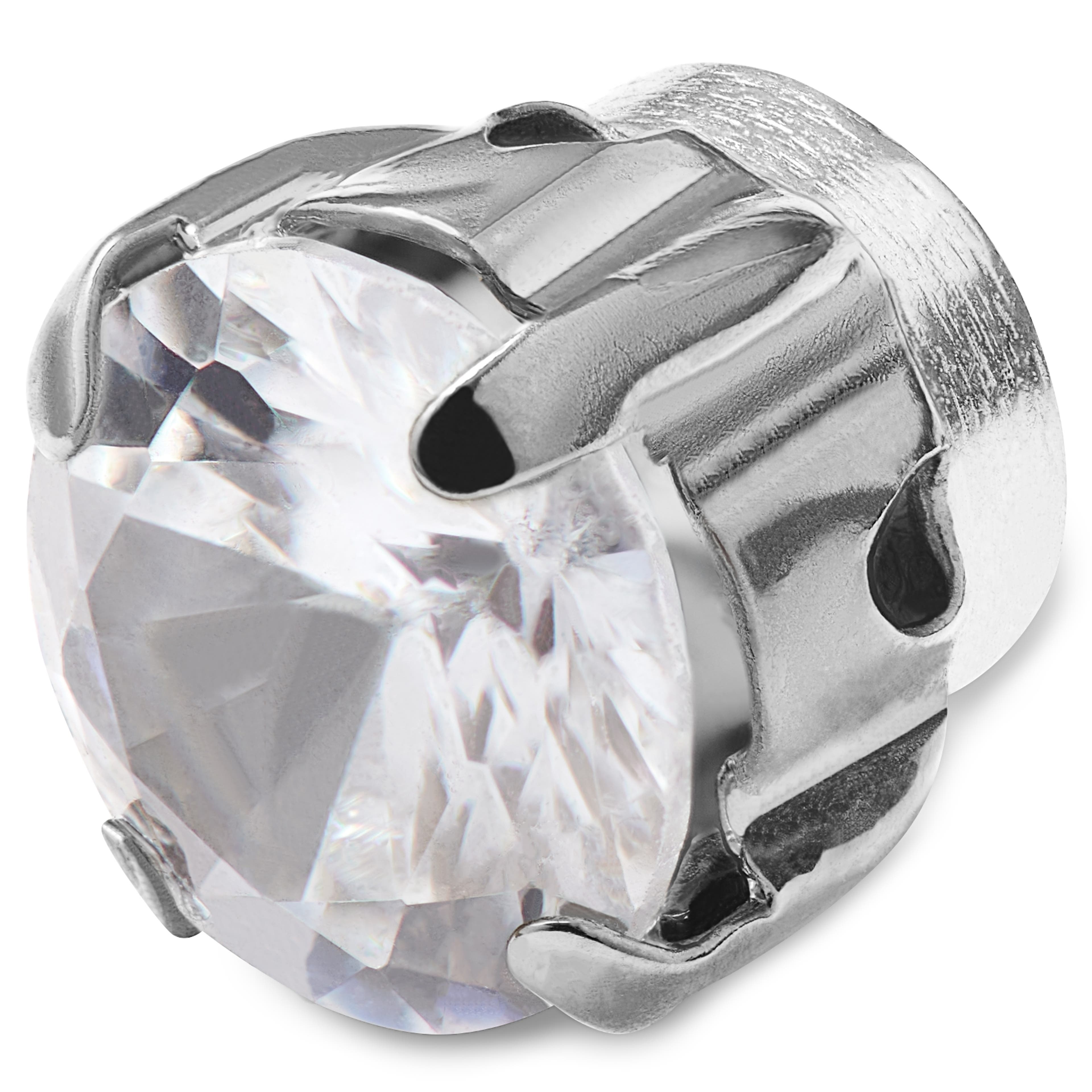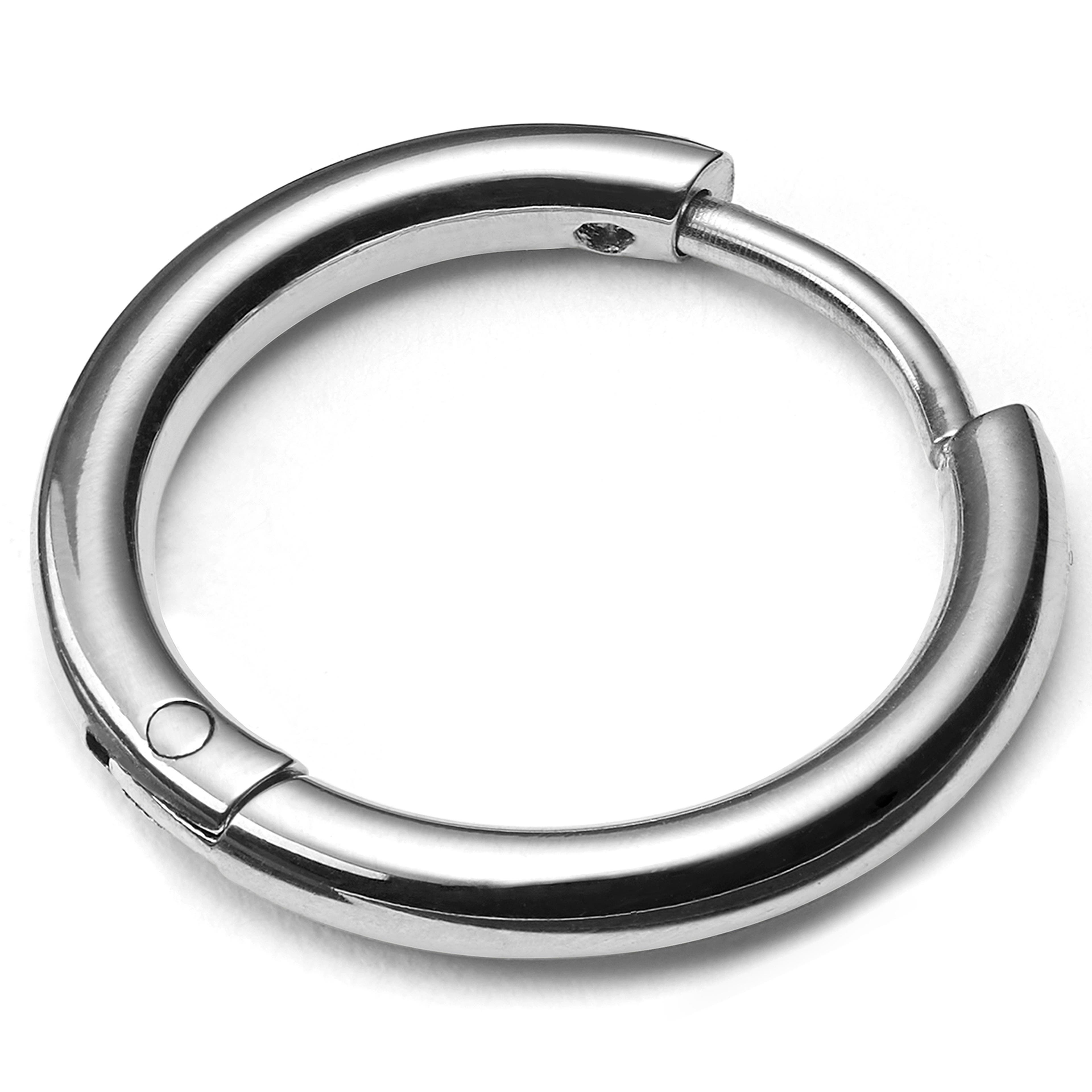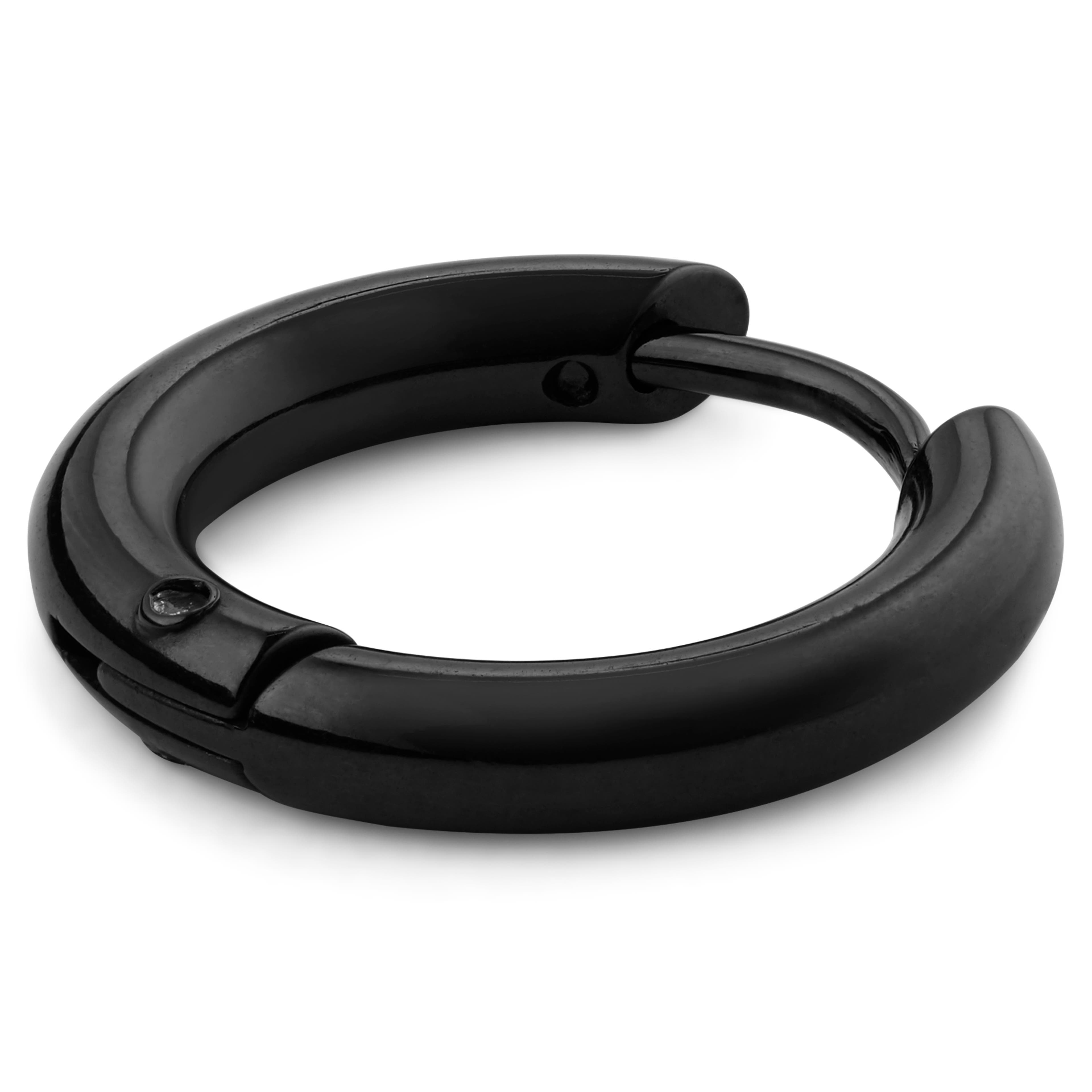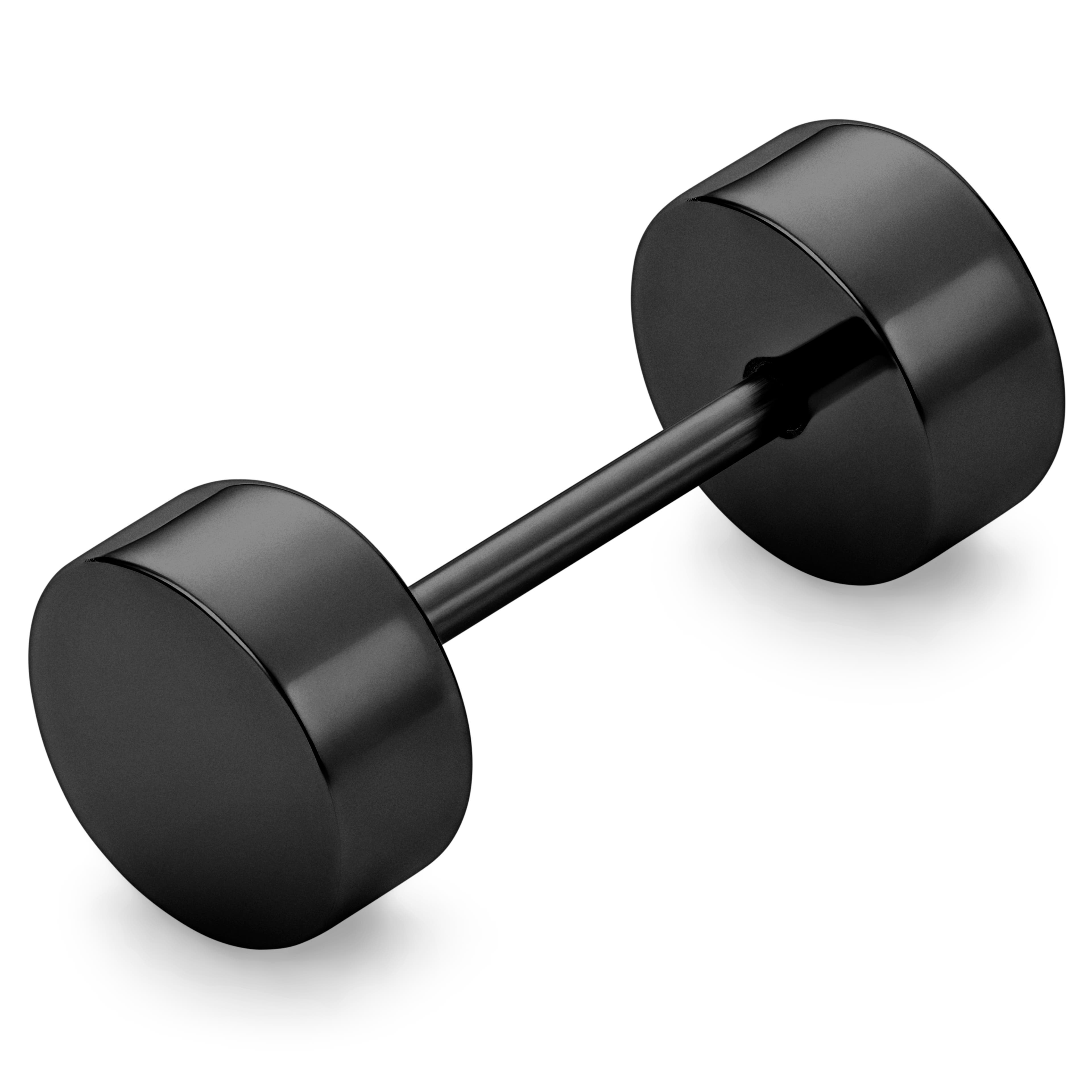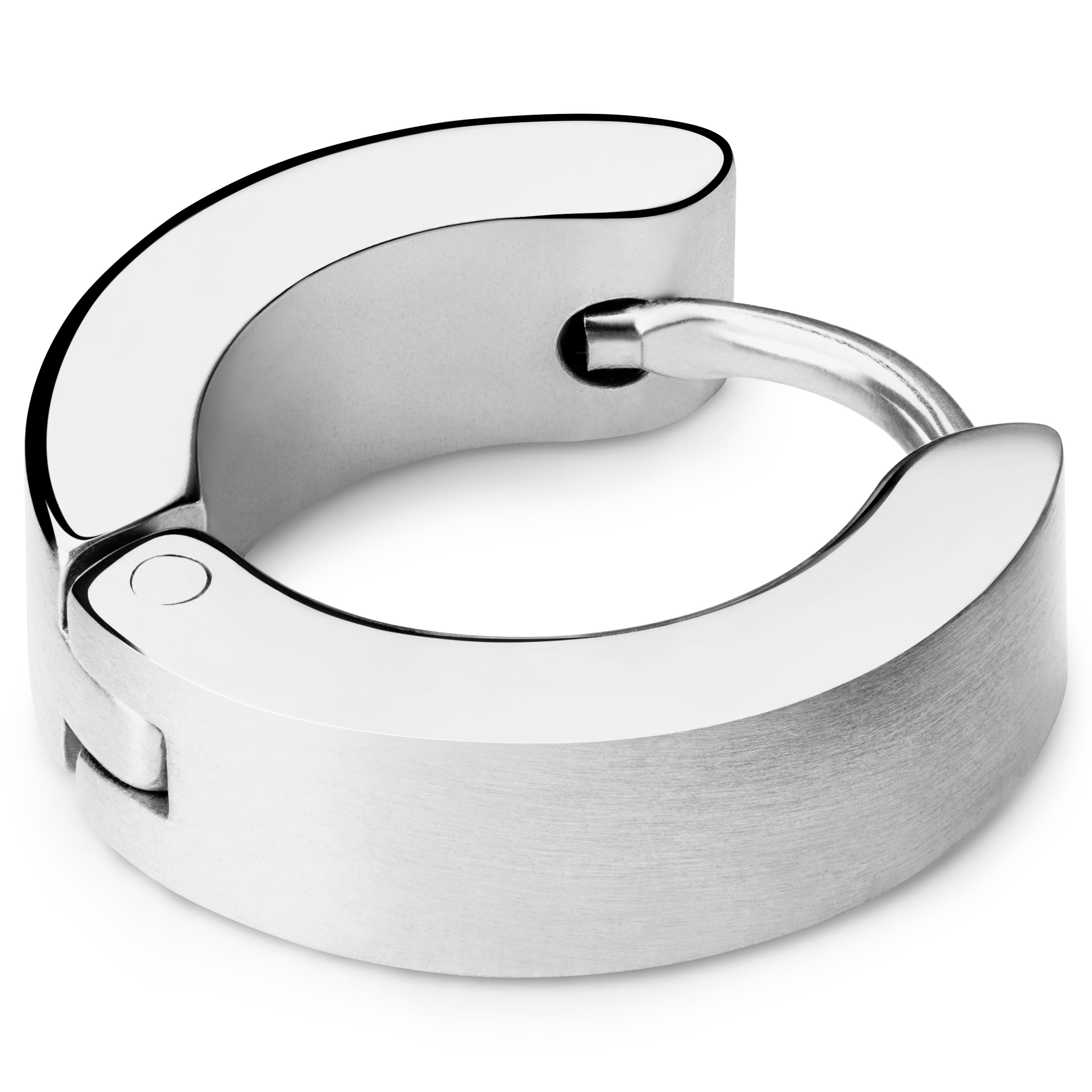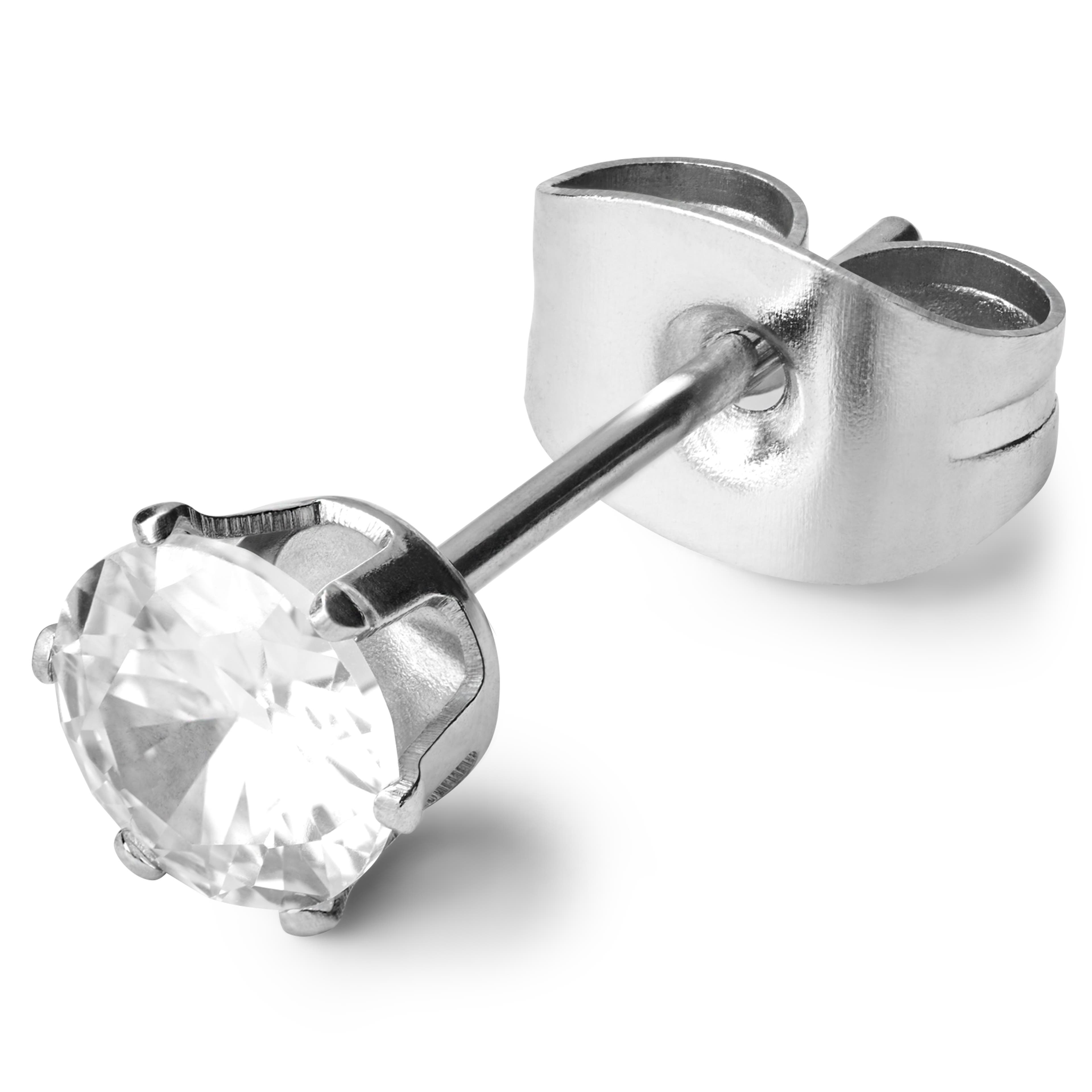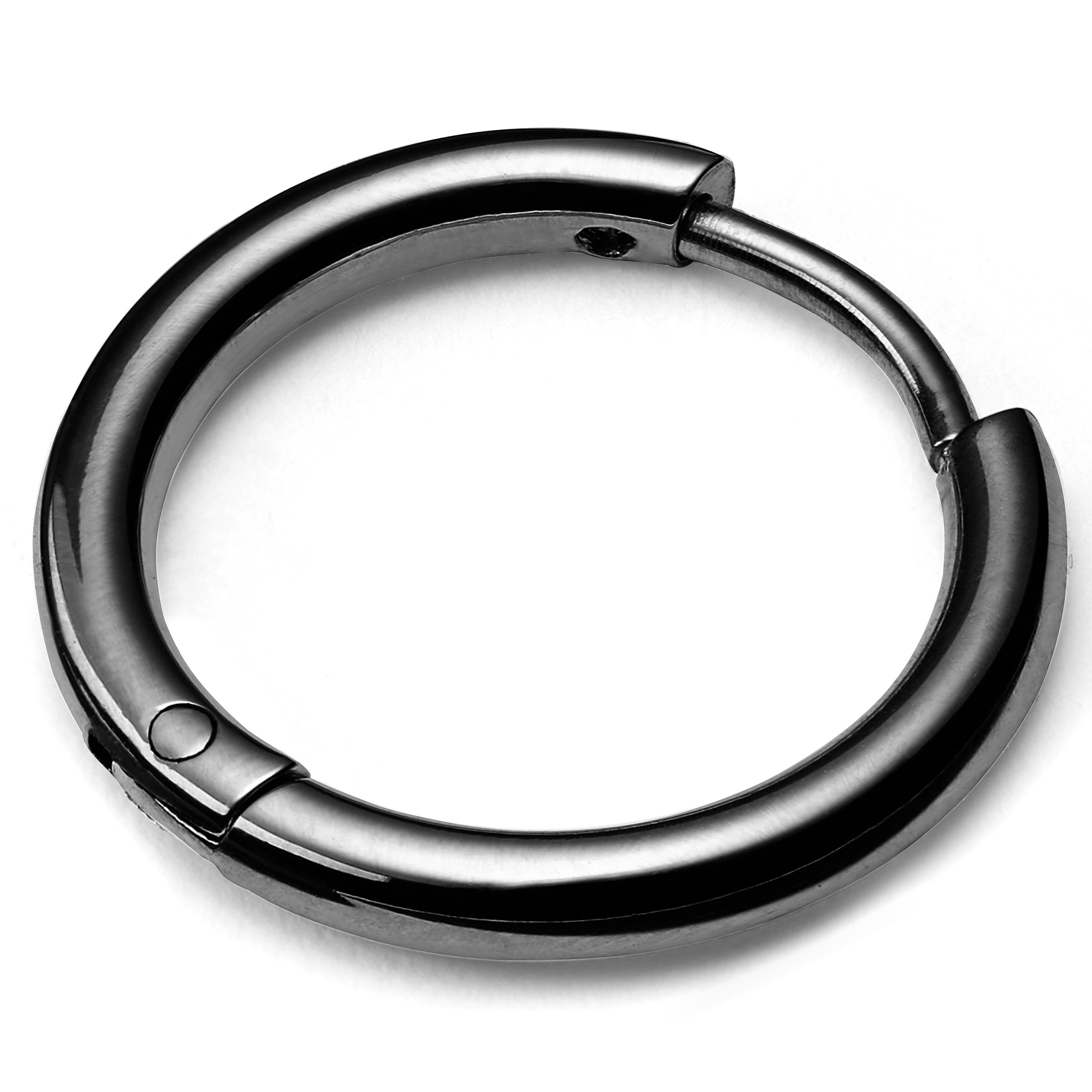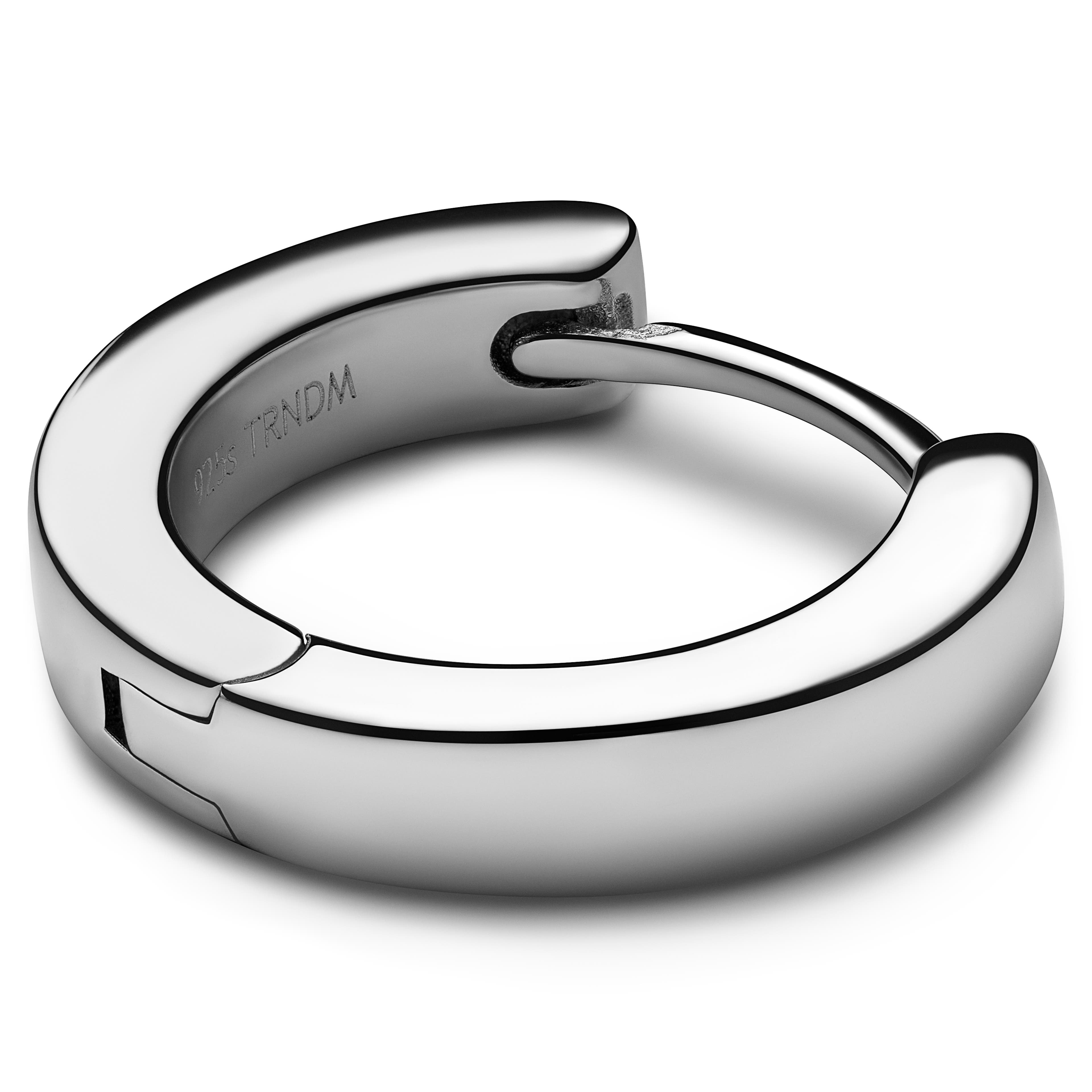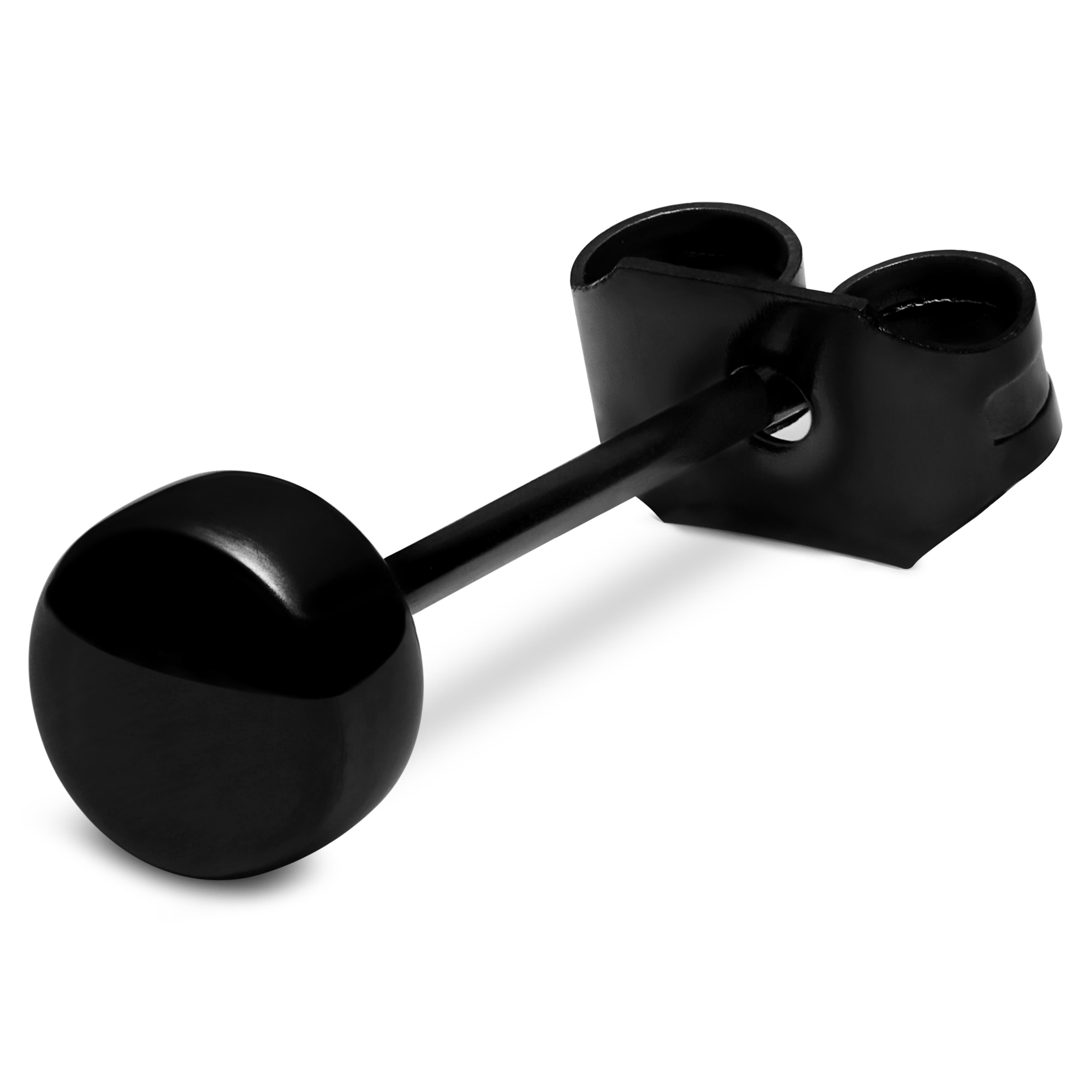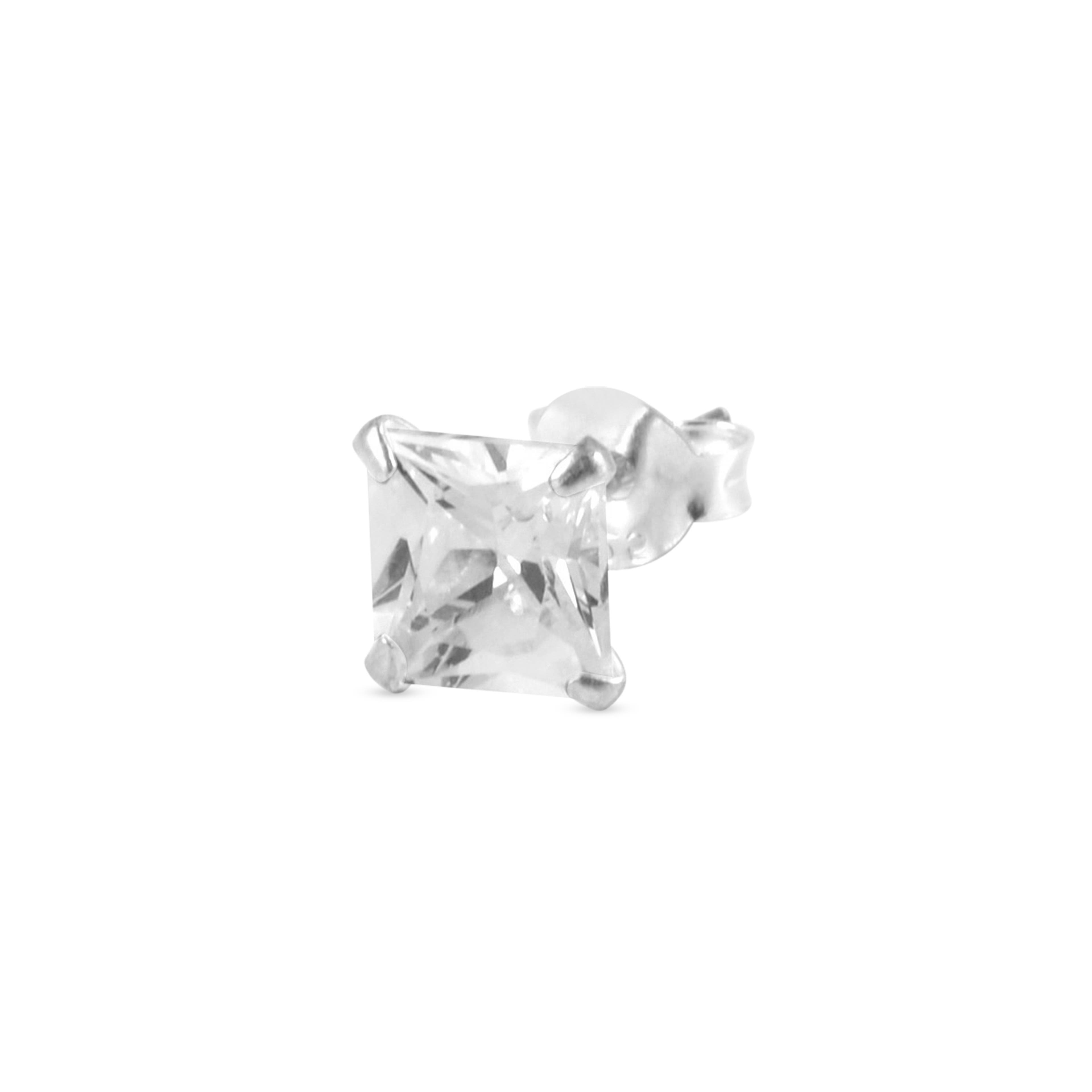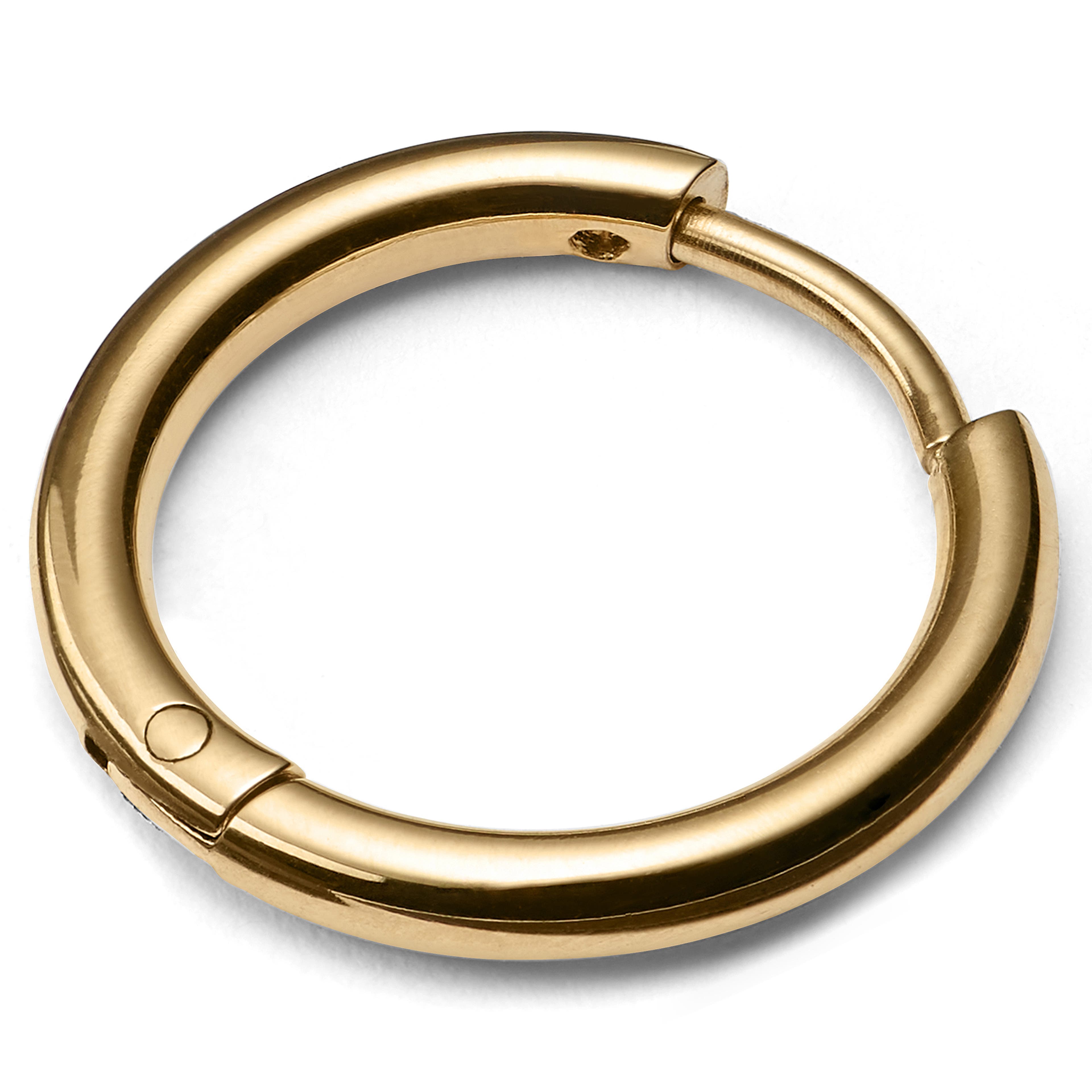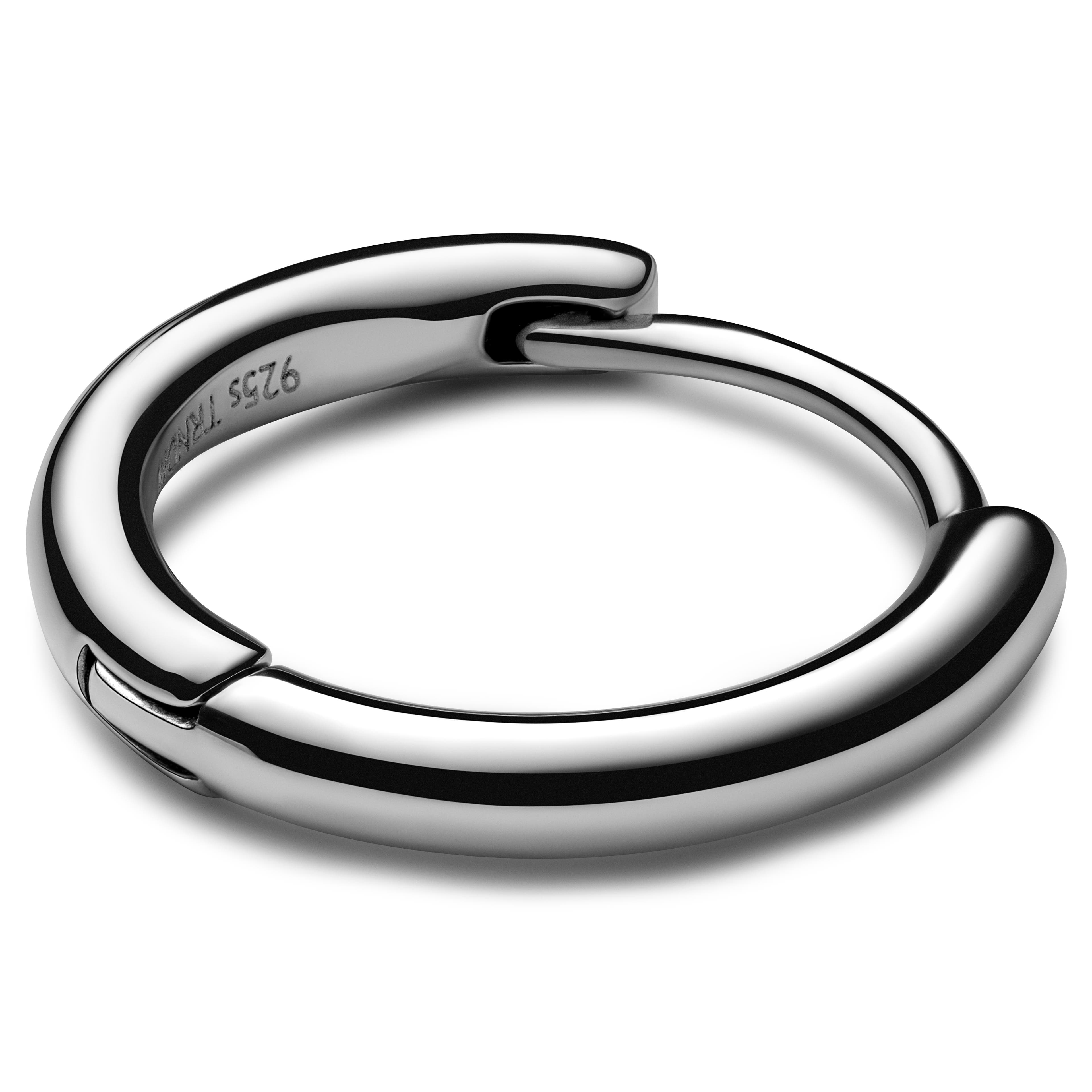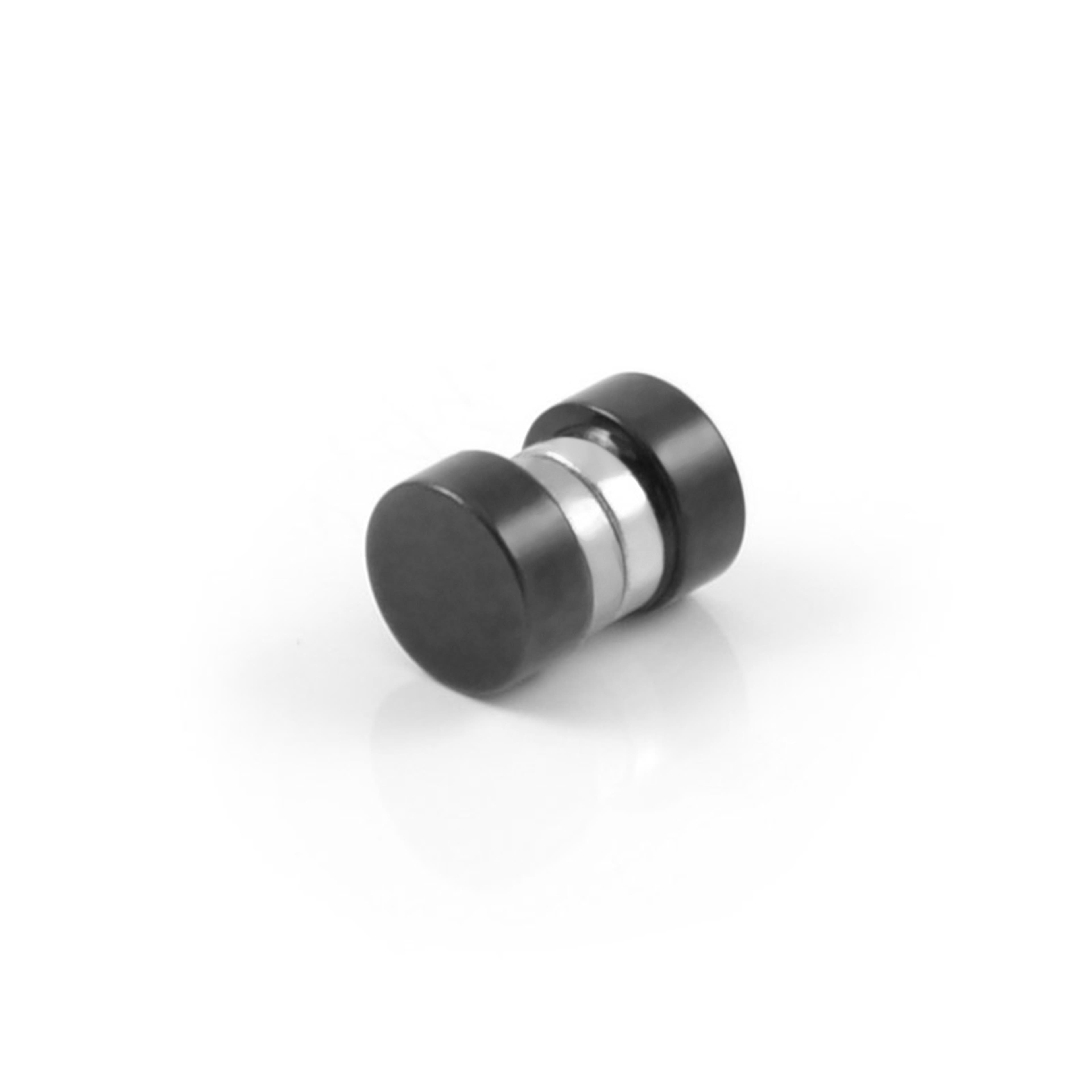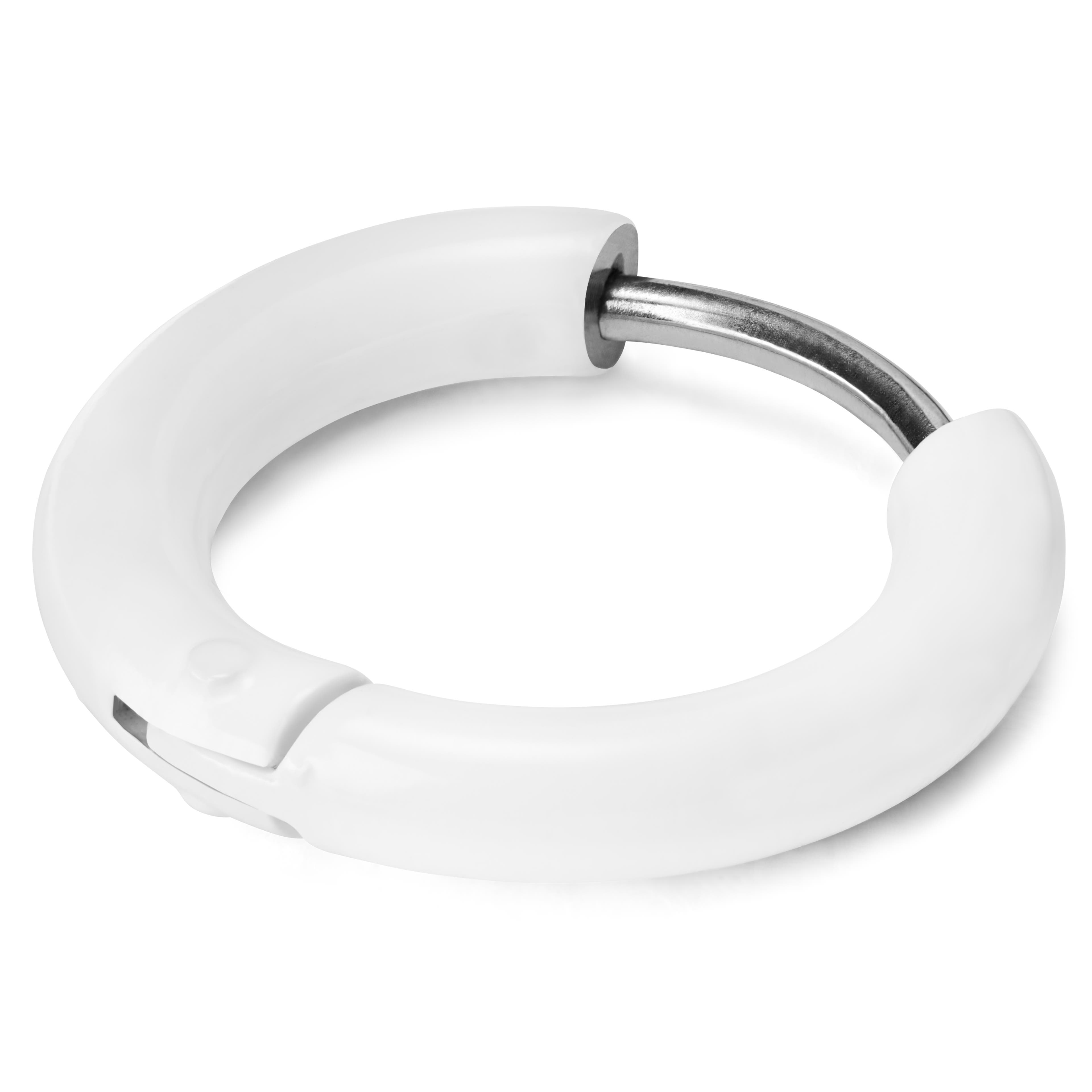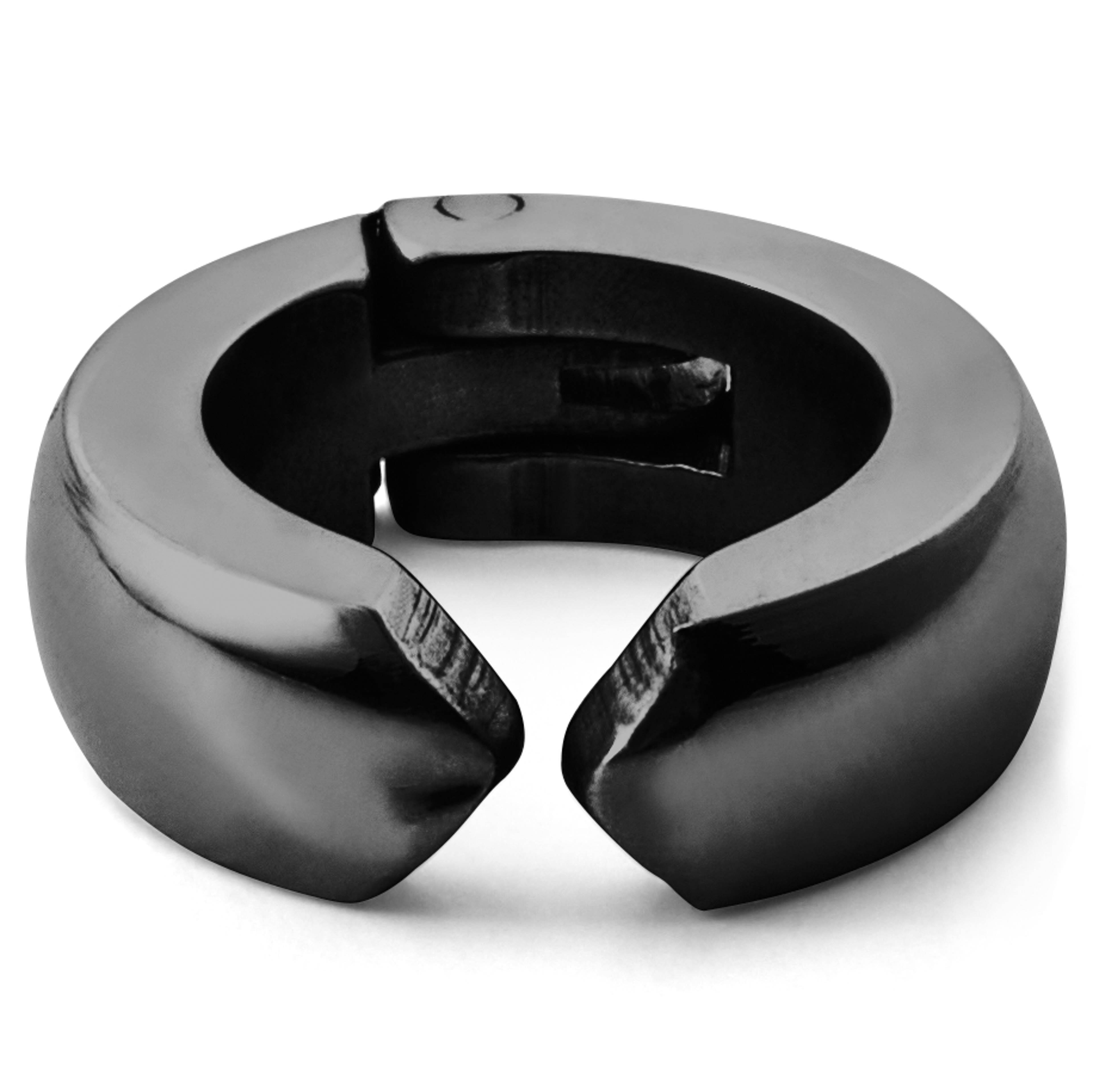Ear Piercing Guide for Men
Everything you need to know to get your ears pierced – from types of earrings to the piercing process and all the other stuff in between. With expert advice from Hank Martin, Professional Body Piercer.

We probably all know ‘that’ guy. The one who had a little too much to drink at the summer music festival and woke up with a piercing… and maybe a tattoo. We’ve created this guide to keep you from being that guy.
And since we’re not experts in piercing, we asked Hank Martin from Benny Black Tattoo for his guidance. With over 10 years of piercing experience and a body of work that speaks for itself, we’re confident he’s the guy to learn from.
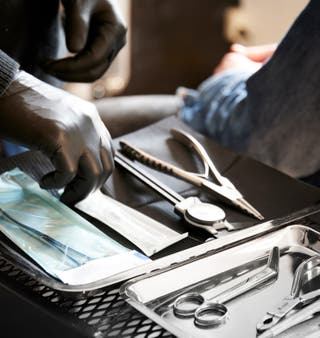
Find the Right Studio & Get Ready
One of the most important steps in the piercing process is the research you do before meeting the needle.
“When researching the studio, look at some of their online reviews and see if they have pictures of their work,” says Hank, whose official title is that of Professional Body Piercer. “Call and ask about their sterilization procedures for piercing tools and if they use single-use needles. Also, ask what their jewelry is made from. All piercing jewelry should be made of surgical stainless steel, titanium, 14k gold, PMFK Bioplast (a type of medical grade plastic) or natural wood or stone (for stretched ears).”
If equipment is not new or properly sterilised, or if proper hygienic guidelines are not followed, blood-borne diseases, like hepatitis B and C, may be transmitted. Ask yourself the following questions before scheduling an appointment.
- “Does the studio feel clean? Do they have separate areas for piercing and tattooing?”
- “Is an autoclave used to sterilize equipment? An autoclave is like a pressure cooker. It uses steam, heat, and pressure to sterilize items. If the studio doesn’t have one (or gas or heat sterilizer), I would seriously not get pierced there.”
- “Will they open needles in front of you before the piercing begins? I only use single-use pre-sterilised needles. Safety is paramount.”
- “Does your piercer wear latex gloves? They should always wear gloves and sanitize their station after every customer. If I touch something outside of the sterilized area, I change gloves.”
- “Do they use a piercing gun? Any professional piercer will only use a needle for piercing. If they use a gun, they are not professionals.”
- “Do you feel uncomfortable in the studio? Any shop with good sterilization procedures should have no problem showing their autoclave and explaining their procedures. Does something feel a little off? If you’re not feeling it… leave! ”
Once you’ve found the studio and scheduled the appointment, “prepare for a piercing by refraining from excessive drinking and smoking a few days before the procedure. And make sure you’ve had a shower and are clean – especially the area to be pierced.”
Types of Ear Piercing
The choices are overwhelming. Locating a professional piercer who can shed light on topics such as pain, cost and how to properly look after these different types is extremely helpful.
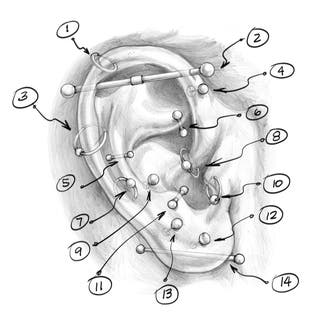
- Helix – Hole in the upper cartilage
- Industrial – Two auricle holes are connected by one piece of jewelry
- Auricle – Hole on the rim of the cartilage near the outer ear
- Forward Helix – Forward facing puncture in the upper cartilage
- Snug – Puncture of the vertical part in the inner cartilage area, above the antitragus
- Rook – Puncture of the thick wrinkle of the cartilage in the inner ear
- Orbital – Two cartilage holes linked by one piece of jewelry, usually located in the helix area
- Daith – Hole in the inner ear cartilage
- Conch – Inner or outer puncture of the cartilage in the cup-shaped area
- Tragus – Hole in a part of cartilage, in the central part of an ear
- Antitragus – Hole in the inner ear cartilage opposed to the tragus
- Earlobe – Hole in the lower part of the lobe.
- Upper Lobe – Hole in the upper part of the lobe.
- Transverse Lobe – Horizontal hole through the earlobe
Does it hurt to get a piercing?
Hank, with lobes stretched to 20 mm and a pierced septum, is no stranger to pain for the sake of the result you want. “All piercing hurts to one degree or another. The pain should only last a second but the area may stay tender for a week or so. Earlobes are the least painful… with nipple piercings being pretty tough.”
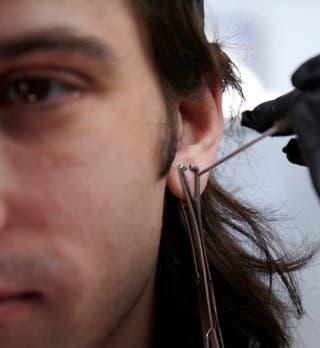
Looking After Your Piercing
Depending on placement, “the healing process can range from 2-6 weeks for an earlobe and 6-12 months for a navel piercing”. For every client who gets pierced at Benny Black, Hank recommends “using an unscented antibacterial soap 2 times a day and a saltwater solution soak 2-4 times a day.”
Keeping infection at bay is worth the extra effort. For the saltwater solution, most pharmacies sell a saltwater-based wound wash perfect for this. Ask your piercer for more information.
- Do not touch or pick at the piercing or jewelry. Dirty hands carry germs and germs cause infection. Wash your hands thoroughly before touching ears or earrings.
- Do not forget about newly-pierced ears during ordinary daily activities. Avoid bumping your ears when changing clothes, putting on glasses, using the phone, or styling your hair.
- Be conscious of your sleep. You may not be able to put your head down on the side of a new piercing.
- Do not use hydrogen peroxide or alcohol on piercings. These products can irritate the healing tissue.
- Do not use antibiotic ointments, gels, or creams on piercings. They can trap dirt and prevent air from reaching the area.
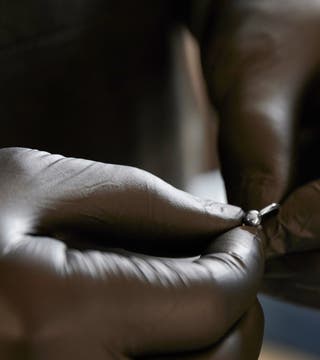
What to do with an infected piercing?
Surprisingly to us, Hank suggests not taking out a piercing if you think it’s infected. “If you think you have an infection, contact your piercer and talk to them about options. DO NOT take it out. If you do, the skin could heal over the infection and cause more problems. Often the issue is in the cleaning procedure or the type of cleaner.
In many cases, an infection is caused by touching the jewelry and/or piercing with dirty hands and/or not washing your bedding regularly. Bacteria spread like oil on water, so always make sure your hands are clean before touching your piercing and that bedding is washed and changed regularly. Also, an infection can start when it’s hot outside and you sweat more. In this case, it helps to clean it more often with the saltwater solution.”
The good news is that there are steps you can take to avoid infection in the first place.
- Keep the pierced area away from other people’s body fluids, such as saliva and sweat. Do not let anyone touch, kiss or lick the piercing while it is still healing.
- Keep clean your phone, earbuds,
sunglasses, hat, bike helmet and anything that comes in contact with the piercing. - Avoid using cosmetics, lotions, and hairspray near the piercing.
- Do not soak in a hot tub or swim in a pool or lake until you’ve healed.
- Avoid direct sunlight, tanning beds, sand, tanning oils, and lotions. These can burn and irritate the piercing.
- Lower your stress, avoid smoking, drugs, and alcohol as they negatively affect healing.
How can I keep my piercing open without visible jewelry?
We know not every workplace appreciates an earring. Hank suggests asking to see if a retainer would be acceptable for work. “It’s a clear Bioplast (plastic) retainer stud with a small flat disc on both ends.” If your job won’t allow that, “remove the earring while at work and put it back in as soon as you leave the building.”
Worried that the hole will grow up while you’re busy with paperwork? “If you’ve only had it for a short time, the hole could close up within a day if left out. Especially if it was done with a piercing needle which doesn’t damage the skin as much as a gun. If you’ve had it for a year or more, you may get away with a few days, but even then it may close if the tissue is healthy.”
Taking Care of Your Earrings
“Do not take out your earring during the healing process. Following the after-care procedures is what prevents an infection. After it is healed there is little chance of infection, but your earrings should be cleaned once in a while to keep them from smelling. To clean them, soak them in a small glass container with antibacterial soap and water, then use a delicate jewelry brush and rinse thoroughly.”
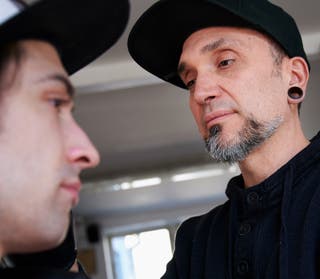
Now for the fun part! Your piercer may have a specific recommendation for the first piercing and you should certainly heed his/her warning. Once you are allowed to change it… the sky's the limit! Finding the earring that bests tells your story is way more fun than worrying about autoclaves and saline soaks.
You Asked – We Answered
When did ear piercing start?
The first piercing known to man was actually on a man. Ötzi the Iceman is an ancient mummy found frozen in the Alps. Thought to be around 5,300 years old, he had tattoos and a piercing. A regular rockstar of his day.
The Bible mentions ear piercing and it was popular in the late 1500s during the English Renaissance (Shakespeare, anyone?) At some point, it became a ladies-only thing, but it’s now regained popularity and seems to be here to stay.
Where can I get my ear pierced?
This depends on where you live. If you’re ever in Denmark, we suggest working with Hank Martin at Benny Black Tattoo. And he’s in Horsens… so are we! Stop by and say hello.
What’s the current trend for men’s earrings?
“Men seem to prefer a stud in my shop. Technically it's a labret stud, which consists of a stem, a disc on one end and a metal ball on the other.”
Does the price reflect the quality?
“In terms of the piercing, the price usually reflects what people charge in that area of your country and/or city. In terms of jewelry, a piercer should be using piercing-grade jewelry and the price difference usually is due to it having an added decorative feature, like a jeweled end. That said, if someone is charging really low rates compared to other shops, it may be a reflection of the quality of jewelry they purchase.”
How long do ear piercings take to heal?
Healing time depends on placement, “the healing process is around 2-6 weeks for an earlobe piercing.” Ask your piercer for more information.
Why do my ear piercings smell?
This smell may be a result of skin cells, natural body oils, and bacteria. Mix these 3 up and you’re in for a wild, smelly ride. Cleaning the piercing with soap or a saline solution will usually get rid of it.
If your piercing is red, sore or leaking gunk everywhere… it’s probably infected and you need to see a professional.
Are ear piercing guns safe? or are piercing needles the way to go?
“A piercing gun forces a blunt object through your skin causing damage to the tissue and can result in a keloid scar (a bump on the back of your ear). Also, you cannot put a gun through an autoclave, so they only use a sanitizing liquid or wipe to clean it. This can lead to bacteria and blood-borne viruses not being fully removed from the tool.”
In contrast, “a piercing needle can be sterilized. It’s also very sharp and causes much less damage to the area being pierced. The chances of keloid scarring are very minimal.”
Can an ear piercing help migraines?
Some people claim that an ear piercing – a daith piercing, to be exact – can reduce migraines because it hits a particular pressure point. However, there is no scientific evidence to back up this claim.
Will ear piercing infections spread?
If you find a bleeding, swollen or painful piercing that doesn’t improve with regular cleaning… it’s probably infected. Consult a health care professional for advice.
It is rare for a piercing infection to spread throughout the body. But we’re not running a medical clinic here! By all means, get it checked out by a pro.
Do ear piercings close?
Yes. And aren’t we lucky that they do. Imagine if holes never closed… we’d all be terrified of splinters! “The piercing hole will often heal back together if you take out the jewelry. As long as the tissue wasn’t damaged and it is not stretched to a large size, it will generally close back up.”
Do ear piercings leave scars?
Scars can occur with the blunt trauma caused by a piercing gun. Whether or not you will have a scar depends on your body and how the piercing was performed.
What ear piercing should I get?
Well, that’s up to you and the story you want to tell. Your piercer may have a requirement for your first earring based on material, weight, etc… so listen to him/her.
For the earring after that, take a look at our selection. We’ve organized them based on popularity. Sometimes knowing what other guys like helps with decisions like this. Either way, it boils down to this – wear it with confidence.

Meet Hank Martin – Professional Piercer
Hank Martin comes from Austin, Texas (USA) and has lived and worked in Denmark and Germany for 5+ years. He has over a decade of experience in the piercing industry and prides himself on precision, cleanliness, and professionalism.
Hank strives to create a fun and inviting atmosphere for his clients so they can have the best experience possible. In Denmark, find him at Benny Black Tattoo.
